
フードゥー
Hoodoo (spirituality)

☆ フードゥーは、より広い文脈では、精神的な慣習、伝統、信念の集合体として機能する民族宗教であり、南部の米国で奴隷として働かされていたアフリカ系ア メリカ人が、アフリカの伝統的な精神性やアメリカ先住民の植物知識の要素から発展させた、呪術的およびその他の儀式的な慣習を含むものである。フードゥー の実践者は、ルーツワーカー、コンジャー[まじない]・ドクター、コンジャー・マンまたはコンジャー・ウーマン、ルーツ・ドクターと呼ばれる。 フードゥーの地域的な同義語には、ルーツ、ルーツワーク、コンジャーなどがある。自律的な精神体系として、奴隷として連れてこられた西アフリカのイスラ ム教徒が持ち込んだイスラム教やスピリチュアリズムの信仰と融合することが多かった。学者たちはフードゥーを民間信仰と定義している。 フードゥー教を独立した宗教として信仰する者もいれば、アフリカ土着の精神世界とアブラハムの宗教との混成宗教として信仰する者もいる。 多くのフードゥーの伝統は、中央アフリカのバコンゴ族の信仰から影響を受けている。大西洋を横断する奴隷貿易の最初の1世紀の間、アメリカ大陸に運ばれ た奴隷となったアフリカ人の推定52%が、現在のカメルーン、コンゴ、アンゴラ、中央アフリカ共和国、ガボンの国境内に存在した中央アフリカ諸国から来た 人々であった。アフリカ系アメリカ人の大移動に続いて、南部のフードゥーがアメリカ全土に広がったが、フードゥーは黒人が自主的、非自主的に定住した あらゆる場所で実践されていた。
★Not to be confused with Voodoo. For other uses of "Hoodoo", see Hoodoo (disambiguation)./ ヴードゥーとは混同されない。「フードゥー」の他の用法については、フードゥー(曖昧さ回避)を参照のこと。
| Hoodoo
is an
ethnoreligion that, in a broader context, functions as a set of
spiritual observances, traditions, and beliefs—including magical and
other ritual practices—developed by enslaved African Americans in the
Southern United States from various traditional African spiritualities
and elements of indigenous American botanical knowledge.[1][2][3]
Practitioners of Hoodoo are called rootworkers, conjure doctors,
conjure men or conjure women, and root doctors. Regional synonyms for
Hoodoo include roots, rootwork and conjure.[4] As an autonomous
spiritual system it has often been syncretized with beliefs from Islam
brought over by enslaved West African Muslims, and Spiritualism.[5][6]
Scholars define Hoodoo as a folk religion. Some practice Hoodoo as an autonomous religion, some practice as a syncretic religion between two or more cultural religions, in this case being African indigenous spirituality and Abrahamic religion.[7][8] Many Hoodoo traditions draw from the beliefs of the Bakongo people of Central Africa.[9] Over the first century of the trans-Atlantic slave trade, an estimated 52% of all enslaved Africans transported to the Americas came from Central African countries that existed within the boundaries of modern-day Cameroon, the Congo, Angola, Central African Republic, and Gabon.[10] Following the Great Migration of African Americans, southern Hoodoo spread throughout the United States, although Hoodoo was practiced everywhere that Black people settled, voluntarily or involuntarily. |
フードゥーは、より広い文脈では、精神的な慣習、伝統、信念の集合体
として機能する民族宗教であり、南部の米国で奴隷として働かされていたアフリカ系アメリカ人が、アフリカの伝統的な精神性やアメリカ先住民の植物知識の要
素から発展させた、呪術的およびその他の儀式的な慣習を含むものである。[1][2][3]
フードゥーの実践者は、ルーツワーカー、コンジャー・ドクター、コンジャー・マンまたはコンジャー・ウーマン、ルーツ・ドクターと呼ばれる。フードゥーの
地域的な同義語には、ルーツ、ルーツワーク、コンジャーなどがある。[4]
自律的な精神体系として、奴隷として連れてこられた西アフリカのイスラム教徒が持ち込んだイスラム教やスピリチュアリズムの信仰と融合することが多かっ
た。[5][6] 学者たちはフードゥーを民間信仰と定義している。 フードゥー教を独立した宗教として信仰する者もいれば、アフリカ土着の精神世界とアブラハムの宗教との混成宗教として信仰する者もいる。 多くのフードゥーの伝統は、中央アフリカのバコンゴ族の信仰から影響を受けている。[9] 大西洋を横断する奴隷貿易の最初の1世紀の間、アメリカ大陸に運ばれた奴隷となったアフリカ人の推定52%が、現在のカメルーン、コンゴ、アンゴラ、中央 アフリカ共和国、ガボンの国境内に存在した中央アフリカ諸国から来た人々であった。[10] アフリカ系アメリカ人の大移動に続いて、南部のフードゥーがアメリカ全土に広がったが、フードゥーは黒人が自主的、非自主的に定住したあらゆる場所で 実践されていた。 |
| Etymology The first documentation of the word "Hoodoo" in the English language appeared in 1870.[11][12] Its origins are obscure. Still, some linguists believe it originated as an alteration of the word Voodoo – a word that has its origin in the Gbe languages such as the Ewe, Adja, and Fon languages of Ghana, Togo, and Benin – referring to divinity.[13][14] Another possible etymological origin of the word Hoodoo comes from the word Hudu, meaning "spirit work," which comes from the Ewe language spoken in the West African countries of Ghana, Togo, and Benin.[15] Hudu is one of its dialects.[16] According to Paschal Beverly Randolph, the word Hoodoo is from an African dialect.[17] The origin of the word Hoodoo and other words associated with the practice could be traced to the Windward Coast and Senegambia. For example, in West Africa, the word gris-gris (a conjure bag) is a Mande word.[18] The words wanga and mooyo (mojo bag) come from the Kikongo language.[15] Recent scholarly publications spell the word with a capital letter. The word has different meanings depending on how it is spelled. Some authors spell Hoodoo with a capital letter to distinguish it from commercialized hoodoo, which is spelled with a lowercase letter. Other authors have different reasons why they capitalize or lowercase the first letter.[19][20] |
語源 英語における「フードゥー」という語の最初の記録は1870年に登場している。[11][12] その起源は不明である。しかし、一部の言語学者は、ガーナ、トーゴ、ベナンのエウェ語、アジャ語、フォン語などのグベ語派に起源を持つ神を指す「ヴー ドゥー」という語が変化したものであると考えている。[13][14] フードゥーという語のもう一つの語源は、西アフリカのガーナ、トーゴ、ベナンで話されているエウェ語に由来する「霊的な仕事」を意味するHuduという 語である。[15] Huduは方言の一つである。[16] パスカ・ランドルフによると、フードゥーという語はアフリカの方言に由来する。[17] フードゥーという言葉の起源と、この信仰に関連するその他の言葉の起源は、ウィンドワード・コーストとセネガンビアに遡ることができる。例えば、西アフリ カでは、グリグリ(おまじない袋)という言葉はマンデ族の言葉である。 ワングァとムヨ(モジョ・バッグ)という言葉は、キコンゴ語に由来する。 最近の学術出版物では、この単語は大文字で表記されている。この単語は、その表記方法によって異なる意味を持つ。一部の著者は、商業化されたフードゥー (小文字で表記される)と区別するために、フードゥーを大文字で表記している。他の著者は、最初の文字を大文字または小文字にする理由を異にする。 [19][20] |
| History Antebellum era See also: Antebellum South  Many Hoodoo practices were hidden in Black churches during and after slavery for African Americans to protect themselves. Scholars call the practice of Hoodoo in Black churches the invisible institution because enslaved Black people concealed their culture and practices from whites within the Christian religion.[21][22] According to Yvonne Chireau, "Hoodoo is an African American-based tradition that makes use of natural and supernatural elements in order to create and effect change in the human experience.."[23] Hoodoo was created by African Americans, who were among over 12 million enslaved Africans from various Central and West African ethnic groups transported to the Americas from the 16th to 19th centuries (1514 to 1867) as part of the transatlantic slave trade.[24] The transatlantic slave trade to the United States occurred between 1619 and 1808, and the illegal slave trade in the United States occurred between 1808 and 1860. Between 1619 and 1860 approximately 500,000 enslaved Africans were transported to the United States.[25] From Central Africa, Hoodoo has Bakongo magical influence from the Bakongo religion[26] incorporating the Kongo cosmogram, Simbi water spirits, and Nkisi and Minkisi practices.[27] The West African influence is Vodun from the Fon and Ewe people in Benin and Togo, following some elements from the Yoruba religion.[28][29] After their contact with European slave traders and missionaries, some Africans converted to Christianity willingly. At the same time, other enslaved Africans were forced to become Christian, which resulted in a syncretization of African spiritual practices and beliefs with the Christian faith.[30] Enslaved and free Africans learned regional indigenous botanical knowledge after they arrived in the United States.[31] The extent to which Hoodoo could be practiced varied by region and the temperament of enslavers. For example, the Gullah people of the coastal Southeast experienced an isolation and relative freedom that allowed the retention of various traditional West African cultural practices. Among the Gullah people and enslaved African Americans in the Mississippi Delta, where the concentration of enslaved people was dense, Hoodoo was practiced under an extensive cover of secrecy.[32][33][34] The reason for secrecy among enslaved and free African Americans was that slave codes prohibited large gatherings of enslaved and free Black people. Enlavers experienced how slave religion ignited slave revolts among enslaved and free Black people, and some leaders of slave insurrections were Black ministers or conjure doctors.[35] |
歴史 南北戦争前 南北戦争前の南部も参照  多くのフードゥー教の慣習は、奴隷制時代および奴隷制廃止後、アフリカ系アメリカ人が自分自身を守るためにブラック教会に隠されていた。学者たちは、ブ ラック教会におけるフードゥー教の慣習を「見えない制度」と呼んでいる。なぜなら、奴隷として黒人たちはキリスト教の宗教の中で、自分たちの文化や慣習 を白人に隠していたからである。[21][22] イボンヌ・チローによれば、「フードゥーは、自然や超自然的な要素を活用して、人間の経験に変化を生み出し、影響を与えるアフリカ系アメリカ人の伝統で ある」[23] フードゥーは、16世紀から19世紀(1514年から1867年)にかけて大西洋奴隷貿易の一環として、中央および西アフリカのさまざまな民族グループ に属する1200万人以上の奴隷としてアメリカ大陸に連れて来られたアフリカ人たちによって生み出された 16世紀から19世紀(1514年から1867年)にかけて、大西洋奴隷貿易の一環として、さまざまな中央および西アフリカの民族グループに属する 1200万人以上の奴隷としてアメリカ大陸に移送された。[24] アメリカ合衆国への大西洋奴隷貿易は1619年から1808年にかけて行われ、アメリカ国内での違法な奴隷貿易は1808年から1860年にかけて行われ た。1619年から1860年の間に、およそ50万人の奴隷としてアフリカ人が米国に連れてこられた。[25] 中央アフリカから、フードゥーはバコンゴの呪術的影響を受けている。バコンゴ宗教は、 宇宙図、Simbiの水の精霊、NkisiとMinkisiの慣習を取り入れている。[27] 西アフリカの影響は、ベナンとトーゴのフォン族とエウェ族のVodunであり、ヨルバ族の宗教からいくつかの要素を受け継いでいる。[28][29] ヨーロッパの奴隷商人や宣教師と接触した後、一部のアフリカ人は自らキリスト教に改宗した。同時に、他の奴隷となったアフリカ人はキリスト教に改宗するこ とを強制され、その結果、アフリカの精神的な慣習や信仰とキリスト教信仰との習合が生じた。[30] 奴隷となったアフリカ人と自由のアフリカ人は、アメリカ合衆国に到着した後、地域の土着の植物に関する知識を学んだ。[31] フードゥーがどの程度実践されたかは、地域や奴隷所有者の気質によって異なっていた。例えば、アメリカ南東部の沿岸地域に住むガラ族の人々は、孤立した 環境で相対的な自由を経験し、さまざまな西アフリカの伝統文化を維持することができた。奴隷の人口が密集していたミシシッピ・デルタのガラ族や奴隷のアフ リカ系アメリカ人の間では、フードゥーは広範囲にわたって秘密裏に行われていた。[32][33][34] 奴隷および自由のアフリカ系アメリカ人の間で秘密裏に行われていた理由は、奴隷法が奴隷および自由の黒人たちの大規模な集会を禁じていたためである。奴隷 制の宗教が奴隷と自由の身となった黒人の間で奴隷反乱に火をつけることを、奴隷制の加害者は経験しており、奴隷反乱の指導者の中には黒人牧師や呪術医もい た。[35] |
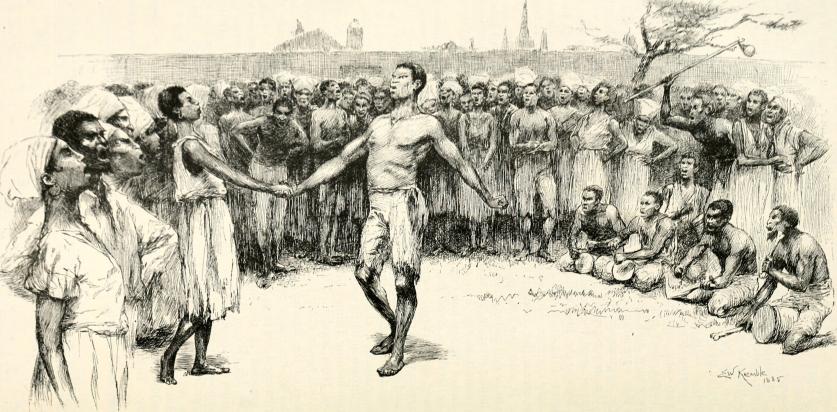 During the slave trade, the majority of Central Africans imported to New Orleans, Louisiana, were Bakongo people. This image was painted in 1886 and shows African Americans in New Orleans performing dances from Africa in Congo Square. Congo Square was where African Americans practiced Voodoo and Hoodoo.[36] The Code Noir was implemented in 1724 in French colonial Louisiana. It regulated the lives of enslaved and free people and prohibited and made it illegal for enslaved Africans to practice their traditional religions. Article III in the Code Noir states: "We forbid any public exercise of any religion other than Catholic."[37] The Code Noir and other slave laws resulted in enslaved and free African Americans conducting their spiritual practices in secluded areas such as woods (hush harbors), churches, and other places.[38] Slaves created methods to decrease their noise when they practiced their spirituality. In a slave narrative from Arkansas, enslaved people prayed under pots to prevent nearby white people from hearing them at such times. A formerly enslaved person in Arkansas named John Hunter said the enslaved people went to a secret house only they knew and turned the iron pots face up so enslavers could not hear them. They would place sticks under wash pots about a foot from the ground because "[I]f they'd put it flat on the ground the ground would carry the sound."[39] Formerly enslaved person and abolitionist William Wells Brown wrote in his book, My Southern Home, or, The South and Its People, published in 1880, about the life of enslaved people in St. Louis, Missouri. Brown recorded a secret Voudoo ceremony at midnight in St. Louis. Enslaved people circled a cauldron, and a Voudoo queen had a magic wand. Snakes, lizards, frogs, and other animal parts were thrown into the cauldron. During the ceremony, spirit possession took place. Brown also recorded other conjure (Hoodoo) practices among the enslaved population.[40] Enslaved Africans in America held on to their African culture. Some scholars assert that Christianity did not have much influence on some of the enslaved Africans as they continued to practice their traditional spiritual practices. Hoodoo was a form of resistance against slavery whereby enslaved Africans hid their traditions using the Christian religion against enslavers.[41][42] This branch of Christianity among the enslaved was concealed from enslavers in "invisible churches." Invisible churches were secret churches where enslaved African Americans combined Hoodoo with Christianity. Enslaved and free Black ministers preached resistance to slavery and the power of God through praise and worship, and Hoodoo rituals would free enslaved people from bondage.[43] William Edward Burghardt Du Bois (W. E. B. Du Bois) studied African American churches in the early twentieth century. Du Bois asserts the early years of the Black church during slavery on plantations were influenced by Voodooism.[44] Black church records from the late nineteenth century into the early twentieth century in the South recorded that some church members practiced conjure and combined Christian and African spiritual concepts to harm or heal members in their community.[45] |
 奴隷貿易の時代、ルイジアナ州ニューオーリンズに輸入された中央アフリカ人の大半はバコンゴ人であった。この絵画は1886年に描かれたもので、ニュー オーリンズのアフリカ系アメリカ人がコンゴ広場でアフリカの踊りを披露している様子を描いている。コンゴ広場はアフリカ系アメリカ人がヴードゥー教や フードゥー教を実践する場所であった。 黒人法は1724年にフランス植民地ルイジアナで施行された。これは奴隷と自由民の生活を規制するもので、奴隷のアフリカ人が伝統宗教を信仰することを禁 止し違法とした。黒人法の第3条には次のように記されている。「カトリック以外の宗教の公の実践は一切禁止する」[37] 黒人奴隷法やその他の奴隷法により、奴隷および自由の身となったアフリカ系アメリカ人は、森(口止め情報)や教会、その他の人目につかない場所でスピリ チュアルな実践を行うようになった。[38] 奴隷たちは、スピリチュアリティを実践する際に音を立てない方法を編み出した。アーカンソー州の奴隷による物語では、奴隷たちは、そのような時に近くにい る白人に聞かれないように、鍋の下で祈りを捧げていた。アーカンソー州の元奴隷ジョン・ハンターは、奴隷たちは自分たちだけが知っている秘密の家に行き、 鉄鍋をひっくり返して、奴隷所有者が自分たちの祈りを聞こえないようにしたと語っている。彼らは、洗うための鍋を地面から約30センチの高さの棒の下に置 いた。「もし地面に平らに置いたら、地面が音を伝えてしまうから」だ。 元奴隷であり、奴隷制度廃止論者でもあったウィリアム・ウェルズ・ブラウンは、1880年に出版した著書『My Southern Home, or, The South and Its People』の中で、ミズーリ州セントルイスにおける奴隷の人々の生活について書いている。ブラウンは、セントルイスで真夜中に行われた秘密のブー ドゥー教の儀式を記録している。奴隷の人々は大釜の周りを囲み、ブードゥー教の女王が呪術的な杖を持っていた。蛇、トカゲ、蛙、その他の動物の部位が大釜 に投げ込まれた。儀式の間、憑依現象が起こった。ブラウンは奴隷たちの間で行われていたその他の呪術(フードゥー)の慣習も記録している。[40] アメリカに奴隷として連れて来られたアフリカ人は、自分たちのアフリカ文化を保持し続けた。 一部の学者は、キリスト教は奴隷として連れて来られたアフリカ人の一部にはあまり影響を与えなかったと主張している。なぜなら、彼らは伝統的なスピリチュ アルな慣習を続けていたからだ。フードゥーは、奴隷として連れて来られたアフリカ人がキリスト教を悪用して、奴隷制度に対する抵抗の形として、自分たち の伝統を隠すためのものだった。[41][42] 奴隷として連れて来られた人々の間でのキリスト教の一派は、「見えない教会」で奴隷制度の管理者たちから隠されていた。見えない教会とは、奴隷として連れ て来られたアフリカ系アメリカ人がフードゥーとキリスト教を組み合わせた秘密の教会のことである。奴隷や自由な黒人の牧師たちは、奴隷制度への抵抗と神 の力を賛美と礼拝を通して説き、フードゥー教の儀式によって奴隷を束縛から解放した。[43] ウィリアム・エドワード・バーガート・デュ・ボイス(W. E. B. Du Bois)は、20世紀初頭にアフリカ系アメリカ人の教会について研究した。デュボアは、奴隷制が敷かれていた農園での初期の黒人教会はブードゥー教の影 響を受けていたと主張している。[44] 南部における19世紀後半から20世紀初頭にかけての黒人教会の記録によると、一部の教会員は魔術を実践し、キリスト教とアフリカの霊的概念を組み合わ せ、地域社会の教会員に害を与えたり、癒やしたりしていたことが記録されている。[45] |
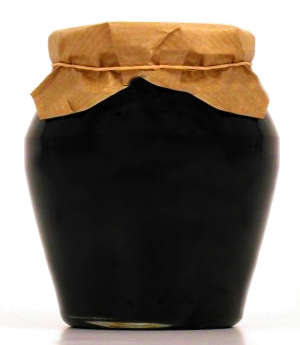 Honey jars or sweetening jars are a tradition in Hoodoo to sweeten a person or a situation in a person's favor. Traditionally, sugar water is used.[46] Known Hoodoo spells date back to the era of slavery in the colonial history of the United States. A slave revolt broke out in 1712 in colonial New York, with enslaved Africans revolting and setting fire to buildings in the downtown area. The leader of the revolt was a free African conjurer named Peter the Doctor, who made a magical powder for the enslaved people to be rubbed on the body and clothes for their protection and empowerment. The Africans who revolted were Akan people from Ghana. Historians suggest the powder made by Peter the Doctor probably included some cemetery dirt to conjure the ancestors to provide spiritual militaristic support from ancestral spirits as help during the slave revolt. The Bakongo people in Central Africa incorporated cemetery dirt into minkisi conjuring bags to activate it with ancestral spirits. During the slave trade, Bakongo people were brought to colonial New York. The New York slave revolt of 1712 and others in the United States showed a blending of West and Central African spiritual practices among enslaved and free Black people.[47][48] Conjure bags, also called mojo bags were used as a resistance against slavery. In the 1830s, Black sailors from the United States utilized conjure for safe sea travel. A Black sailor received a talisman from an Obi (Obeah) woman in Jamaica. This account shows how Black Americans and Jamaicans shared their conjure culture and had similar practices. Free Blacks in northern states had white and Black clients regarding fortune-telling and conjure services.[49] In Alabama slave narratives, it was documented that formerly enslaved people used graveyard dirt to escape from slavery on the Underground Railroad. Freedom seekers rubbed graveyard dirt on the bottom of their feet or put graveyard dirt in their tracks to prevent slave catchers' dogs from tracking their scent. Former slave Ruby Pickens Tartt from Alabama told of a man who could fool the dogs, saying he "done lef' dere and had dem dogs treein' a nekked tree. Dey calls hit hoodooin' de dogs". An enslaved conjurer could conjure confusion in the slave catchers' dogs, which prevented whites from catching freedom seekers.[50] In other narratives, enslaved people made a jack ball to know if an enslaved person would be whipped or not. Enslaved people chewed and spat the juices of roots near their enslavers secretly to calm the emotions of enslavers, which prevented whippings. Enslaved people relied on conjurers to prevent whippings and being sold further South.[51] A story from a former slave, Mary Middleton, a Gullah woman from the South Carolina Sea Islands, tells of an incident where an enslaver was physically weakened from conjure. An enslaver beat one of the people he enslaved badly. The enslaved person he beat went to a conjurer, and the conjurer made the enslaver weak by sunset. Middleton said, "As soon as the sun was down, he was down too, he down yet. De witch done dat." Bishop Jamison, born enslaved in Georgia in 1848, wrote an autobiographical account of his life. On a plantation in Georgia, there was an enslaved Hoodoo man named Uncle Charles Hall who prescribed herbs and charms for enslaved people to protect themselves from white people. Hall instructed the enslaved people to anoint roots three times daily and chew and spit roots toward their enslavers for protection.[52] Another slave story talks about an enslaved woman named Old Julie, who was a conjurer known among the enslaved people on the plantation for conjuring death. Old Julie conjured so much death that her enslaver sold her away to stop her from killing people on the plantation with conjure. Her enslaver put her on a steamboat to take her to her new enslaver in the Deep South. According to the stories of freedmen after the Civil War, Old Julie used her conjure powers to turn the steamboat back to where it was docked, forcing her enslaver who tried to sell her to keep her.[53] Frederick Douglass, a formerly enslaved person, abolitionist, and author wrote in his autobiography that he sought spiritual assistance from an enslaved conjurer named Sandy Jenkins. Sandy told Douglass to follow him into the woods, where they found a root that Sandy told Douglass to carry in his right pocket to prevent any white man from whipping him. Douglass carried the root on his right side as instructed by Sandy and hoped the root would work when he returned to the plantation. The cruel slave-breaker, Mr. Covey, told Douglass to do some work, but as Mr. Covey approached Douglass, Douglass had the strength and courage to resist Mr. Covey and defeated him after they fought. Covey never bothered Douglass again. In his autobiography, Douglass believed the root given to him by Sandy prevented him from being whipped by Mr. Covey.[54] Conjure for African Americans is a form of resistance against white supremacy.[55][56] African American conjurers were seen as a threat by white Americans because slaves went to free and enslaved conjurers to receive charms for protection and revenge against their enslavers.[57] Enslaved Black people used Hoodoo to bring about justice on American plantations by poisoning enslavers and conjuring death onto their oppressors.[58] |
 蜂蜜瓶または甘味料瓶は、人格または状況をその人の望むように甘くするためのフードゥー教の伝統である。伝統的には砂糖水が使用される。 [46] 知られているフードゥー教の呪文は、アメリカ合衆国の植民地時代の奴隷制度の時代まで遡る。1712年、植民地時代のニューヨークで奴隷反乱が勃発し、 奴隷となっていたアフリカ人が反乱を起こし、市街地の建物に火を放った。反乱のリーダーはピーター・ザ・ドクターという名の自由なアフリカ人呪術師で、奴 隷たちが身体や衣服に塗って身を守り、力を得るための呪術的な粉末を作っていた。反乱を起こしたアフリカ人はガーナのアカン族であった。歴史家たちは、 ピーター・ザ・ドクターが作った粉末にはおそらく墓地の土が含まれており、奴隷反乱の際には先祖の霊から軍事的・精神的な支援を得るために使われたのでは ないかと推測している。中央アフリカのバコンゴ族は、ミンキシの魔術袋に墓地の土を混ぜ、先祖の霊を呼び起こした。奴隷貿易の時代、バコンゴ族は植民地時 代のニューヨークにも連れてこられた。1712年のニューヨークの奴隷反乱や、アメリカ国内の他の奴隷反乱では、西アフリカと中央アフリカの霊的実践が奴 隷や自由黒人の間で融合していることが示された。1830年代には、米国から来た黒人船員たちが、航海の安全を祈願するためにコンジャーを利用していた。 ジャマイカのオビ(オベア)の女性から護符を受け取った黒人船員もいた。この話は、黒人アメリカ人とジャマイカ人がコンジャー文化を共有し、類似した慣習 を持っていたことを示している。北部の州の自由黒人は、占いやコンジャーのサービスに関して、白人や黒人の顧客を抱えていた。 アラバマ州の奴隷の証言では、かつて奴隷であった人々が地下鉄道で奴隷制度から逃れるために墓地の土を使用していたことが記録されている。自由を求める人 々は、奴隷捕獲人の犬が自分の匂いを追跡できないように、足の裏に墓地の土をこすりつけたり、足跡に土を付けたりした。アラバマ州出身の元奴隷、ルビー・ ピケンズ・タートは、犬を欺くことができた男について、「ここから逃げ出して、犬たちに裸の木に吠えさせてやった。犬たちはそれを魔法だと思った」と語っ た。奴隷の魔術師は、奴隷捕獲者の犬を混乱させ、自由を求める人々を捕まえる白人を妨害することができた。[50] 別の話では、奴隷の人々は、奴隷が鞭打ちされるかどうかを知るためにジャックボールを作った。奴隷の人々は、秘密裏に奴隷所有者の近くにある根の汁を噛ん で吐き出し、奴隷所有者の感情を落ち着かせ、鞭打ちを防いだ。奴隷たちは、鞭打ちや南部へのさらなる売却を防ぐために、呪術師に頼っていた。[51] サウスカロライナ州の海上諸島出身の奴隷、メアリー・ミドルトン(ガラ族の女性)の元奴隷の話によると、呪術によって肉体的弱体化を経験した奴隷所有者が いたという。奴隷所有者が、奴隷として酷く扱っていた人物を殴った。殴られた奴隷は呪術師のもとへ行き、呪術師は日没までに奴隷所有者を弱体化させた。ミ ドルトンは「日が沈むや否や、彼もまた弱った。呪術師の仕業だ」と語った。 1848年にジョージア州で生まれ、奴隷として過ごしたジャミソン司教は、自伝を著している。ジョージア州の農園には、アンクル・チャールズ・ホールとい う名の奴隷のフードゥー教の男がおり、奴隷たちが白人から身を守るための薬草や護符を処方していた。ホールは、奴隷たちに毎日3回根を塗り、護符として それを噛み砕いて奴隷所有者に吐きかけるようにと教えた。 別の奴隷の話では、オールド・ジュリーという名の奴隷の女性が登場する。彼女は、その農園の奴隷たちの間で死を呼び起こす魔術師として知られていた。オー ルド・ジュリーはあまりにも多くの死を呼び起こしたため、彼女の主人は、彼女が魔術を使って農園の人々を殺すのをやめさせるために、彼女を売り飛ばした。 彼女の主人は蒸気船に乗せて、ディープ・サウス(アメリカ南部の奥地)の新しい主人のもとへ連れて行った。南北戦争後の解放奴隷たちの話によると、オール ド・ジュリーは魔術の力で蒸気船を元の停泊地に戻し、自分を売り飛ばそうとした主人に自分を留まらせるよう強制したという。 かつて奴隷であったフレデリック・ダグラスは、奴隷制度廃止論者であり作家でもあったが、自伝の中で、奴隷の魔術師であるサンディ・ジェンキンズに霊的な 助けを求めたと書いている。サンディは、ドウグラスに森の中へついてくるように言った。そこで2人は、サンディがドウグラスに、白人に鞭で打たれないよう にするために右のポケットに入れておくように言った根を見つけた。ドウグラスはサンディの指示通りに根を右側に持ち、農園に戻ったときにその根が効力を発 揮することを願った。残酷な奴隷解放者、コーベイ氏は、ドグラスに仕事を命じたが、コーベイ氏がドグラスに近づくと、ドグラスはコーベイ氏に抵抗する力と 勇気を持っており、戦いの末に彼を打ち負かした。コーベイは二度とドグラスに干渉することはなかった。ドグラスは自伝の中で、サンディから受け取った根が コーベイ氏による鞭打ちを防いだと信じていた。 アフリカ系アメリカ人の魔術は、白人至上主義に対する抵抗の一形態である。[55][56] アフリカ系アメリカ人の魔術師は、奴隷が自由の身となり、奴隷制に反対する魔術や、奴隷制の加害者に対する復讐の魔術を受けるために魔術師のもとへ通うた め、白人アメリカ人にとっては脅威であった。[57] 奴隷として黒人たちは、フードゥーを用いて、奴隷制の加害者を毒殺したり、抑圧者に死をもたらしたりすることで、アメリカの農園で正義をもたらそうとし た。[58] |
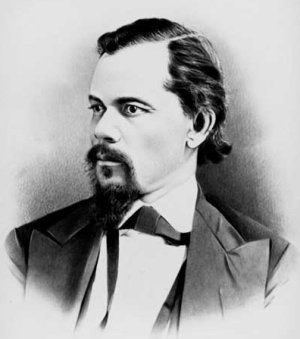 Paschal Beverly Randolph During the era of slavery, occultist Paschal Beverly Randolph began studying the occult and traveled and learned spiritual practices in Africa and Europe. Randolph was a mixed-race free Black man who wrote several books on the occult. In addition, Randolph was an abolitionist who spoke out against slavery in the South. After the American Civil War, Randolph educated freedmen in schools for formerly enslaved people called Freedmen's Bureau Schools in New Orleans, Louisiana, where he studied Louisiana Voodoo and Hoodoo in African American communities, documenting his findings in his book, Seership, The Magnetic Mirror. In 1874, Randolph organized a spiritual organization called Brotherhood of Eulis in Tennessee.[59][60] Through his travels, Randolph documented the continued African traditions in Hoodoo practiced by African Americans in the South. Randolph documented two African American men of Kongo origin who used Kongo conjure practices against each other. The two conjure men came from a slave ship that docked in Mobile Bay in 1860 or 1861.[61][62] |
 パスカ・ビバリー・ランドルフ 奴隷制度の時代に、オカルト研究家パスカ・ビバリー・ランドルフはオカルトの研究を始め、アフリカやヨーロッパを旅してスピリチュアルな修行を学んだ。ラ ンドルフは混血の自由黒人男性で、オカルトに関する本を数冊執筆した。さらに、ランドルフは南部の奴隷制度に反対する奴隷制度廃止論者でもあった。南北戦 争後、ランドルフはルイジアナ州ニューオーリンズのフリードメンズ・ビューロー・スクールと呼ばれる元奴隷のための学校で解放奴隷たちに教育を行った。こ こで彼はアフリカ系アメリカ人社会におけるルイジアナ・ヴードゥーとフードゥーを研究し、その成果を著書『Seership, The Magnetic Mirror』にまとめた。1874年、ランドルフはテネシー州で「ブラザーフッド・オブ・エウリス」というスピリチュアルな組織を結成した。[59] [60] ランドルフは、南部の黒人たちが実践するフードゥーにアフリカの伝統が継続していることを、自身の旅を通じて記録した。ランドルフは、コンゴ起源の2人 のアフリカ系アメリカ人が互いにコンゴの魔術を行使していることを記録した。この2人の魔術師は、1860年か1861年にモービル湾に停泊した奴隷船か ら来た。[61][62] |
| Post-emancipation The mobility of Black people from the rural South to more urban areas in the North is characterized by the items used in Hoodoo. White pharmacists opened their shops in African American communities. They began to offer items both asked for by their customers, as well as things they felt would be of use.[63] Examples of the adoption of occultism and mysticism may be seen in the colored wax candles in glass jars that are often labeled for specific purposes such as "Fast Luck" or "Love Drawing." Some African Americans sold hoodoo products in the Black community. An African American woman, Mattie Sampson, was a salesperson in an active mail-order business selling hoodoo products to her neighbors in Georgia.[64] Since the opening of Botanicas, Hoodoo practitioners purchase their spiritual supplies of novena candles, incense, herbs, conjure oils, and other items from spiritual shops that service practitioners of Vodou, Santeria, and other African Traditional Religions.[65] 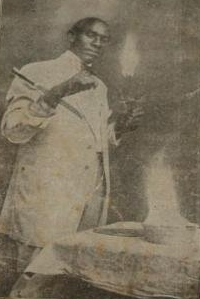 Black Herman Hoodoo spread throughout the United States as African Americans left the delta during the Great Migration. As African Americans left the South during the Great Migration, they took the practice of Hoodoo to other Black communities in the North. Benjamin Rucker, also known as Black Herman, provided Hoodoo services for African Americans in the North and the South when he traveled as a stage magician. Benjamin Rucker was born in Virginia in 1892. Rucker learned stage magic and conjure from an African American named Prince Herman (Alonzo Moore). After Prince Herman's death, Rucker changed his name to Black Herman in honor of his teacher. Black Herman traveled between the North and South and provided conjure services in Black communities, such as card readings and crafting health tonics. However, Jim Crow laws pushed Black Herman to Harlem, New York's Black community, where he operated his own Hoodoo business and provided rootwork services to his clients.[66] For some African Americans who practiced rootwork, providing conjure services in the Black community for African Americans to obtain love, money, employment, and protection from the police was a way to help Black people during the Jim Crow era in the United States so Black people can gain employment to support their families, and for their protection against the law.[67][68] As Black people traveled to northern areas, Hoodoo rituals were modified because there were not a lot of rural country areas to perform rituals in woods or near rivers. Therefore, African Americans improvised their rituals inside their homes or secluded regions of the city. Herbs and roots needed were not gathered in nature but bought in spiritual shops. These spiritual shops near Black neighborhoods sold botanicals and books used in modern Hoodoo.[69] |
奴隷解放後 南部の農村から北部の都市部へと黒人が移動したことは、フードゥーで使用される品物によって特徴づけられる。白人の薬剤師がアフリカ系アメリカ人のコ ミュニティに薬局を開いた。彼らは顧客が求める品物だけでなく、役に立つと思われる品物も提供し始めた。[63] オカルティズムや神秘主義の採用例としては、ガラス瓶に入った有色の蝋燭に「幸運を呼ぶ」や「愛を引き寄せる」など特定の用途が示されているものがある。 アフリカ系アメリカ人の一部は、ブラックコミュニティでフードゥーの商品を販売していた。アフリカ系アメリカ人の女性、マティ・サンプソンは、ジョージ ア州の近隣住民にフードゥー教の商品を販売する活発な通信販売事業の販売員であった。[64] ボタニカが開店して以来、フードゥー教の実践者は、ヴードゥー教、サンテリア、その他のアフリカ伝統宗教の実践者にサービスを提供するスピリチュアル ショップから、ノヴェナキャンドル、お香、ハーブ、呪術用オイル、その他の物品を購入している。[65]  ブラック・ハーマン・ フードゥーは、アフリカ系アメリカ人が大移動でデルタ地帯を離れるのに伴い、全米に広がった。アフリカ系アメリカ人が大移動で南部を離れるのに伴い、彼 らは北部の他の黒人コミュニティにフードゥーの慣習を持ち込んだ。ブラック・ハーマンとしても知られるベンジャミン・ラッカーは、舞台マジシャンとして 旅をしていた際、北部と南部のアフリカ系アメリカ人にフードゥーのサービスを提供していた。ベンジャミン・ラッカーは1892年にバージニア州で生まれ た。ラッカーは、プリンス・ハーマン(本名アロンゾ・ムーア)という名の黒人から舞台マジックと手品を学んだ。プリンス・ハーマンの死後、ラッカーは師の 名誉を称えてブラック・ハーマンと改名した。ブラック・ハーマンは南北を行き来し、カード占いや保健強壮剤の調合など、黒人コミュニティで手品サービスを 提供していた。しかし、ジム・クロウ法によりブラック・ハーマンはニューヨークの黒人居住区ハーレムへと追いやられ、そこで彼はフードゥー教のビジネス を営み、クライアントにルーツワークのサービスを提供した。 ルーツワークを実践する一部のアフリカ系アメリカ人にとって、黒人コミュニティで魔術サービスを提供することは、アフリカ系アメリカ人が愛や金銭、雇用を 得たり、警察からの保護を受けたりできるように手助けすることであり、それは 家族を養うための雇用を得たり、法による保護を受けたりできるようにするためである。[67][68] 黒人たちが北部地域へと移動するにつれ、森や川の近くで儀式を行う田舎の地域が少なくなったため、フードゥーの儀式も変化していった。そのため、アフリ カ系アメリカ人は、自宅や都市の奥まった場所で儀式を即興で行うようになった。必要なハーブや根は自然界で採取するのではなく、スピリチュアルショップで 購入した。こうしたスピリチュアルショップは黒人居住区の近くにあり、近代フードゥーで使用される植物や書籍を販売していた。[69] |
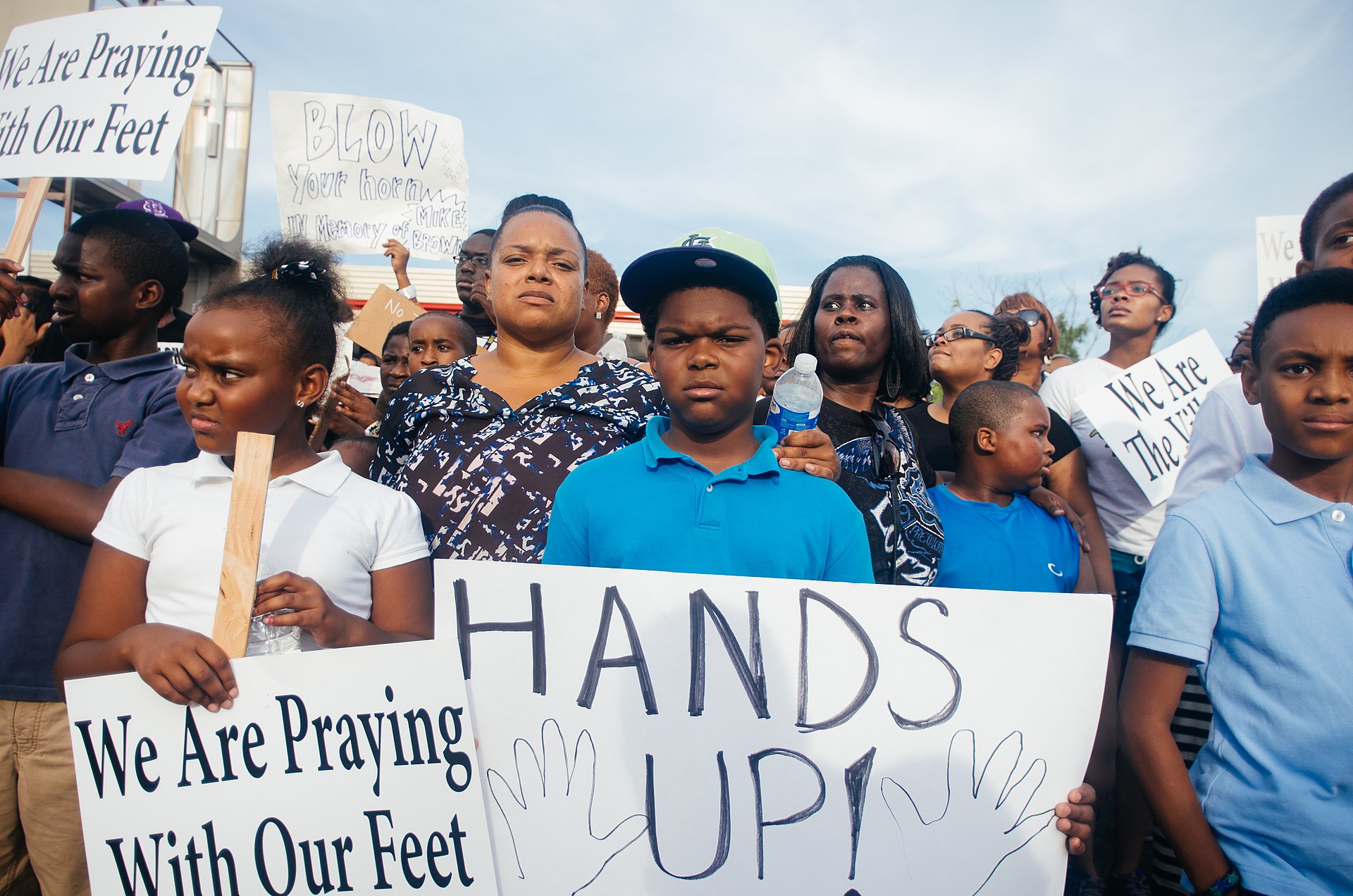 Protesters with signs in Ferguson After the American Civil War into the present day with the Black Lives Matter movement, Hoodoo practices in the African American community also focus on spiritual protection from police brutality.[70][71] Today, Hoodoo and other African Traditional Religions are present in the Black Lives Matter movement as one of many methods against police brutality and racism in the Black community. Black American keynote speakers who are practitioners of Hoodoo spoke at an event at The Department of Arts and Humanities at California State University about the importance of Hoodoo and other African spiritual traditions practiced in social justice movements to liberate Black people from oppression.[72] African Americans in various African diaspora religions spiritually heal their communities by establishing healing centers that provide emotional and spiritual healing from police brutality. In addition, altars with white candles and offerings are placed in areas where police murdered an African American, and libation ceremonies and other spiritual practices are performed to heal the soul that died from racial violence.[73] African Americans also use Hoodoo to protect their properties from gentrification in their neighborhoods and on sites that are considered sacred to their communities. On Daufuskie Island, South Carolina in the early twentieth century, a Hoodoo practitioner, Buzzard, placed a curse on a developing company that continued to build properties in Gullah cemeteries where Buzzard's ancestors are buried. According to locals, because of the curse, the company and others following have never been able to build properties in the area, and the owner of the company had a heart attack.[74] Locals from Frenier, Louisiana believe the Hurricane of 1915 that wiped out the town was predicted by a Hoodoo lady named Julia Brown who sang a song on her front porch that she would take the town with her when she die because the people in the area mistreated her after she helped them.[75] Black women practitioners of Hoodoo, Lucumi, Palo and other African-derived traditions are opening and owning spiritual stores online and in Black neighborhoods to provide spiritual services to their community and educate African-descended people about Black spirituality and how to heal themselves physically and spiritually.[76] The culture of Hoodoo has inspired the creations of art for some Black artists. In 2017, The Rootworker's Table is an art piece created by artist Renee Stout that showed the culture of Hoodoo portrayed as an altar with a collection of bottled tinctures and a chalkboard with Hoodoo herbal knowledge. The artist grew up in the Hill District of Pittsburgh and saw Hoodoo practitioners who were mainly Black women. Black women played a role in their communities as midwives, healers, and conjure women for their clients.[77] |
 ファーガソンでプラカードを掲げる抗議者たち アメリカ南北戦争後から今日まで続くブラック・ライブズ・マター運動に おいて、アフリカ系アメリカ人社会におけるフードゥーの実践は、警察による残虐行為からの霊的な保護にも焦点を当てている。[70][71] 今日、フードゥーやその他のアフリカ伝統宗教は、ブラック・ライブズ・マター運動において、警察による残虐行為やアフリカ系アメリカ人社会における人種 主義に対する多くの方法のひとつとして存在している。フードゥーの実践者である黒人アメリカ人の基調講演者が、カリフォルニア州立大学人文科学部のイベ ントで、抑圧から黒人を開放するための社会正義運動において、フードゥーやその他のアフリカの精神伝統が重要であることを語った。[72] さまざまなアフリカ系ディアスポラ宗教に属するアフリカ系アメリカ人は、警察の暴力から感情的・精神的な癒しを提供するヒーリングセンターを設立すること で、コミュニティを精神的に癒している。さらに、警察官がアフリカ系アメリカ人を殺害した場所には、白いろうそくと供物が置かれた祭壇が置かれ、人種的暴 力によって命を落とした魂を癒やすための供物儀式やその他のスピリチュアルな実践が行われている。20世紀初頭のサウスカロライナ州ドーフィスク島では、 フードゥー教の実践者バザードが、バザードの祖先が埋葬されているガラ族の墓地に不動産開発を続けた開発会社に呪いをかけた。地元住民によると、その呪 いのせいで、その会社およびその系列会社はその後もその地域に物件を建設することができず、その会社のオーナーは心臓発作を起こしたという。[74] ルイジアナ州フレンチーの住民は、1915年のハリケーンで町が全壊したことは 15年に町を壊滅させたハリケーンは、フードゥーの霊媒師ジュリア・ブラウンという女性が、人々を助けた後にその地域の人々に不当に扱われたため、死後 には町を道連れにするという歌を自宅のポーチで歌ったことで予言されたと信じられている。 フードゥー、ルクミ、パロなどアフリカ由来の伝統を実践する黒人女性たちは、オンラインや黒人居住区でスピリチュアルショップを開業し、地域社会にスピ リチュアルサービスを提供したり、アフリカ系の人々に黒人霊性や心身の癒し方を教えたりしている。[76] フードゥーの文化は、一部の黒人アーティストの芸術作品の創作にインスピレーションを与えている。2017年には、アーティストのレネー・スタウトが制 作したアート作品『The Rootworker's Table』では、フードゥーの文化が祭壇として表現され、ビン入りのチンキ剤のコレクションや、フードゥーの薬草知識が書かれた黒板が置かれてい る。アーティストはピッツバーグのヒル地区で育ち、主に黒人女性であるフードゥーの実践者を目にした。黒人女性は、助産師、治療師、顧客のための占い師 として、コミュニティで役割を果たしていた。[77] |
| Central African influence Cultural anthropologist Tony Kail conducted research in African American communities in Memphis, Tennessee, and traced the origins of Hoodoo practices to Central Africa. In Memphis, Kail interviewed Black rootworkers and wrote about African American Hoodoo practices and history in his book "A Secret History of Memphis Hoodoo." For example, Kail recorded at former slave plantations in the American South: "The beliefs and practices of African traditional religions survived the Middle Passage (the Transatlantic slave trade) and were preserved among the many rootworkers and healers throughout the South. Many of them served as healers, counselors, and pharmacists to slaves enduring the hardships of slavery."[78] Sterling Stuckey, a professor of American history who specialized in the study of American slavery and African American slave culture and history in the United States, asserted that African culture in America developed into a uniquely African American spiritual and religious practice that was the foundation for conjure, Black theology, and liberation movements. Stuckey provides examples in the slave narratives, African American quilts, Black churches, and the continued cultural practices of African Americans.[79][80][81] |
中央アフリカからの影響 文化人類学者のトニー・ケイルは、テネシー州メンフィスのアフリカ系アメリカ人コミュニティで調査を行い、フードゥー教の起源を中央アフリカにまで遡っ た。メンフィスで、カイルは黒人のルーツワーカーたちにインタビューを行い、著書『メンフィス・フードゥーの秘密の歴史』でアフリカ系アメリカ人の フードゥーの慣習と歴史について書いている。例えば、カイルはアメリカ南部の元奴隷農園で次のように記録している。「アフリカの伝統宗教の信仰と慣習 は、大西洋奴隷貿易(中間航路)を生き延び、南部各地の多くのルーツワーカーやヒーラーたちによって守られてきた。その多くは、奴隷制度の苦難に耐える奴 隷たちの治療師、カウンセラー、薬剤師として働いていた」[78] 米国史の教授であり、米国における奴隷制度とアフリカ系米国人の奴隷文化および歴史の研究を専門とするスターリング・スタッキーは、米国におけるアフリカ 文化は、アフリカ系米国人の独特な精神性と宗教的実践へと発展し、それが呪術、ブラック神学、解放運動の基盤となったと主張している。Stuckeyは、 奴隷の証言、アフリカ系アメリカ人のキルト、黒人教会、そしてアフリカ系アメリカ人の継続的な文化実践を例に挙げている。[79][80][81] |
The Kongo cosmogram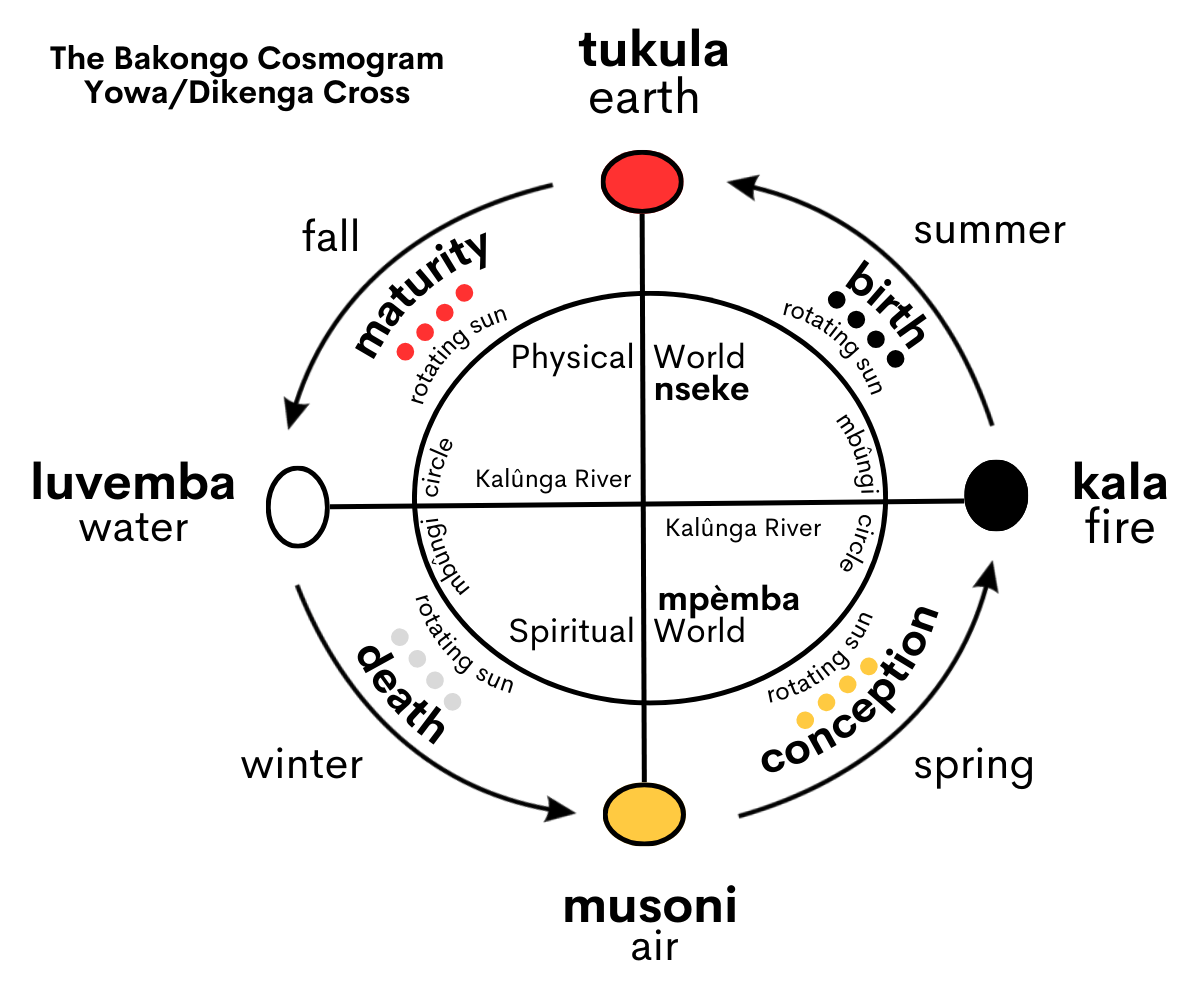 The Yowa, or Dikenga Cross, is a symbol in Bakongo spirituality that depicts the physical world, the spiritual (ancestral) world, the Kalûnga river (line) that runs between the two worlds, and the four moments of the sun. The Yowa cross is the origin of the crossroads in Hoodoo. The Kongo cosmogram The Bakongo origins in Hoodoo practice are evident. According to academic research, about 40 percent of Africans shipped to the United States during the slave trade came from Central Africa's Kongo region. Emory University created an online database that shows the voyages of the transatlantic slave trade. This database shows many slave ships primarily leaving Central Africa.[82][83] Ancient Kongolese spiritual beliefs and practices are present in Hoodoo, such as the Kongo cosmogram. The basic form of the Kongo cosmogram is a simple cross (+) with one line. The Kongo cosmogram symbolizes the rising of the sun in the east and the sun's setting in the west, representing cosmic energies. The horizontal line in the Kongo cosmogram represents the boundary between the physical world (the realm of the living) and the spiritual world (the realm of the ancestors). The vertical line of the cosmogram is the path of spiritual power from God at the top, traveling to the realm of the dead below, where the ancestors reside.[84][85] The cosmogram, or dikenga, however, is not a unitary symbol like a Christian cross or a national flag.[86] The physical world resides at the top of the cosmogram. The spiritual (ancestral) world resides at the bottom of the cosmogram. At the horizontal line is a watery divide that separates the two worlds from the physical and spiritual, and thus the "element" of water has a role in African American spirituality.[87][88] The Kongo cosmogram cross symbol has a physical form in Hoodoo called the crossroads, where Hoodoo rituals are performed to communicate with spirits and to leave ritual remains to remove a curse.[89] The Kongo cosmogram is also spelled the "Bakongo" cosmogram and the "Yowa" cross. 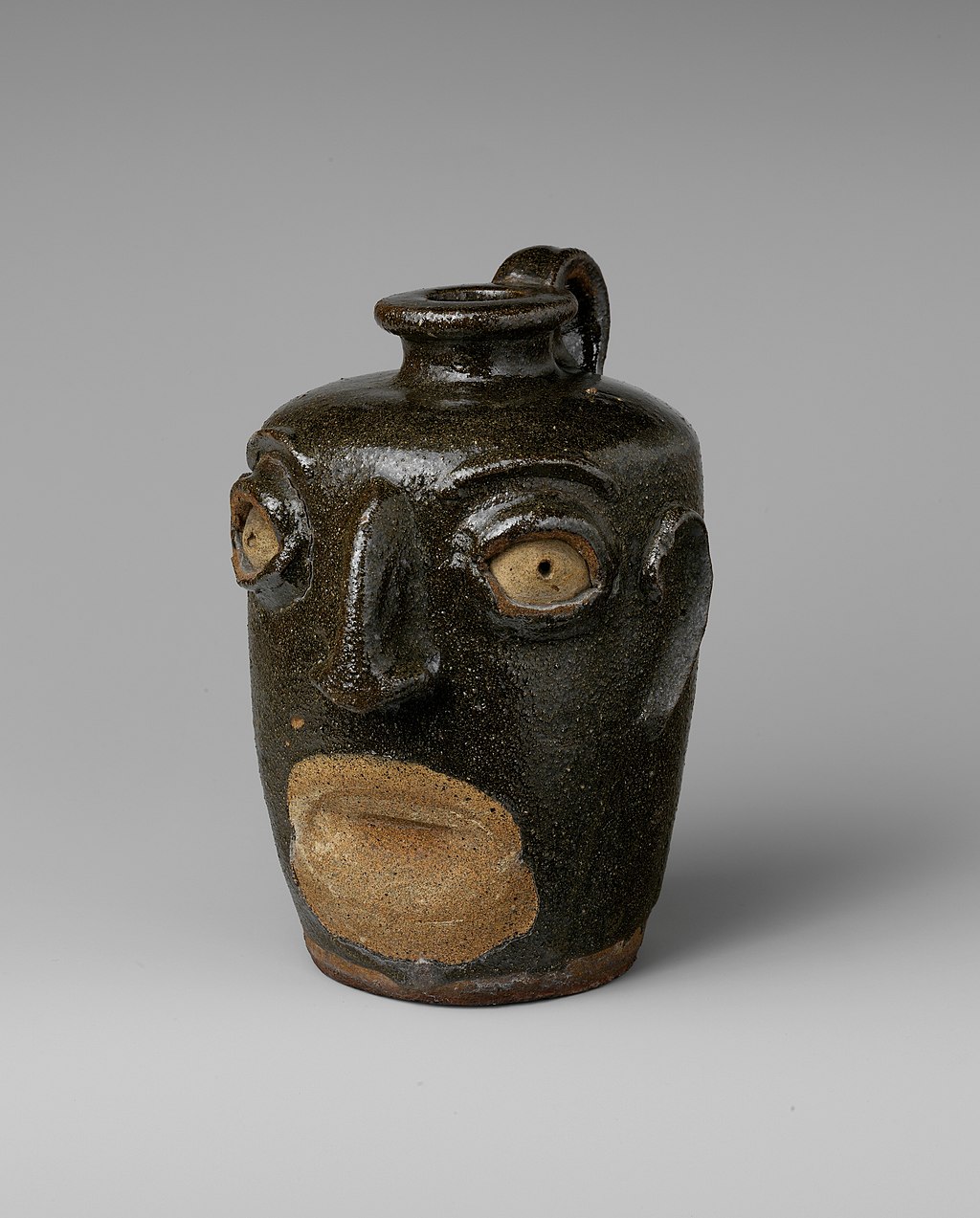 An example of an African American face jug from the Edgefield District of South Carolina. Historians suggest face jugs may have functioned like an nkisi, a spirit container. Locals call face jugs "voodoo pots" and "ugly jugs." African American face jugs are similar in appearance to face jugs made by Bantu people in the Kongo region.[90][91] The crossroads is a spiritual supernatural crossroads that symbolizes communication between the worlds of the living and the world of the ancestors, divided at the horizontal line. Counterclockwise sacred circle dances in Hoodoo are performed to communicate with ancestral spirits using the sign of the Yowa cross.[92][93] Communication with the ancestors is a traditional practice in Hoodoo that was brought to the United States during the slave trade originating among Bantu-Kongo people.[94][95] In Savannah, Georgia, in a historic African American church called First African Baptist Church, the Kongo cosmogram symbol was found in the basement of the church. African Americans punctured holes in the basement floor of the church to make a diamond-shaped Kongo cosmogram for prayer and meditation. The church was also a stop on the Underground Railroad. The holes in the floor provided breathable air for escaped enslaved people hiding in the basement of the church.[96] The Kongo cosmogram sun cycle also influenced how African Americans in Georgia prayed. It was recorded that some African Americans in Georgia prayed at the rising and setting of the sun.[97] In an African American church on the Eastern Shore of Virginia, Kongo cosmograms were designed into the church's window frames. The church was built facing an axis of an east–west direction so the sun rises directly over the church steeple in the east. The burial grounds of the church also show continued African American burial practices of placing mirror-like objects on top of graves.[98] In Kings County in Brooklyn, New York, at the Lott Farmstead, Kongo-related artifacts were found on the site. The Kongo-related artifacts included a Kongo cosmogram engraved onto ceramics and nkisi bundles that had cemetery dirt and iron nails left by enslaved African Americans. Researchers suggest that iron nails were used to prevent whippings from enslavers. Also, the Kongo cosmogram engravings were used as a crossroads for spiritual rituals by the enslaved African American population in Kings County. Historians suggest Lott Farmstead was a stop on the Underground Railroad for freedom seekers. The Kongo cosmogram artifacts were used as a form of spiritual protection against slavery and for enslaved people's protection during their escape from slavery on the Underground Railroad.[99] Archeologists also found the Kongo cosmogram on several plantations in the American South, including Richmond Hill Plantation in Georgia, Frogmore Plantation in South Carolina, a plantation in Texas, and Magnolia Plantation in Louisiana. Historians call the locations where crossroad symbols were possibly found inside slave cabins and African American living quarters 'Crossroads Deposits.' Crossroads deposits were found underneath floorboards and in the northeast sections of cabins to conjure ancestral spirits for protection. Sacrificed animals and other charms were found where enslaved African Americans drew the crossroads symbols, and four holes were drilled into charms to symbolize the Bakongo cosmogram. Other West-Central African traditions found on plantations by historians include using six-pointed stars as spiritual symbols. A six-pointed star is a symbol in West Africa and in African American spirituality.[100] On another plantation in Maryland, archeologists unearthed artifacts that showed a blend of Central African and Christian spiritual practices among enslaved people. This was Ezekiel's Wheel in the Bible that blended with the Central African Kongo cosmogram. This may explain the connection enslaved Black Americans had with the Christian cross, as it resembled their African symbol. The cosmogram represents the universe and how human souls travel in the spiritual realm after death, entering the ancestral realm and reincarnating back into the family.[101] The artifacts uncovered at the James Brice House included Kongo cosmogram engravings drawn as crossroads (an X) inside the house. This was done to ward a place from a harsh enslaver.[102] Also, the Kongo cosmogram is evident in Hoodoo practice among Black Americans. Archeologists unearthed clay bowls from a former slave plantation in South Carolina made by enslaved Africans, engraving the Kongo cosmogram onto the clay bowls. African Americans used these clay bowls for ritual purposes.[103] |
コンゴ宇宙図 ヨワまたはディケンガ・クロスは、バコンゴ族の精神世界における象徴であり、物理的世界、精神的世界(祖先の世界)、2つの世界の間を流れるカルンガ川 (線)、そして太陽の4つの瞬間を表している。ヨワ・クロスはフードゥーにおける十字路の起源である。 コンゴ宇宙図 フードゥー教のバコンゴの起源は明らかである。学術研究によると、奴隷貿易中に米国に送られたアフリカ人の約40パーセントは、中央アフリカのコンゴ地 域出身であった。エモリー大学は、大西洋横断奴隷貿易の航海を示すオンラインデータベースを作成した。このデータベースは、主に中央アフリカを出発した多 くの奴隷船を示している。[82][83]古代のコンゴ人の精神的な信念と実践は、フードゥー教にも存在しており、例えばコンゴ宇宙図がある。コンゴ宇 宙図の基本的な形は、一本の線を持つシンプルな十字(+)である。コンゴ宇宙図は、東から昇る太陽と西に沈む太陽を象徴し、宇宙のエネルギーを表してい る。コンゴ宇宙図の横線は、物理的世界(生者の領域)と精神的世界(祖先の領域)の境界を表している。この宇宙図の縦の線は、上部の神から祖先が住む下部 の死者の領域へと向かう霊的な力の通り道である。[84][85] しかし、宇宙図(またはディケンガ)は、キリスト教の十字架や国旗のような単一のシンボルではない。宇宙図の上部に物理的世界が存在する。霊的な(祖先 の)世界は、宇宙図の底に存在する。水平線には、物理的および精神的な2つの世界を隔てる水の境界線があり、したがって「水」の要素は、アフリカ系アメリ カ人の精神性において重要な役割を果たしている。[87][88] コンゴ宇宙図の十字のシンボルは、 フードゥー教ではこれを「クロスロード」と呼び、霊との交信や呪いを解くための儀式の残り物を残すために、この場所で儀式を行う。[89] コンゴ族の宇宙図は、「バコンゴ族」の宇宙図や「ヨワ族」の十字架とも呼ばれる。  サウスカロライナ州エッジフィールド地区のブラックアメリカンが用いたフェイスジャグの一例。歴史家は、フェイスジャグはンキシ(nkisi)と呼ばれる 霊の入れ物のような役割を果たしていた可能性があると示唆している。地元民はフェイスジャグを「ヴードゥーポット」や「醜い壺」と呼ぶ。アフリカ系アメリ カ人のフェイスジャグは、コンゴ地方のバンツー族が作ったフェイスジャグと外観が似ている。 交差する道は、生者の世界と祖先の世界のコミュニケーションを象徴する、超自然的でスピリチュアルな交差点である。フードゥーにおける反時計回りの神聖 な円舞は、ヨワ・クロスの印を用いて先祖の霊と交信するために行われる。[92][93] 先祖との交信は、バンツー・コンゴ人の間で始まった奴隷貿易の時代にアメリカ合衆国にもたらされたフードゥーの伝統的な慣習である。[94][95] ジョージア州サバンナにある歴史あるアフリカ系アメリカ人教会、ファースト・アフリカン・バプティスト教会の地下から、コンゴ宇宙図のシンボルが発見され た。アフリカ系アメリカ人は、祈りと瞑想のために、教会の地下室の床に穴を開けてダイヤモンド型のコンゴ宇宙図を作った。この教会は、地下鉄道の停車駅で もあった。床に開けられた穴は、教会の地下室に隠れていた逃亡中の奴隷たちに呼吸できる空気を供給していた。[96] コンゴ宇宙図の太陽のサイクルは、ジョージア州のアフリカ系アメリカ人の祈り方にも影響を与えた。ジョージア州のアフリカ系アメリカ人の中には、太陽が昇 る時と沈む時に祈りを捧げる者もいたことが記録されている。[97] バージニア州イースタンショアのアフリカ系アメリカ人教会では、コンゴの宇宙図が教会の窓枠にデザインされている。この教会は東西方向の軸線に面して建て られており、太陽が東の教会の尖塔の真上に昇るようになっている。この教会の墓地には、墓の上に鏡のようなものを置くというアフリカ系アメリカ人の埋葬の 習慣が今も続いている。 ニューヨーク州ブルックリン区キングス郡のロット農場跡では、コンゴ族に関連する遺物が発見されている。コンゴ族に関連する遺物には、陶器に刻まれたコン ゴ族の宇宙図や、奴隷として強制労働に従事していたアフリカ系アメリカ人によって墓地の土や鉄釘が入れられたンキシの束などがある。研究者たちは、鉄釘は 奴隷制の所有者による鞭打ちを防ぐために使われたのではないかと推測している。また、キングス郡の奴隷であったアフリカ系アメリカ人たちは、コンゴ宇宙図 の刻印を精神的な儀式の交差点として使用していた。歴史家は、ロット農場が自由を求める人々のための地下鉄道の停留所であった可能性を示唆している。コン ゴ宇宙図の遺物は、奴隷制度に対する精神的な保護の形として、また地下鉄道で奴隷制度からの逃亡中の奴隷の保護として使用されていた。 考古学者は、ジョージア州のリッチモンド・ヒル農園、サウスカロライナ州のフロッグモア農園、テキサス州の農園、ルイジアナ州のマグノリア農園など、アメ リカ南部のいくつかの農園でコンゴの宇宙図を発見した。 歴史家は、奴隷小屋やアフリカ系アメリカ人の居住区で発見された可能性のある十字路のシンボルが残る場所を「クロスローズ・デポジット」と呼んでいる。 クロスローズ・デポジットは、先祖の霊を呼び出して守ってもらうために、床板の下や小屋の北東部分に置かれていた。奴隷となったアフリカ系アメリカ人が十 字路のシンボルを描いた場所からは、生け贄の動物やその他の護符が見つかっている。また、護符には4つの穴が空けられており、バコンゴ族の宇宙図を象徴し ている。歴史家がプランテーションで発見した他の西中央アフリカの伝統には、六芒星を精神的なシンボルとして用いるものがある。六芒星は西アフリカとアフ リカ系アメリカ人の精神世界におけるシンボルである。 メリーランド州の別の農園では、考古学者が奴隷たちによる中央アフリカとキリスト教の精神修養の融合を示す遺物を発掘した。これは、聖書に登場するエゼキ エルの車輪と中央アフリカのコンゴの宇宙図が融合したものである。これは、奴隷として扱われた黒人アメリカ人とキリスト教の十字架とのつながりを説明する ものかもしれない。なぜなら、それは彼らのアフリカのシンボルに似ていたからだ。この宇宙図は、宇宙と、死後、人間の魂が霊的な領域を旅し、先祖の領域に 入り、家族に生まれ変わる様子を表している。[101] ジェームズ・ブライス・ハウスで発見された遺物には、家屋内に十字路(X)として描かれたコンゴ宇宙図の彫刻が含まれていた。これは、場所を厳しい奴隷制 から守るために行われた。[102] また、コンゴ宇宙図は、黒人アメリカ人の間で行われるフードゥー教の儀式にも見られる。 サウスカロライナ州の元奴隷農園から、奴隷としてアフリカから連れてこられた人々によって作られた粘土の鉢が発掘された。 粘土の鉢にはコンゴ宇宙図が刻まれていた。 アフリカ系アメリカ人は、これらの粘土の鉢を儀式用に使用していた。[103] |
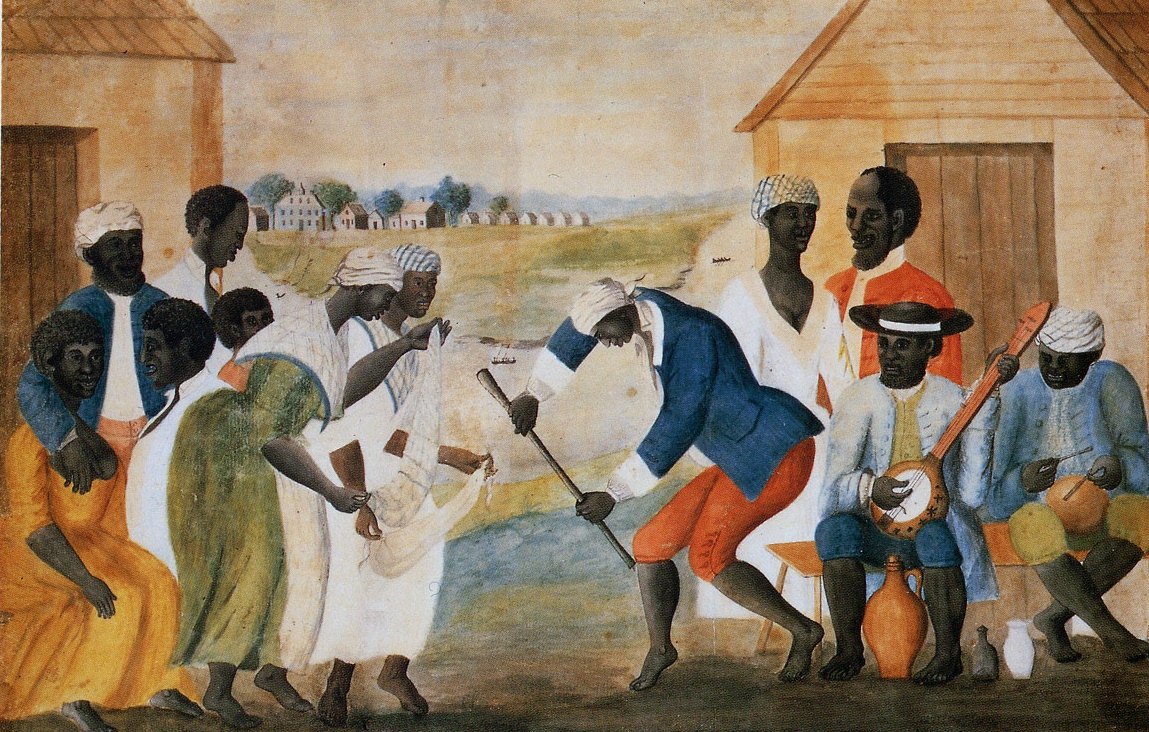 The 18th-century painting The Old Plantation depicts several examples of Africanisms brought to the Carolinas, including musical instruments, headdresses, dance steps, and spiritual traditions. The Ring shout in Hoodoo has its origins in the Kongo region from the Kongo cosmogram (Yowa Cross). Ring shouters dance in a counterclockwise direction that follows the pattern of the rising of the sun in the east and the setting of the sun in the west. The ring shout follows the cyclical nature of life represented in the Kongo cosmogram of birth, life, death, and rebirth.[104][105][106][107] Through counterclockwise circle dancing, ring shouters build up spiritual energy that results in communication with ancestral spirits and leads to spirit possession by the Holy Spirit or ancestral spirits.[108] Enslaved African Americans performed the counterclockwise circle dance until someone was pulled into the center of the ring by the spiritual vortex at the center. The spiritual vortex at the center of the ring shout was a sacred spiritual realm where the ancestors and the Holy Spirit resided.[109] The ring shout tradition continues in Georgia with the McIntosh County Shouters.[110] At Cathead Creek in Georgia, archeologists found artifacts made by enslaved African Americans that linked to spiritual practices in West-Central Africa. Enslaved African Americans and their descendants, after the emancipation, housed spirits inside reflective materials and used reflective materials to transport the recently deceased to the spiritual realm. Broken glass on tombs reflects the other world. It is believed that reflective materials are portals to the spirit world.[111] |
 18世紀の絵画『The Old Plantation』には、楽器、頭飾り、ダンスのステップ、スピリチュアルな伝統など、カロライナに持ち込まれたアフリカ文化のいくつかの例が描かれ ている。 フードゥー教のリング・シャウトは、コンゴの宇宙図(ヨワ・クロス)に起源を持つ。リング・シャウターは、太陽が東から昇り西に沈むパターンに従って、 反時計回りに踊る。輪唱は、金剛界の誕生、生命、死、再生の宇宙図に表現された生命の循環的な性質に従うものである。[104][105][106] [107] 輪唱者は反時計回りの円を描いて踊ることで、 先祖の霊との交信につながり、聖霊または先祖の霊による憑依を引き起こす精神的なエネルギーを蓄える。[108] 奴隷として働かされていたアフリカ系アメリカ人は、反時計回りの輪になって踊り、中央の霊的な渦によって誰かが輪の中心に引き寄せられるまで踊り続けた。 リング・シャウトの中心にある霊的な渦は、祖先と聖霊が宿る神聖な霊的領域であった。[109] リング・シャウトの伝統は、ジョージア州のマッキントッシュ郡で今も続いている。[110] ジョージア州のキャットヘッド・クリークでは、考古学者が西中央アフリカの霊的実践と関連する奴隷として働かされていたアフリカ系アメリカ人が作った工芸 品を発見した。奴隷となっていたアフリカ系アメリカ人とその子孫たちは、解放後、反射材の中に霊を宿らせ、反射材を使って最近亡くなった人を霊的な領域に 運んでいた。墓の割れたガラスはあの世を映し出す。反射材は霊界への入り口であると考えられている。[111] |
Other Kongo influences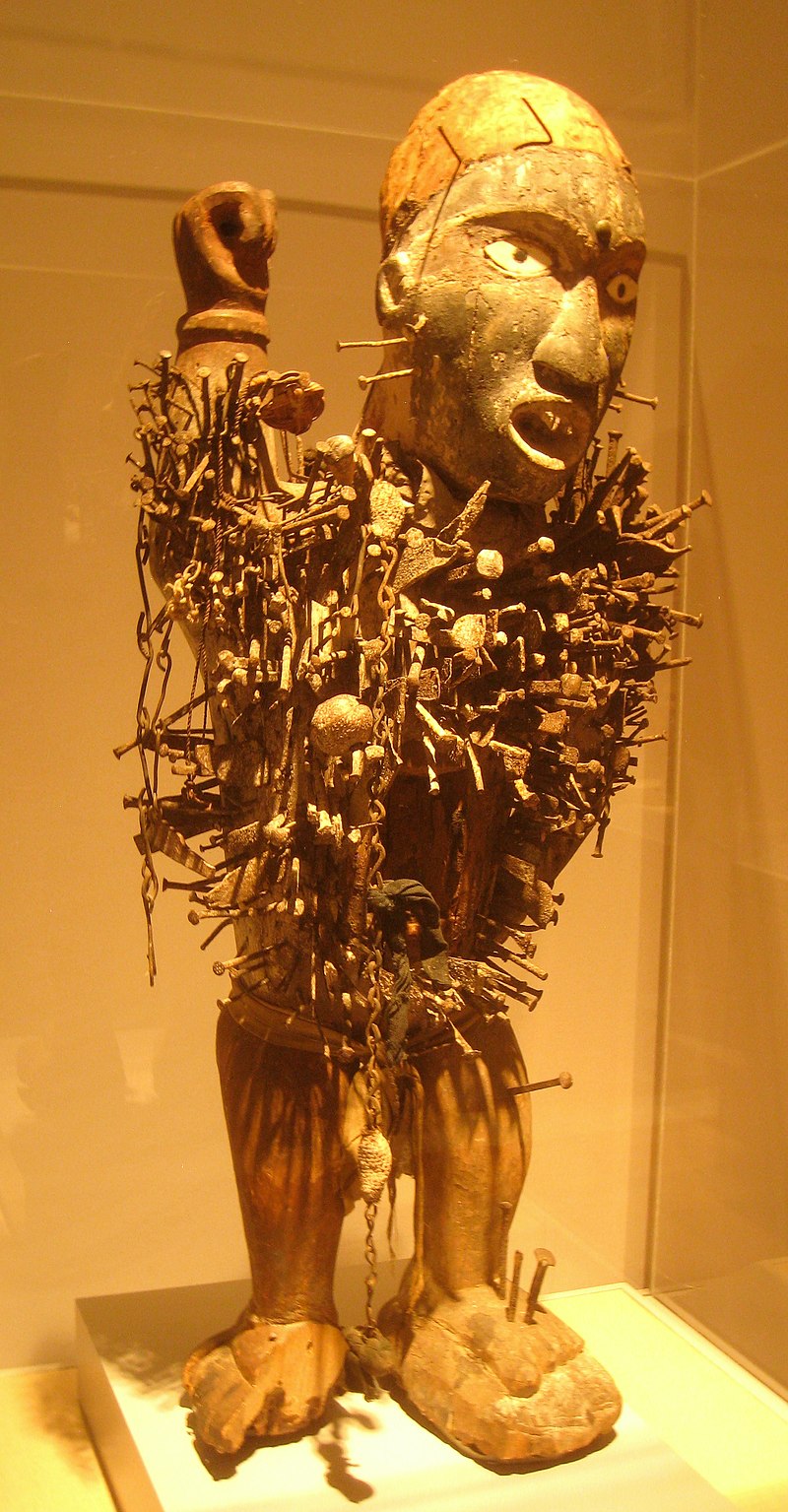 Archeologists found an intact nkisi nkondi inside a slave cabin in Brazoria, Texas. Simbi water spirits are revered in Hoodoo, originating from Central African spiritual practices. When Africans were enslaved in the United States, they blended African spiritual beliefs with Christian baptismal practices. Enslaved African Americans prayed to Simbi water spirits during their baptismal services.[112][113] In 1998, in a historic house in Annapolis, Maryland called the Brice House, archaeologists unearthed Hoodoo artifacts inside the house that linked to the Kongo people. These artifacts are the continued practice of the Kongo's minkisi and nkisi culture in the United States brought over by enslaved Africans. For example, archeologists found artifacts used by enslaved African Americans to control spirits by housing spirits inside caches or nkisi bundles. These spirits inside objects were placed in secret locations to protect an area or bring harm to enslavers. "In their physical manifestations, minkisi (nkisi) are sacred objects that embody spiritual beings and generally take the form of a container such as a gourd, pot, bag, or snail shell. Medicines that provide the minkisi with power, such as chalk, nuts, plants, soil, stones, and charcoal, are placed in the container."[114][115] Nkisi bundles were found on other plantations in Virginia and Maryland. For example, nkisi bundles were found for healing or misfortune. Archeologists found objects believed by the enslaved African American population in Virginia and Maryland to have spiritual power, such as coins, crystals, roots, fingernail clippings, crab claws, beads, iron, bones, and other items assembled inside a bundle to conjure a specific result for either protection or healing. These items were hidden inside enslaved people's dwellings. These practices were concealed from enslavers.[116] In Darrow, Louisiana, at the Ashland-Belle Helene Plantation, historians and archeologists unearthed Kongo and Central African practices inside slave cabins. Enslaved Africans in Louisiana conjured the spirits of Kongo ancestors and water spirits using seashells. Other charms in several slave cabins included silver coins, beads, polished stones, and bones made into necklaces or carried in pockets for protection. These artifacts provide examples of African rituals at Ashland Plantation. Enlavers tried to stop African practices, but enslaved African Americans disguised their rituals by using American materials, applying African interpretations to them, and hiding the charms in their pockets or making them into necklaces to conceal these practices from their enslavers.[117] In Talbot County, Maryland, at the Wye House plantation, where Frederick Douglass was enslaved in his youth, Kongo-related artifacts were found. Enslaved African Americans created items to ward off evil spirits by creating a Hoodoo bundle near the entrances to chimneys, believed to be where spirits enter. The Hoodoo bundle contained pieces of iron and a horseshoe. Enslaved African Americans put eyelets on shoes and boots to trap spirits. Archaeologists also found small carved wooden faces. The wooden carvings had two faces carved into them on both sides, interpreted to represent an African American conjurer who was a two-headed doctor. In Hoodoo, a two-headed doctor is a conjurer who can see into the future and has knowledge about spirits and things unknown.[118] At the Levi Jordan Plantation in Brazoria, Texas, near the Gulf Coast, researchers suggest that plantation owner Levi Jordan may have transported captive Africans from Cuba back to his plantation in Texas. These captive Africans practiced a Bantu-Kongo religion in Cuba, and researchers excavated Kongo-related artifacts at the site. For example, archeologists found the remains of an nkisi nkondi with iron wedges driven into the figure to activate its spirit in one of the cabins called the "curer's cabin." Researchers also found a Kongo bilongo, which enslaved African Americans created using materials from white porcelain to make a doll figure. In the western section of the cabin, they found iron kettles and iron chain fragments, suggesting that the western section of the cabin was an altar to the Kongo spirit Zarabanda.[119][120][121] |
その他のコンゴの影響 テキサス州ブラゾリアの奴隷小屋で、考古学者が完全な形のンキシー・ンコンディを発見した。 シンビの水の精霊は、中央アフリカの精神修養に由来するフードゥー教で崇拝されている。アフリカ人が米国で奴隷として働かされていた時代、彼らはアフリ カの精神信仰とキリスト教の洗礼の慣習を融合させた。奴隷となったアフリカ系アメリカ人は洗礼式の際にシンビの水の精霊に祈りを捧げた。[112] [113] 1998年、メリーランド州アナポリスのブリス・ハウスと呼ばれる歴史的建造物で、考古学者が家屋からコンゴ族に関連するフードゥー教の遺物を発掘し た。これらの遺物は、奴隷となったアフリカ人が米国に持ち込んだコンゴ族のミンキシーとンキシー文化の継続的な実践である。例えば、考古学者は、奴隷とし て働かされていたアフリカ系アメリカ人が、霊を封じ込めるために使用した品々を発見した。これらの品々には、霊を封じ込めるための隠し場所や、奴隷制の加 害者に害をもたらすためのものが含まれていた。「ミンキシー(ンキシー)は、霊的存在を具現化した神聖なものであり、一般的にひょうたん、壷、袋、巻貝な どの容器の形をしている。ミンキシに力を与える薬、例えばチョーク、木の実、植物、土、石、炭などは、容器の中に入れられる。」[114][115] ンキシの束はバージニア州やメリーランド州の他のプランテーションでも発見されている。例えば、ンキシの束は治療や不幸を祓うために使われた。バージニア 州とメリーランド州の奴隷であったアフリカ系アメリカ人が、霊的な力があると信じていた物、例えばコイン、水晶、根、爪切り、カニの爪、ビーズ、鉄、骨、 その他特定の結果を招来するために束の中に集められた品々が、奴隷居住区の内部に隠されていた。これらの慣習は、奴隷所有者には隠されていた。 ルイジアナ州ダローのアシュランド・ベル・ヘリーン農園では、歴史家や考古学者が奴隷小屋からコンゴや中央アフリカの慣習を発掘した。ルイジアナ州の奴隷 となっていたアフリカ人は、貝殻を使ってコンゴの祖先や水の精霊の霊を呼び起こしていた。他の奴隷小屋では、銀貨、ビーズ、磨かれた石、ネックレスに加工 されたりポケットに入れて持ち歩かれたりして保護の目的で用いられた骨などが、お守りとして用いられていた。これらの遺物は、アシュランド農園におけるア フリカの儀式の例を示している。奴隷所有者たちはアフリカの慣習を止めさせようとしたが、奴隷となっていたアフリカ系アメリカ人は、アメリカの素材を使 い、アフリカの解釈を適用し、護符をポケットに隠したり、ネックレスに加工するなどして、これらの慣習を隠そうとした。 メリーランド州タルボット郡のワイ・ハウス農園では、フレデリック・ダグラスが少年時代に奴隷として働かされていた場所であるが、コンゴ関連の遺物が発見 されている。奴隷となっていたアフリカ系アメリカ人は、悪霊が入り込むと信じられていた煙突の入り口付近にフードゥー・バンドル(魔よけ)を置くこと で、悪霊を追い払うための品々を作っていた。フードゥー・バンドルには鉄片や蹄鉄が含まれていた。奴隷となったアフリカ系アメリカ人は、靴やブーツにア イレットを取り付けて悪霊を閉じ込めた。考古学者は、小さな木彫りの顔も発見した。木彫りには両面に2つの顔が彫られており、2つの頭を持つ医師であるア フリカ系アメリカ人の魔術師を表していると解釈されている。フードゥー教では、2つの頭を持つ医師は未来を見通すことができ、霊や未知の事柄に関する知 識を持つ魔術師である。 テキサス州ガルフコーストに近いブラゾリアのリーバイ・ジョーダン農園では、研究者たちが、農園主のリーバイ・ジョーダンがキューバから捕虜として連れて きたアフリカ人をテキサスの農園に移送した可能性を示唆している。これらの捕虜となったアフリカ人はキューバでバンツー・コンゴ宗教を信仰しており、研究 者はその場所でコンゴ関連の遺物を発掘した。例えば、考古学者は「治療師の小屋」と呼ばれる小屋のひとつで、鉄の楔が打ち込まれてその霊を呼び起こすため のnkisi nkondi(コンゴの神像)の残骸を発見した。また、研究者らは奴隷となったアフリカ系アメリカ人が白磁の素材を使って人形の姿を作り出したコンゴの bilongo(聖像)も発見した。小屋の西部では、鉄瓶と鉄の鎖の破片が発見され、小屋の西部がコンゴのザラバンダの霊を祀る祭壇であったことを示唆し ている。[119][120][121] |
Magical amulets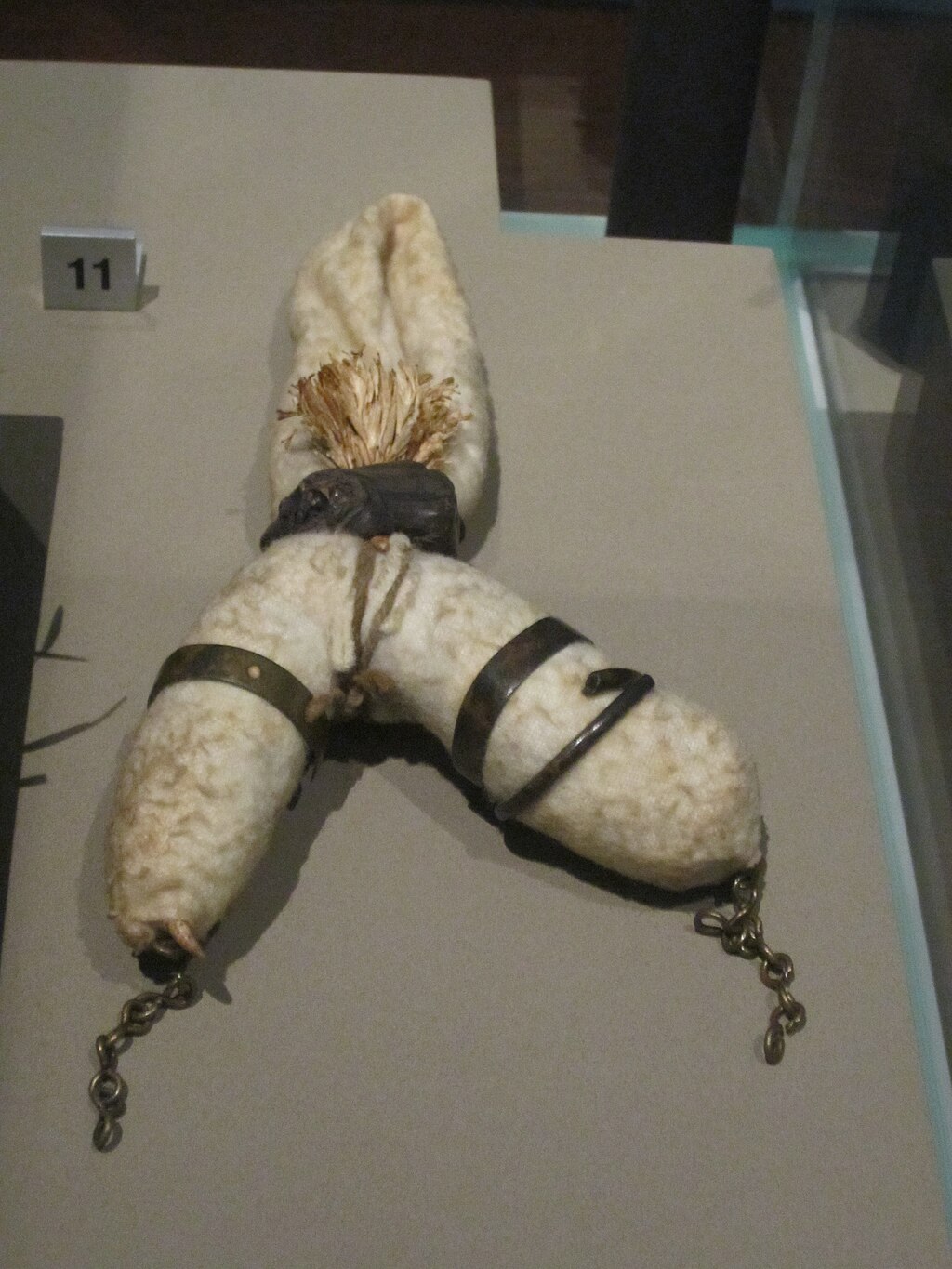 Minkisi (Kongo), World Museum Liverpool - Minkisi cloth bundles were found on slave plantations in the United States in the Deep South.[122] The word goofer in goofer dust has Kongo origins and comes from the Kikongo word Kufwa, which means "to die."[123] The mojo bag in Hoodoo has Bantu-Kongo origins. Mojo bags are also called toby, which is derived from the Kikongo word tobe.[124] The word mojo also originated from the Kikongo word mooyo, which means that natural ingredients have indwelling spirit that can be utilized in mojo bags to bring luck and protection.[125] The mojo bag or conjure bag derived from the Bantu-Kongo minkisi. The nkisi (singular) and minkisi (plural) are objects created by hand and inhabited by a spirit or spirits. These objects can be bags (mojo bags or conjure bags), gourds, shells, or other containers. Various items are placed inside a bag to give it a particular spirit or job to do. Mojo bags and minkisi are filled with graveyard dirt, herbs, roots, and other materials by the Nganga spiritual healer. The spiritual priests in Central Africa became the rootworkers and Hoodoo doctors in African American communities. In the American South, conjure doctors create mojo bags similar to the Ngangas' minkisi bags, as both are fed offerings with whiskey.[126] Another Bantu-Kongo practice in Hoodoo is making a cross mark (Kongo cosmogram) and standing on it to take an oath. This practice is done in Central Africa and the United States in African American communities. When drawn on the ground, the Kongo cosmogram is also used as a powerful protection charm. The solar emblems or circles at the ends and the arrows are not drawn, just the cross marks, which look like an X.[127][94] A man named William Webb helped enslaved people on a plantation in Kentucky resist their oppressors using mojo bags. Webb told the enslaved people to gather some roots and put them in bags, then "march around the cabins several times and point the bags toward the master's house every morning." After following Webb's instructions, according to their beliefs, the enslavers would treat them better.[128] Another enslaved African named Dinkie, known by the enslaved community as Dinkie King of Voudoos and the Goopher King, used goofer dust to resist a cruel overseer on a plantation in St. Louis. Unlike other enslaved people, Dinkie never worked in the same way. He was feared and respected by both Black and white people. Dinkie was known to carry a dried snakeskin, frog, and lizard and sprinkled goofer dust on himself, speaking to the spirit of the snake to wake up its power against the overseer.[129] Henry Clay Bruce, a Black abolitionist and writer, recorded his experience of enslaved people on a plantation in Virginia who hired a conjurer to prevent enslavers from selling them to plantations in the Deep South. Louis Hughes, an enslaved man who lived on plantations in Tennessee and Mississippi, carried a mojo bag to prevent enslavers from whipping him. The mojo bag Hughes carried was called a "voodoo bag" by the enslaved community in the area.[23] Former enslaved person and abolitionist Henry Bibb wrote in his autobiography, Narrative of the Life and Adventures of Henry Bibb, An American Slave, Written by Himself, that he sought the help of several conjurers during his enslavement. Bibb went to these conjurers (Hoodoo doctors) in hopes that the charms they provided would prevent enslavers from whipping and beating him. The conjurers gave Bibb conjure powders to sprinkle around the bed of the enslaver, put in the enslaver's shoes, and carry a bitter root and other charms for protection.[130] |
呪術的お守り ミンキシ(コンゴ) リバプール世界博物館 - ミンキシの布の束は、アメリカ合衆国南部の奴隷農園で発見された。 [122] 「グーファー・ダスト」の「グーファー」という言葉はコンゴ語に由来し、コンゴ語で「死ぬ」を意味する「クフワ」というキコンゴ語に由来する。[123] フードゥー教の「モジョ・バッグ」はバンツー・コンゴ語に由来する。モジョバッグはトビーとも呼ばれるが、これはキコンゴ語のトベに由来する。 [124] モジョという言葉もまた、キコンゴ語のモヨに由来し、自然界の素材には内在する霊魂が宿っており、モジョバッグに利用することで幸運や保護をもたらすこと ができる、という意味である。[125] モジョバッグまたは呪術バッグは、バンツー・コンゴのミンキシーに由来する。ンキシ(単数形)およびミンキシ(複数形)は、手作業で作成され、霊または複 数の霊が宿る物体である。これらの物体は、袋(モジョ・バッグまたはコンジャー・バッグ)、ひょうたん、貝殻、その他の容器である。特定の霊や役割を与え るために、さまざまな品物が袋の中に入れられる。モジョ・バッグおよびミンキシには、ンガングの霊媒師によって墓地の土、ハーブ、根、その他の材料が詰め られる。中央アフリカの霊能者は、アフリカ系アメリカ人社会でルーツワーカーやフードゥー教の医師となった。アメリカ南部では、呪術医がンガンガのミン キシーバッグに似たモジョバッグを作り、両者ともウイスキーの供物を捧げられる。[126] フードゥーにおけるもう一つのバンツー・コンゴの慣習は、十字架の印(コンゴ・コスモグラム)を作り、その上に立って誓いを立てることである。この慣習 は中央アフリカとアフリカ系アメリカ人コミュニティのあるアメリカ合衆国で行われている。地面に描かれる場合、コンゴ・コズモグラムは強力な護符としても 用いられる。太陽の紋章または円の両端と矢印は描かれない。描かれるのは十字架だけである。 ウィリアム・ウェッブという名の男は、ケンタッキー州の農園で奴隷たちがモジョバッグを使って抑圧者に抵抗するのを助けた。ウェッブは奴隷たちに、いくつ かの根を集めて袋に入れ、「毎朝、小屋の周りを数回行進し、袋を主人宅に向ける」ようにと指示した。ウェッブの指示に従った後、彼らの信念によると、奴隷 所有者は彼らをより良く扱うことになった。 ディンキーという名の別の奴隷となったアフリカ人は、奴隷社会ではブードゥー教のディンキー王、あるいはグーファー・キングとして知られていたが、セント ルイスの農園で残酷な監督者に抵抗するためにグーファー・ダストを使用していた。他の奴隷たちとは異なり、ディンキーは決して同じ方法で働かなかった。彼 は黒人からも白人からも恐れられ、尊敬されていた。ディンキーは乾燥させた蛇の皮、カエル、トカゲを持ち歩き、グーファードダストを振りかけ、蛇の霊に語 りかけて、監督者に対する蛇の力を呼び覚ましていたことで知られていた。 黒人奴隷解放論者であり作家でもあったヘンリー・クレイ・ブルースは、バージニア州の農園で奴隷たちが、南部の奥地にある農園に自分たちを売り飛ばさない よう、魔術師を雇ったという経験を記録している。テネシー州とミシシッピ州の農園で奴隷として働いていたルイス・ヒューズは、奴隷所有者が自分を鞭打たな いよう、モジョバッグを所持していた。ヒューズが持っていたモジョバッグは、その地域の奴隷社会では「ヴードゥーバッグ」と呼ばれていた。[23] 元奴隷で奴隷制度廃止論者であったヘンリー・ビブは、自伝『ヘンリー・ビブ、アメリカ人奴隷の生涯と冒険の物語』の中で、奴隷時代に複数の魔術師に助けを 求めたと書いている。ビブは、彼らが提供するお守りが奴隷所有者による鞭打ちや殴打を防ぐことを期待して、これらの呪術師(フードゥー教の医師)のもと を訪れた。呪術師たちは、奴隷所有者のベッドの周りに撒くお守りの粉や、奴隷所有者の靴に入れるもの、苦い根やその他の護符をビブに与えた。[130] |
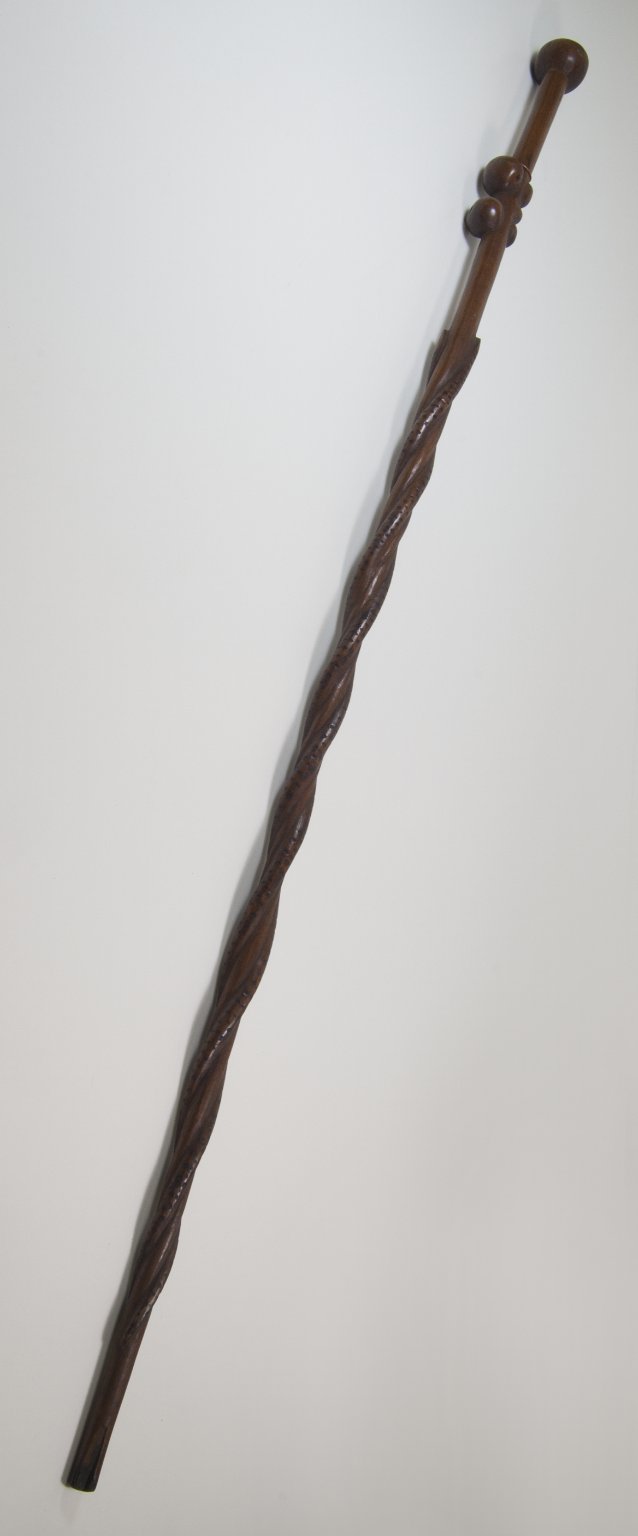 Brooklyn Museum 22.198 Cane / This cane is from the Arts of Africa collection. Bantu-Kongo people in Central Africa and African Americans in the United States crafted similar canes. Historians noted similar meanings and religious uses of canes between African and African Americans, who carved animals and human figures onto canes to conjure illness. The difference with African American canes is the North American animals and historical events, such as sharecropping and lynchings, carved onto them.[131] Other Bantu-Kongo practices present in Hoodoo include the use of conjure canes. In the United States, these canes are decorated with specific objects to conjure spirits and achieve specific results. This practice was brought to the United States during the transatlantic slave trade from Central Africa. Several African American families still use conjure canes today. In Central Africa, Bantu-Kongo banganga ritual healers use ritual staffs called conjure canes in Hoodoo. These canes conjure spirits and heal people. The banganga healers in Central Africa became the conjure doctors and herbal healers in African American communities in the United States.[132][133] The Harn Museum of Art at the University of Florida collaborated with other world museums to compare African American conjure canes with ritual staffs from Central Africa and found similarities between them and other aspects of African American culture that originated from Bantu-Kongo people.[134] Bakongo spiritual protections influenced African American yard decorations. In Central Africa, Bantu-Kongo people decorated their yards and entrances to doorways with baskets and broken shiny items to protect against evil spirits and thieves. This practice is the origin of the bottle tree in Hoodoo. Throughout the American South, in African American neighborhoods, some houses have bottle trees and baskets placed at entrances to doorways for spiritual protection. Additionally, nkisi culture influenced jar container magic. An African American man in North Carolina buried a jar under the steps with water and string for protection. If someone conjured him, the string would turn into a snake. The man interviewed called it inkabera.[135] At Locust Grove plantation in Jefferson County, Kentucky, archeologists and historians found amulets made by enslaved African Americans that had the Kongo cosmogram engraved onto coins and beads. Blue beads were found among the artifacts; in African spirituality, blue beads attract protection to the wearer. In slave cabins in Kentucky and on other plantations in the American South, archeologists found blue beads used by enslaved people for spiritual protection. Enslaved African Americans combined Christian practices with traditional African beliefs.[136][137] Other Kongo influences at Congo Square were documented by folklorist Puckett. African Americans poured libations at the four corners of Congo Square at midnight during a dark moon for a Hoodoo ritual.[138] Historians from Southern Illinois University in the Africana Studies Department documented that about 20 title words from the Kikongo language are in the Gullah language. These title words indicate continued African traditions in Hoodoo and conjure. The title words are spiritual in meaning. In Central Africa, spiritual priests and spiritual healers are called Nganga. In the South Carolina Lowcountry among Gullah people, a male conjurer is called Nganga. Some Kikongo words have an "N" or "M" at the beginning of the word. However, when Bantu-Kongo people were enslaved in South Carolina, the letters N and M were dropped from some title names. For example, in Central Africa, the word for spiritual mothers is Mama Mbondo. In the South Carolina Lowcountry and African American communities, the word for a spiritual mother is Mama Bondo. Additionally, during slavery, it was documented that there was a Kikongo-speaking slave community in Charleston, South Carolina.[139] Robert Farris Thompson was a professor at Yale University who conducted academic research in Africa and the United States and traced Hoodoo's (African American conjure) origins to Central Africa's Bantu-Kongo people in his book Flash of the Spirit: African & Afro-American Art & Philosophy. Thompson was an African Art historian who found through his study of African Art the origins of African Americans' spiritual practices in certain regions in Africa.[140] Former academic historian Albert J. Raboteau in his book, Slave Religion: The "Invisible Institution" in the Antebellum South, traced the origins of Hoodoo (conjure, rootwork) practices in the United States to West and Central Africa. These origins developed a slave culture in the United States that was social, spiritual, and religious.[141] Professor Eddie Glaude at Princeton University defines Hoodoo as part of African American religious life with practices influenced from Africa that fused with Christianity, creating an African American religious culture for liberation.[142] |
 ブルックリン美術館 22.198 杖 / この杖はアフリカ美術コレクションに属する。中央アフリカのバンツー・コンゴ族と米国の黒人アフリカ系アメリカ人は、同様の杖を制作した。歴史家は、杖に 動物の姿や人間の姿を彫り込んで病気を追い払うという、アフリカ人とアフリカ系アメリカ人の杖の持つ意味や宗教的な用途が類似していることを指摘してい る。アフリカ系アメリカ人の杖と異なるのは、北アメリカの動物や歴史的な出来事、例えば小作やリンチなどが彫られている点である。 [131] フードゥーに存在するその他のバンツー・コンゴの慣習には、魔術の杖の使用がある。米国では、特定の目的のために特定の物体で装飾された魔術の杖が、霊 を呼び寄せたり特定の結果を得るために使用される。この慣習は、大西洋奴隷貿易によって中央アフリカからアメリカ合衆国に持ち込まれた。現在でも、アフリ カ系アメリカ人の一部の家庭では、この魔術用の杖が使用されている。中央アフリカでは、バンツー・コンゴ族のバンガンガと呼ばれる呪術師が、フードゥー 教で魔術用の杖と呼ばれる儀式用の杖を使用している。この杖は、霊を呼び寄せたり、人を癒したりする。中央アフリカのバンガンガのヒーラーたちは、米国の アフリカ系アメリカ人コミュニティにおける呪術医や薬草療法士となった。[132][133] フロリダ大学のハーン美術館は、他の世界の美術館と協力し、アフリカ系アメリカ人の呪術用の杖と中央アフリカの儀式用の杖を比較し、バンツー・コンゴ族に 起源を持つアフリカ系アメリカ人の文化の他の側面との類似点を見出した。 バコンゴ族の霊的保護は、アフリカ系アメリカ人の庭の装飾に影響を与えた。中央アフリカでは、バントゥー・コンゴ族の人々は、邪悪な霊や盗賊から身を守る ために、バスケットや壊れた光沢のある品々を庭や玄関に飾っていた。この慣習は、フードゥー教のボトルツリーの起源である。アメリカ南部のアフリカ系ア メリカ人の居住区では、霊的保護のためにボトルツリーやバスケットを玄関に置く家もある。さらに、ンキシー文化は壷の呪術にも影響を与えた。ノースカロラ イナ州に住むアフリカ系アメリカ人の男性は、階段の下に水を入れた壷を埋め、糸を結んで魔除けとしていた。誰かが彼に魔法をかけた場合、その糸は蛇に変化 した。この男性はそれをインカンベラと呼んでいた。 ケンタッキー州ジェファーソン郡のローカストグローブ農園では、考古学者と歴史家が、コングの宇宙図が刻まれた硬貨やビーズを身に付けていた奴隷によって 作られたお守りを見つけた。出土品の中には青いビーズもあった。アフリカの霊性において、青いビーズは身に着ける者に保護をもたらす。ケンタッキー州の奴 隷小屋やアメリカ南部の他の農園で、考古学者は奴隷たちが霊的な保護のために使用していた青いビーズを発見した。奴隷となったアフリカ系アメリカ人は、キ リスト教の慣習と伝統的なアフリカの信仰を組み合わせた。 コンゴ広場におけるその他のコンゴの影響は、民俗学者のパケットによって記録されている。アフリカ系アメリカ人は、フードゥー教の儀式のために、暗い月の 夜の真夜中にコンゴ広場の四隅に供物を捧げた。 南イリノイ大学アフリカ研究学科の歴史家たちは、キコンゴ語の約20の敬称語がガラ語に残っていることを記録している。これらの敬称語は、フードゥー教 や呪術におけるアフリカの伝統が継続していることを示している。これらの敬称語は霊的な意味を持つ。中央アフリカでは、霊的な司祭や霊的な治療者はンガン ガと呼ばれる。サウスカロライナ州ローカントリーのガラ族の間では、男性の呪術師はンガンガと呼ばれる。キンコンゴ語のいくつかの単語は、語頭に「N」ま たは「M」が付く。しかし、バンツー・コンゴ人がサウスカロライナで奴隷として扱われていた時代には、いくつかの称号名から「N」と「M」が脱落した。例 えば、中央アフリカでは、霊的な母親を意味する語は「ママ・ムボンダ」である。サウスカロライナのローカントリーやアフリカ系アメリカ人のコミュニティで は、霊的な母親を意味する語は「ママ・ボンダ」である。さらに、奴隷制時代には、サウスカロライナ州チャールストンにキコンゴ語を話す奴隷コミュニティが 存在していたことが記録されている。[139] ロバート・ファリス・トンプソンは、アフリカと米国で学術研究を行い、著書『Flash of the Spirit: African & Afro-American Art & Philosophy』でフードゥー教(アフリカ系アメリカ人の呪術)の起源を中央アフリカのバンツー・コンゴ人にまで遡ったイェール大学の教授であ る。トンプソンはアフリカ美術史家であり、アフリカ美術の研究を通じて、アフリカ系アメリカ人の精神的な実践の起源がアフリカの特定の地域にあることを発 見した。[140] 元学術史家のアルバート・J・ラボーテーは著書『奴隷の宗教:南北戦争前の南部における「見えない制度」』で、アメリカにおけるフードゥー(コンジュー ル、ルーツワーク)の起源を西アフリカと中央アフリカにさかのぼっている。これらの起源は、社会的、精神的、宗教的な奴隷文化を米国で発展させた。 [141] プリンストン大学のエディ・グラード教授は、フードゥーをアフリカから影響を受けた慣習がキリスト教と融合した、アフリカ系アメリカ人の宗教生活の一部 であり、解放のためのアフリカ系アメリカ人の宗教文化を生み出したものと定義している。[142] |
West African influence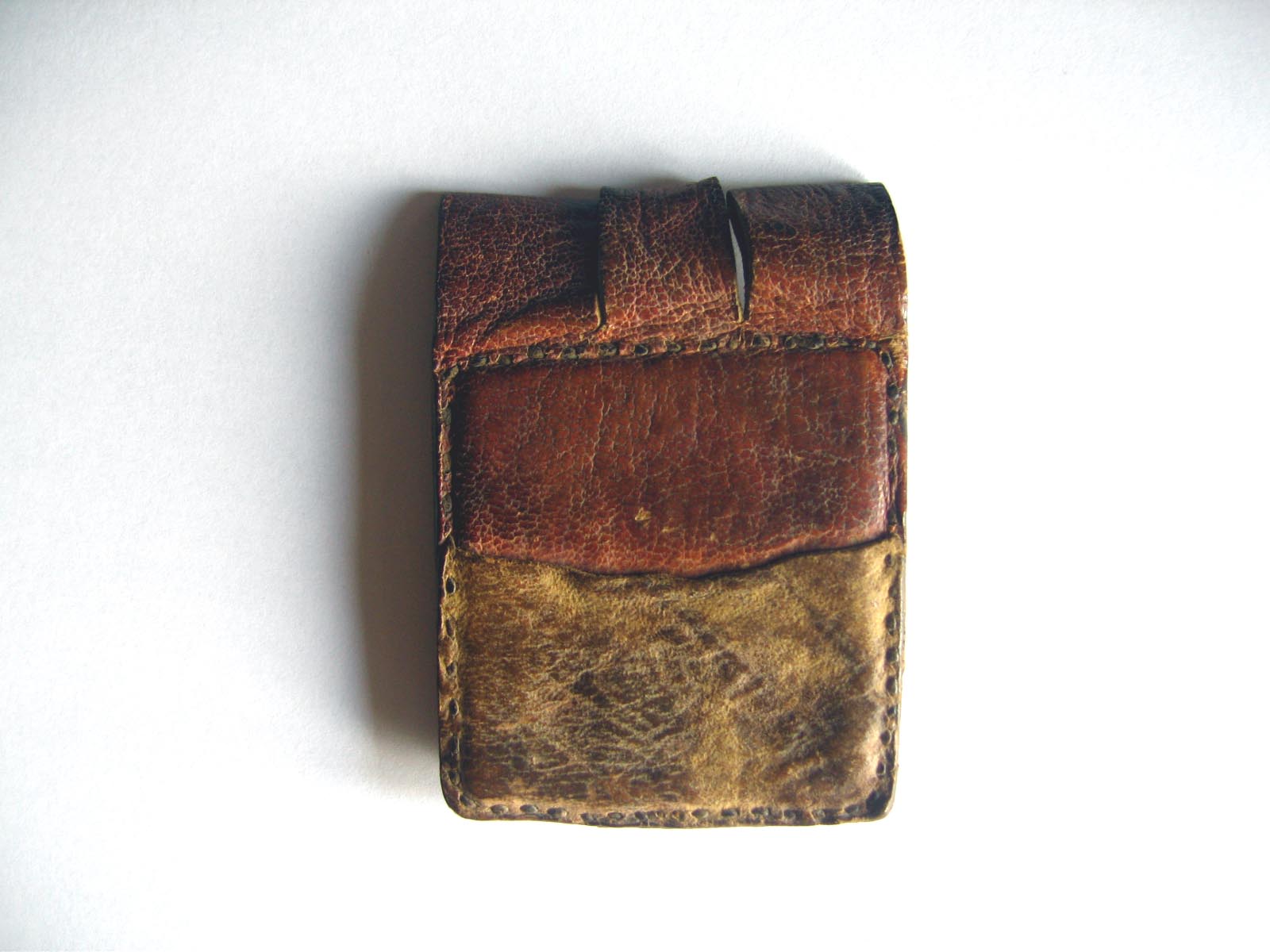 A West African gris-gris bag, the origin of the mojo bag (conjure bag) in Hoodoo[143] Islam A major West African influence in Hoodoo is Islam. As a result of the transatlantic slave trade, some West African Muslims who practiced Islam were enslaved in the United States. Before they arrived in the American South, West African Muslims blended Islamic beliefs with traditional West African spiritual practices. On plantations in the American South, enslaved West African Muslims kept some of their traditional Islamic culture. They practiced Islamic prayers, wore turbans, and the men wore traditional wide-leg pants. Some enslaved West African Muslims practiced Hoodoo. Islamic prayers were used instead of Christian prayers in the creation of charms. Enslaved Black Muslim conjure doctors' Islamic attire was different from that of other slaves, making them easy to identify and ask for conjure services regarding protection from enslavers.[144][145] The Mandingo (Mandinka) were the first Muslim ethnic group imported from Sierra Leone in West Africa to the Americas. Mandingo people were known for their powerful conjure bags called gris-gris (later called mojo bags in the United States). The Bambara people, an ethnic group of the Mandinka people, influenced the making of charm bags and amulets. Words in Hoodoo about charm bags come from the Bambara language. For example, the word zinzin spoken in Louisiana Creole means a power amulet. The Mande word marabout in Louisiana means a spiritual teacher.[146] During the slave trade, some Mandingo people were able to carry their gris-gris bags with them when they boarded slave ships heading to the Americas, bringing the practice to the United States. Enslaved people went to enslaved Black Muslims for conjure services, requesting them to make gris-gris bags (mojo bags) for protection against slavery.[147] |
西アフリカの影響 フードゥー教におけるモジョバッグ(魔術バッグ)の起源である西アフリカのグリグリバッグ[143] イスラム教 フードゥーにおける西アフリカの影響のひとつにイスラム教がある。 大西洋間の奴隷貿易の結果、イスラム教を信仰する西アフリカのイスラム教徒の一部が米国で奴隷となった。 米国南部に到着する前に、西アフリカのイスラム教徒はイスラム教の信仰と伝統的な西アフリカの霊的実践を融合させていた。 米国南部の農園で、奴隷となった西アフリカのイスラム教徒は、イスラム教の伝統文化を一部維持していた。 彼らはイスラム教の祈りを捧げ、ターバンを巻き、男性は伝統的な幅広のズボンを履いていた。西アフリカ系イスラム教徒の奴隷の中には、フードゥー教を信 仰する者もいた。お守りを作る際には、キリスト教の祈りの代わりにイスラム教の祈りが用いられた。奴隷の黒人イスラム教徒の呪術師の服装は、他の奴隷の服 装とは異なり、彼らを識別しやすくし、奴隷制からの保護に関する呪術のサービスを依頼しやすくしていた。[144][145]マンディンゴ(マンディン カ)は、西アフリカのシエラレオネからアメリカ大陸に最初に輸入されたイスラム教徒の民族集団であった。マンディンゴ族は、グリグリ(後にアメリカではモ ジョバッグと呼ばれる)と呼ばれる強力なコンジャーバッグで知られていた。マンディンゴ族の民族集団であるバンバラ族は、お守り袋や魔除けの製造に影響を 与えた。フードゥーにおけるお守り袋に関する用語はバンバラ語に由来する。例えば、ルイジアナ・クレオールで話されるジンジンという言葉は、強力なお守 りを意味する。ルイジアナのマンデ族の言葉maraboutは、霊的な師を意味する。[146] 奴隷貿易の時代、マンディンゴ族の一部は、アメリカ大陸に向かう奴隷船に乗船する際にグリグリ袋を持ち込むことができたため、この習慣はアメリカ合衆国に もたらされた。奴隷となった人々は、魔術のサービスを受けるために奴隷となったブラック・イスラム教徒のもとへ行き、奴隷制度からの保護を目的としたグリ グリ袋(モジョ袋)の作成を依頼した。[147] |
| Vodun Hoodoo also has some Vodun influence. For example, snakeskins are a primary ingredient in goofer dust. Snakes (serpents) are revered in West African spiritual practices because they represent divinity. The West African Vodun water spirit Mami Wata holds a snake in one hand. This reverence for snakes came to the United States during the slave trade, and in Hoodoo, snakeskins are used to prepare conjure powders.[148] Puckett explained that the origin of snake reverence in Hoodoo originates from snake (serpent) honoring in West Africa's Vodun tradition.[149] It was documented by a former slave in Missouri that conjurers took dried snakes and frogs and ground them into powders to "Hoodoo people." A conjurer made a powder from a dried snake and a frog, put it in a jar, and buried it under the steps of the target's house to "Hoodoo the person." When the targeted individual walked over the jar, they had pain in their legs. Snakes in Hoodoo are used for healing, protection, and to curse people.[150][112][113] |
ヴードゥー教 フードゥー教にもヴードゥー教の影響がある。例えば、蛇の皮は魔術の儀式で使用される粉の主要な材料である。蛇(ウミヘビ)は神聖な存在として西アフリ カの精神修行で崇拝されている。西アフリカのヴードゥー教の水の精霊マミ・ワタは片手に蛇を持っている。この蛇に対する崇敬の念は奴隷貿易の時代にアメリ カに伝わり、フードゥー教では蛇の皮が呪術の粉末を調合するために用いられている。[148] パケットは、フードゥー教における蛇崇拝の起源は 西アフリカのヴードゥー教の伝統における蛇(大蛇)崇拝に由来するものである。ミズーリ州の元奴隷が、魔術師が乾燥させた蛇やカエルを粉末にして「フー ドゥーの人々」に与えていたことを記録している。魔術師は乾燥したヘビとカエルの粉末を作り、それを瓶に入れて、標的となる人物の家の階段の下に埋め、 「フードゥーの呪いをかける」のである。標的となった人物が瓶の上を歩くと、足に痛みが生じる。フードゥーにおけるヘビは、治療、保護、呪いのために 用いられる。[150][112][113] |
| Yoruba influences Archaeologists believe there may be Yoruba influences in Hoodoo. The crossroads spirit in Hoodoo, the Man of the Crossroads, may have its origins in the Yoruba people's crossroads spirit, Eshu-Elegba. In West Africa, the Yoruba people leave offerings for Eshu-Elegba at the crossroads.[151] In Hoodoo, the crossroads has spiritual power, and rituals are performed at the crossroads, where there is a spirit that resides to receive offerings. However, the spirit that resides at the crossroads in Hoodoo is not named Eshu-Elegba.[152] Folklorist Newbell Niles Puckett recorded some crossroads rituals in Hoodoo practiced among African Americans in the South and explained their meaning. Puckett wrote, "Possibly this custom of sacrificing at the crossroads is due to the idea that spirits, like men, travel the highways and would be more likely to hit upon the offering at the crossroads than elsewhere."[153] In addition to leaving offerings and performing rituals at the crossroads, sometimes spiritual work or "spells" are left there to remove unwanted energies.[154][155] The belief in an entity that lords over the crossroads is present not only in African Diasporic traditions but also in Indigenous traditions around the world. However, Black Hoodoo practitioners in the Chesapeake region have pushed back on the misinterpretation of that finding, knowing the crossroads artifact to invoke what would later be known as The Man at the Crossroads. As entities shifted, reformed, and were reborn, they married with North American land to emerge as new deities.[citation needed] In Annapolis, Maryland, archaeologists uncovered evidence of West African and Central African practices. A Hoodoo spiritual bundle containing nails, a stone axe, and other items was found embedded four feet below the streets near the capital. The axe inside the Hoodoo bundle showed what archaeologists believe is a cultural link to the Yoruba people's deity Shango. Shango was (and is) a feared Orisha in Yorubaland, associated with lightning and thunder. This fear and respect toward thunder and lightning survived in African American communities. Folklorist Puckett wrote, "and thunder denotes an angry creator." Puckett recorded several beliefs surrounding the fear and respect for thunder and lightning in the African American community. In Hoodoo, objects struck by lightning hold great power. However, Shango and other African deity names were lost during slavery. Therefore, the name Shango does not exist in Hoodoo; it is simply the name "the thunder god." Enslaved and free Black people in New York were known among whites in the area to take an oath to thunder and lightning. During the 1741 slave conspiracy in New York, African American men took an oath to thunder and lightning.[156][157][158] |
ヨルバ族の影響 考古学者は、フードゥーにヨルバ族の影響があるかもしれないと考えている。フードゥーにおける交差路の精神、交差路の男は、ヨルバ族の交差路の精神で あるエシュ・エレグバに起源があるのかもしれない。西アフリカでは、ヨルバ族の人々は岐路にEshu-Elegbaへの供物を残す。[151] フードゥーでは、岐路には霊的な力が宿ると考えられており、供物を受け取る霊が宿る岐路で儀式が行われる。しかし、フードゥーにおける交差点に宿る霊 はエシュ・エレグバとは呼ばれていない。[152] 民俗学者のニューベル・ナイルズ・パケットは、南部のアフリカ系アメリカ人によって行われるフードゥーの交差点の儀式をいくつか記録し、その意味を説明 している。パケットは「おそらく、交差点で生贄を捧げるというこの風習は、霊魂が人間と同じように街道を往来し、他の場所よりも交差点で供物を発見する可 能性が高いという考えによるものだろう」と書いている。[153] 供物を残したり、交差点で儀式を行うことに加えて、 交差点で儀式を行うほか、時には不要なエネルギーを除去するために、霊的な作業や「呪文」がそこに残されることもある。[154][155] 交差点を支配する存在への信仰は、アフリカ系ディアスポラの伝統だけでなく、世界中の土着の伝統にも存在する。しかし、チェサピーク地方のブラック・ フードゥーの実践者たちは、その発見の誤った解釈に異議を唱え、交差道路の遺物が後に「交差道路の男」として知られるようになるものを呼び起こすことを 知っていた。実体が変化し、再形成され、再生するにつれ、それらは北米の大地と結びつき、新たな神として出現した。 メリーランド州アナポリスでは、考古学者が西アフリカと中央アフリカの慣習の証拠を発見した。 釘や石斧、その他の品々を収めたフードゥー教の霊符が、首都近くの道路から4フィート下に埋め込まれた状態で発見された。 フードゥー教の霊符に収められていた斧は、考古学者がヨルバ族の神シャンゴとの文化的つながりであると信じるものを示していた。サンゴは(そして今も) ヨルバランドで畏怖されるオリシャであり、雷や稲妻と関連付けられている。この雷や稲妻に対する畏怖と尊敬の念は、アフリカ系アメリカ人のコミュニティに 生き残っている。民俗学者のパケットは、「そして、雷は怒れる創造主を意味する」と記している。パケットは、アフリカ系アメリカ人のコミュニティにおける 雷や稲妻に対する畏怖と尊敬の念にまつわるいくつかの信念を記録している。フードゥーでは、雷に打たれた物体は大きな力を秘めている。しかし、シャンゴ やその他のアフリカの神の名は奴隷制度の間に失われた。そのため、フードゥー教にはシャンゴという名は存在せず、単に「雷神」と呼ばれる。ニューヨーク の奴隷と自由の身となった黒人たちは、その地域の白人の間で、雷と稲妻に誓いを立てることで知られていた。1741年のニューヨークの奴隷反乱では、アフ リカ系アメリカ人の男性たちが雷と稲妻に誓いを立てた。[156][157][158] |
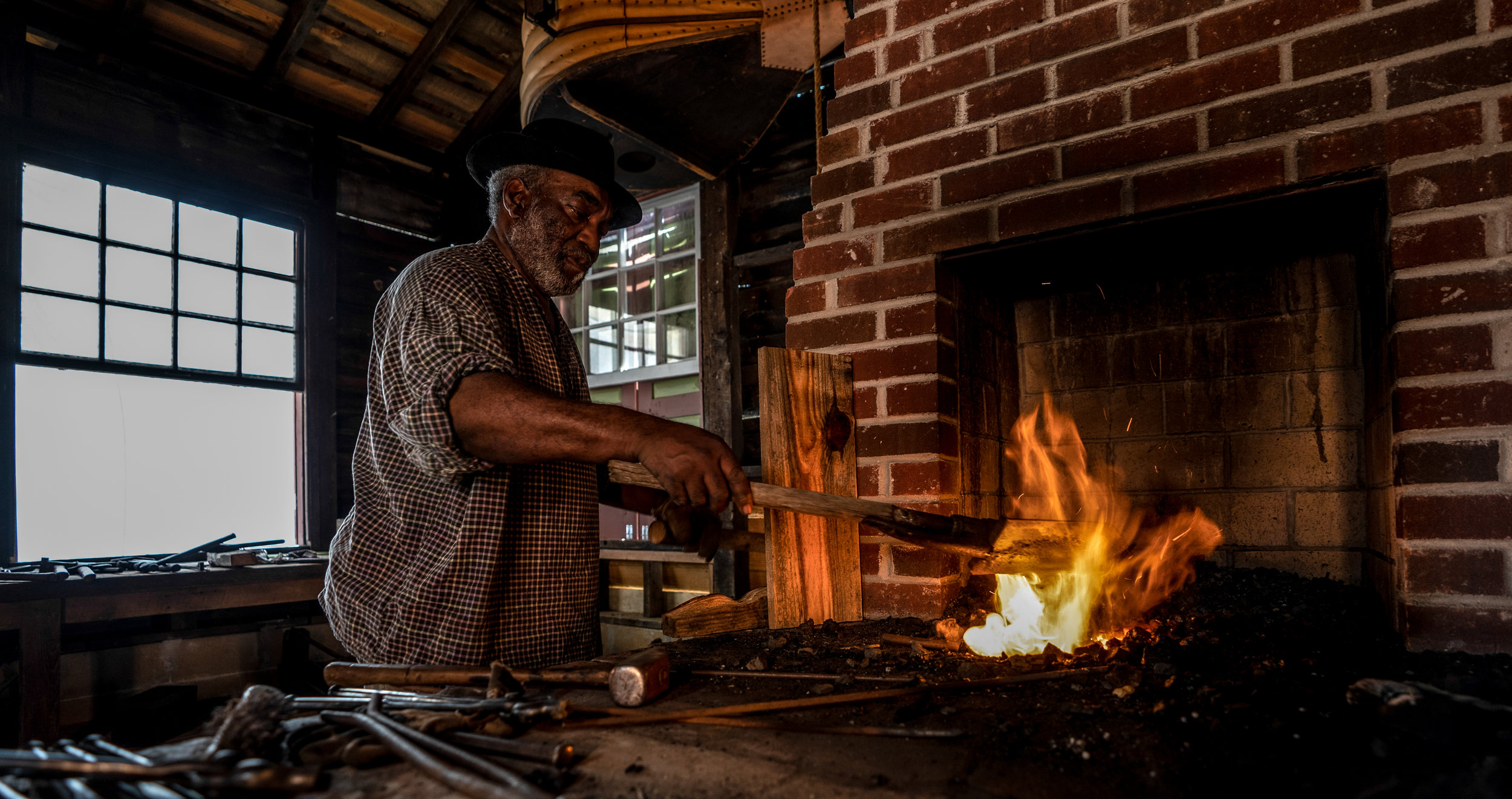 Blacksmiths are respected in Black communities because of their knowledge of the mysteries of metal and its spiritual properties. Another Yoruba influence in Hoodoo is the use of iron. In West Africa, blacksmiths are respected because they are connected to the spirit of metal (iron). Among the Yoruba, the Orisha spirit Ogun corresponds to iron, and Ogun is called the "god of iron." West African people enslaved in the United States maintained respect for enslaved blacksmiths on the plantation and recognition for iron. Horseshoes, made from metal, are used for protection in Hoodoo. In Maryland, archaeologists unearthed artifacts at the Wye House that linked to the Yoruba people's spiritual belief and practice in the reverence of Ogun. This is why African Americans incorporate horseshoes and metal tools in Hoodoo: because there is a spirit that corresponds to metal that can be invoked for protection from physical and spiritual harm. Yoruba cultural influences survived in Hoodoo, but the names and symbols of Orisha spirits are not present because that information was lost during slavery; therefore, only the natural elements that correspond to each Orisha remain.[159][160] In addition, at the Kingsmill Plantation in Williamsburg, Virginia, enslaved blacksmiths created spoons that historians suggest have West African symbols carved onto them that have a spiritual cosmological meaning. In Alexandria, Virginia, historians found in a slave cabin a wrought-iron figure made by an enslaved blacksmith in the eighteenth century, which looked similar to Ogun statues made by blacksmiths in West Africa by the Edo, Fon, Mande, and Yoruba people. West African blacksmiths enslaved in the United States were highly respected and feared by enslaved Black people because they could forge weapons. Gabriel Prosser was an African American enslaved in Richmond, Virginia, and he was a blacksmith. In 1800, Gabriel Prosser planned a slave revolt in Virginia. Historians assert that Prosser became the leader of the planned rebellion because he was a blacksmith. Slave people respected and feared blacksmiths because of their ability to forge weapons and their connection to the spirit of iron. Prosser and other enslaved blacksmiths made weapons for the rebellion, but the revolt never happened because two enslaved people informed the authorities.[161][162] |
 鍛冶屋は、金属の神秘と精神的な性質に関する知識ゆえに、黒人社会で尊敬されている。 フードゥーにおけるもう一つのヨルバ族の影響は、鉄の利用である。西アフリカでは、鍛冶屋は金属(鉄)の精神とつながっているため、尊敬されている。ヨ ルバ族では、オリシャの神オグンが鉄に対応しており、オグンは「鉄の神」と呼ばれている。米国で奴隷として働かされていた西アフリカの人々は、農園で奴隷 として働かされていた鍛冶屋たちを尊敬し、鉄を尊重していた。金属でできた蹄鉄は、フードゥー教の護符として用いられている。メリーランド州では、考古 学者がワイ・ハウスでヨルバ族の精神的な信仰とオグンへの畏敬の念を実践する証拠となる遺物を発掘した。これが、アフリカ系アメリカ人がフードゥーに蹄 鉄や金属製の道具を取り入れる理由である。金属に対応する精霊が存在し、肉体的・精神的な害から身を守るために呼び出すことができるからだ。ヨルバ文化の 影響はフードゥーにも残っているが、奴隷制度の間にその情報が失われたため、オリシャの精霊の名称やシンボルは存在しない。そのため、各オリシャに対応 する自然の要素のみが残っている。 さらに、バージニア州ウィリアムズバーグのキングスミル農園では、奴隷の鍛冶職人たちがスプーンを作っていたが、そのスプーンには西アフリカのシンボルが 刻まれており、精神的な宇宙論的な意味を持っていると歴史家は指摘している。バージニア州アレクサンドリアでは、歴史家が奴隷小屋で18世紀に奴隷の鍛冶 屋が作った錬鉄製の像を発見した。その像は、西アフリカの鍛冶屋が江戸時代、フォン族、マンデ族、ヨルバ族の人々によって作られたオグン像に似ていた。米 国で奴隷として働かされていた西アフリカの鍛冶職人は、武器を鍛造できることから、奴隷として働かされていた黒人たちから尊敬され、恐れられていた。ガブ リエル・プロッサーはバージニア州リッチモンドで奴隷として働かされていたアフリカ系アメリカ人で、鍛冶職人であった。1800年、ガブリエル・プロッ サーはバージニア州で奴隷の反乱を計画した。歴史家たちは、プロッサーが鍛冶職人であったことから、計画された反乱のリーダーとなったと主張している。奴 隷たちは、武器を鍛造する能力と鉄の精霊とのつながりから、鍛冶屋を尊敬し恐れていた。プロッサーと他の奴隷の鍛冶屋たちは反乱のための武器を作ったが、 2人の奴隷が当局に通報したため、反乱は起こらなかった。[161][162] |
Magical amulets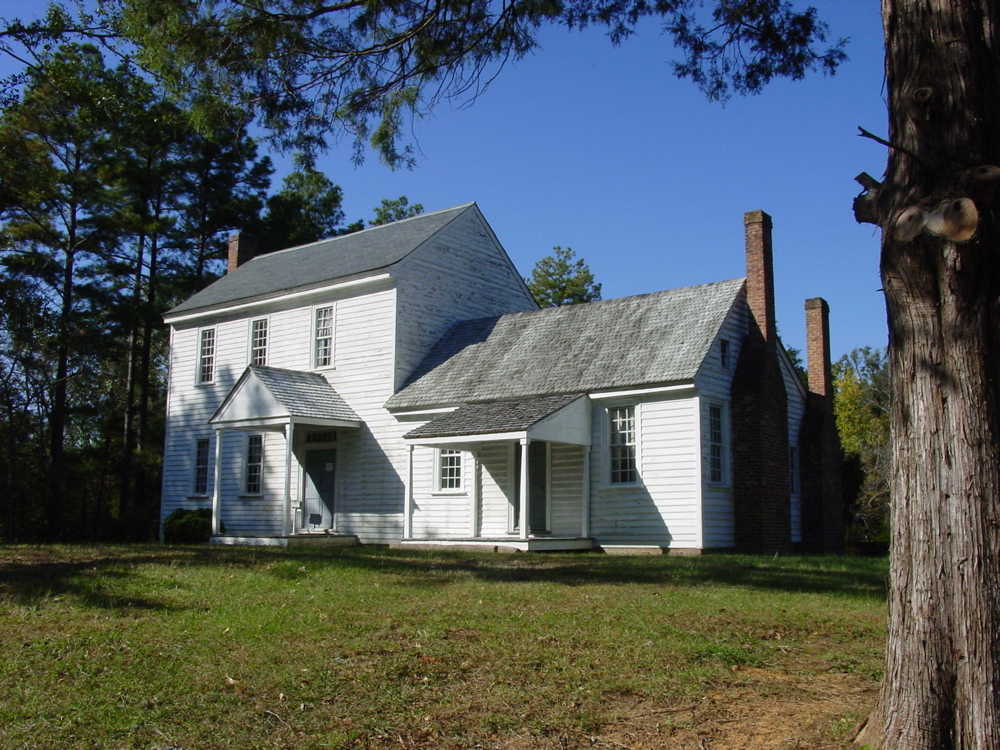 A Hoodoo stick was found between the walls of the Bennehan House to curse (hex) the family. At Stagville Plantation in Durham County, North Carolina, archaeologists found artifacts made by enslaved African Americans that linked to spiritual practices found in West Africa. The artifacts included a divining stick, a walking stick, and cowrie shells. The wealthy enslaver Bennehan family owned Stagville Plantation; they enslaved 900 African American people. Stagville was one of many large slave plantations in the American South. Inside the Bennehan house, a walking stick was found between the walls to curse the Bennehan family. An enslaved person secretly placed the walking stick to put evil spirits on their enslavers, cursing the family for enslaving them. The walking stick was carved into an image of a West African snake spirit (deity) called Damballa. In West-Central Africa and African American communities, only initiates trained in the secrets of the serpent and spirits were allowed to have a conjure stick. These sticks conjured illness and healing, and the spirit of a conjure stick can warn the conjurer of impending danger.[163] Cowrie shells were found on the site and were used by enslaved African Americans to connect with the spiritual element of water "to ensure spiritual guidance over bodies of water." In West Africa, cowrie shells were used for money and corresponded to African water spirits.[164] Other African cultural survivals among the Gullah people include giving their children African names. Linguists have noted identical or similar-sounding names in the Gullah Geechee Nation that can be traced to Sierra Leone, a country in West Africa. Some African Americans in South Carolina and Georgia continue to give their children African names for spiritual and cultural reasons. The spiritual sense is for their ancestors to give their children spiritual power and protection. The cultural reason is so their children will know which region in Africa their ancestry is from.[165][166] The practice of carving snakes onto "conjure sticks" to remove curses and evil spirits and bring healing was found in African American communities in the Sea Islands among the Gullah Geechee people. Snake reverence in African American Hoodoo originated from West African societies.[167] Another practice in Hoodoo that has its origins in West Africa is to moisten conjure bags and luck balls with whiskey (rum). It is believed that conjure bags and luck balls have a spirit, and to keep their spirit alive, conjurers feed them whiskey once a week. The practice has its roots in the Guinea Coast of Africa.[168] The practice of foot-track magic in Hoodoo has its origins in the Ghana. A person's foot track is used to send someone away by mixing their foot track with herbs, roots, and insects, specific ingredients used in Hoodoo to send someone away, and grinding into a powder and placing the powder in a container and throwing it into a flowing river that leaves town, and in a few days, the person will leave town.[169][170] Among the Tshi people in Ghana, spirit possession is not limited to people. Still, objects, inanimate and animate, can become possessed by spirits. Folklorist Puckett documented this same belief among Black people in the South.[171] |
呪術的なお守り ベンヘイアン家の壁の間から、一家を呪う(呪いをかける)ためのフードゥー教の杖が発見された。 ノースカロライナ州ダーラム郡のスタッグビル農場では、考古学者が西アフリカの精神的な慣習と関連する、奴隷として強制労働に従事していたアフリカ系アメ リカ人が作った工芸品を発見した。その工芸品には、占い用の棒、杖、タカラ貝などが含まれていた。富裕な奴隷所有者であったベンネハン家は、スタッグビル 農園を所有しており、900人のアフリカ系アメリカ人を奴隷としていた。スタッグビルは、アメリカ南部に数多くあった大規模な奴隷農園のひとつである。ベ ンネハン家の屋敷内で、ベンネハン家を呪うために杖が壁の間に置かれているのが発見された。奴隷がこっそりと杖を置いたのは、彼らを奴隷としていた者たち に悪霊を呼び、彼らを呪うためであった。この杖には、ダンバラと呼ばれる西アフリカの蛇の精霊(神)の像が刻まれていた。西中央アフリカおよびアフリカ系 アメリカ人のコミュニティでは、蛇と精霊の秘密を教えられた者だけが、この杖を持つことを許されていた。この棒は病気を呼び起こしたり、治癒したりするこ とができ、魔術師は魔術棒の霊が差し迫った危険を警告してくれると信じていた。[163] 貝殻は遺跡から発見されており、奴隷として働いていたアフリカ系アメリカ人が「水域の霊的な導きを確実にする」ために、水の霊的な要素とつながるために使 用されていた。西アフリカでは、タカラ貝は貨幣として使用され、アフリカの水の精霊に対応していた。[164] ガラ族の間で残っているその他のアフリカ文化としては、子供たちにアフリカの名前をつけることが挙げられる。言語学者は、ガラ・ギシー国民の間で、西アフ リカの国であるシエラレオネに起源をたどることができる、同一または類似した響きの名前が使われていることに注目している。サウスカロライナ州やジョージ ア州の一部のアフリカ系アメリカ人は、精神的な理由や文化的な理由から、子供たちにアフリカの名前をつけている。霊的な意味は、子供たちに霊的な力と保護 を与えるために先祖が力を与えるというものである。文化的な理由は、子供たちがアフリカのどの地域から先祖が来たのかを知るためである。 呪いや悪霊を追い払い、癒しをもたらすために「おまじないの棒」に蛇を彫る習慣は、シーアイランドのガラ族のあいだでアフリカ系アメリカ人のコミュニティ で見られる。アフリカ系アメリカ人のフードゥーにおける蛇への崇敬は西アフリカの社会に由来する。[167] フードゥーにおけるもう一つの習慣で、西アフリカに起源を持つものに、おまじないの袋や幸運の玉をウイスキー(ラム酒)で湿らせるというものがある。魔 術袋やラックボールには霊が宿っていると信じられており、その霊を生き続けさせるために、魔術師は週に一度ウイスキーを与える。この慣習はアフリカのギニ ア海岸に起源を持つ。[168] フードゥーにおける足跡呪術の慣習はガーナに起源を持つ。ある人物の足跡を、ハーブ、根、昆虫と混ぜ合わせ、フードゥーで誰かを追い払うために使用さ れる特定の材料である粉末にし、容器に入れて町から流れる川に投げ入れる。すると数日後には、その人物は町を去る。[169][170] ガーナのツシ族の間では、憑依は人間に限ったことではない。それでも、無生物や生物の物体が霊に憑依されることがある。民俗学者のパケットは、南部の黒人 にも同じ信仰があることを記録している。[171] |
Symbolism in African American
quilting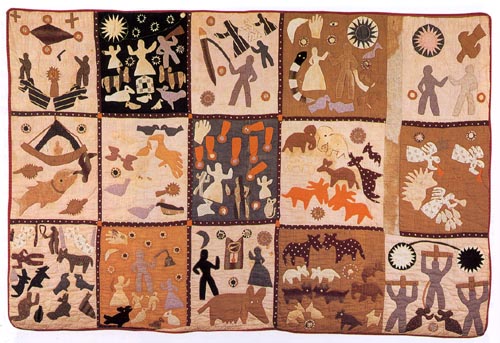 Bible Quilt 1898 / Harriet Powers sewed biblical imagery and African symbols into her quilts. 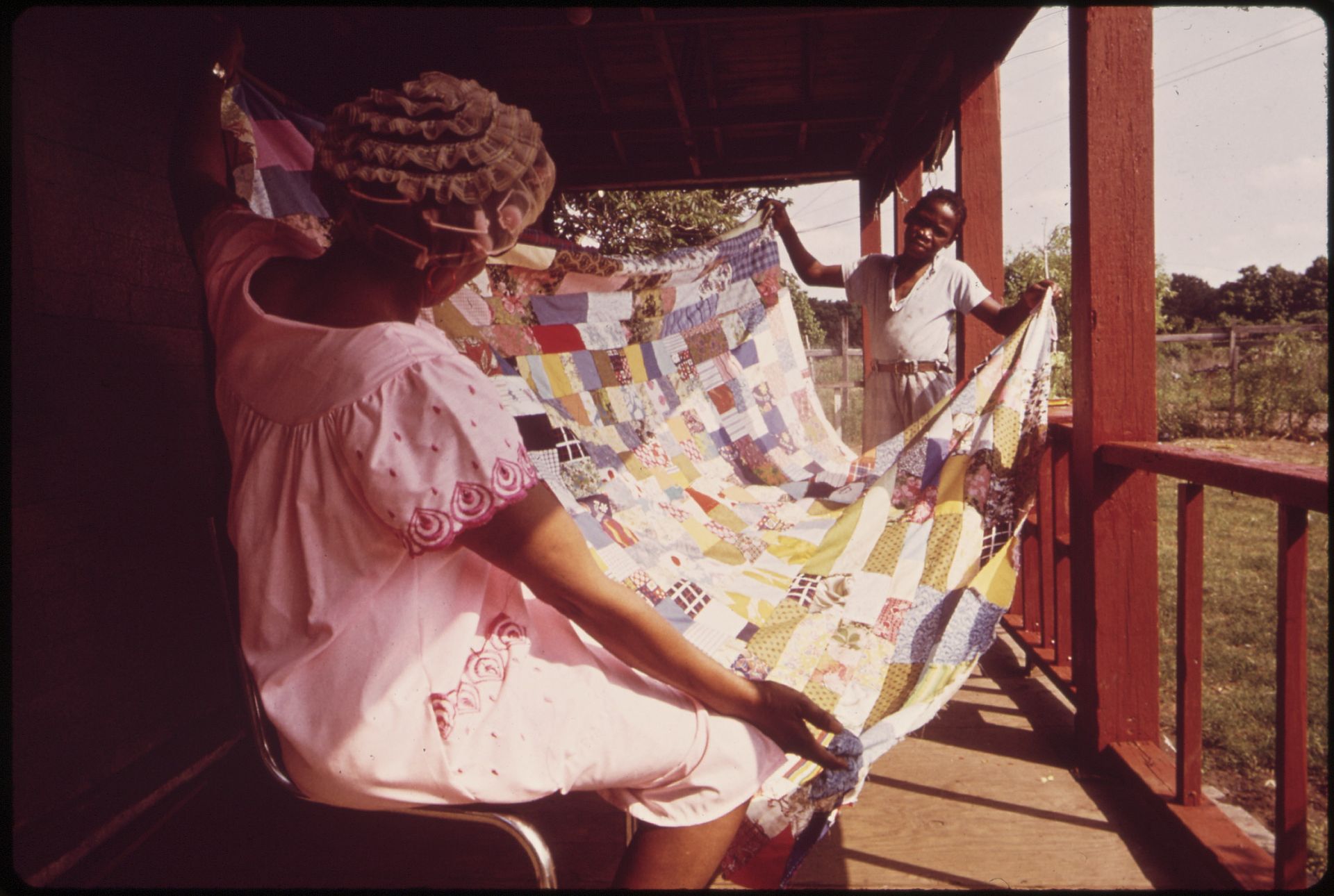 An example of one of Ms. Hunter's quilts on John's Island, South Carolina. Both Central and West African symbolism has been observed in African American quilt-making. African American women made quilts incorporating the Bakongo cosmogram and West African crosses.[172] For example, an African American woman named Harriet Powers made quilts using Bakongo and other West African symbols. On one of Harriet Powers' quilts was a cross with four suns showing Bakongo influence, quilting the Kongo cosmogram onto her quilts. Other African symbols were seen in Powers' quilts. However, scholars suggest Harriet Powers' cross symbol may also be a West African cross, as West Africans also had crosses as symbols. Still, the meaning and use of crosses in West Africa differed from those of the Bakongo people in Central Africa. Fon influence and artistic style was also seen in Powers' quilts. Harriet Powers was born enslaved in Georgia in 1837, and scholars suggest Powers may have been of Bakongo or Dahomean descent.[173][174] African American quilts are influenced by American quilt making and West African designs. Adinkra symbols and other African symbols are sewn into fabrics for spiritual purposes. Quilt makers in the African American community also sewed mojo bags and placed roots, bones, and other items inside bags for protection. Another example was Louiza Francis Combs. Louiza Francis Combs was born in Guinea and came to the United States in the 1860s. Her quilts incorporate West African features of "a red striped pattern, patchwork, and two broad asymmetrical panels." This pattern design is similar to the Mande people's religious concepts that evil spirits travel in a straight path, and to protect oneself from evil spirits, broken lines, and fragmented shapes are sewn into fabrics and quilts.[175] Some of the meanings of the African symbols sewn into quilts were kept secret. Scholars suggest that some African American women who made quilts might have been in a secret society that retained the true spiritual meanings of the symbols in their quilts. Only initiates trained in quilt-making received the spiritual meanings of the African symbols. Some symbols mention the crossroads, the Kongo cosmogram, and the ancestors. Certain colors are used in quilts to protect from evil and invoke ancestral spirits. Scholars interviewed an African American quilt maker in Oregon and have found Yoruba inspirations in her quilts. Her quilts looked similar to the Egungun regalia patterns of the Yoruba people in West Africa, where she incorporated "striped-piecing techniques that pay tribute to her ancestors."[176] |
アフリカ系アメリカ人のキルトにおける象徴主義 聖書キルト 1898年 / ハリエット・パワーズは聖書のイメージとアフリカのシンボルをキルトに縫い込んだ。  サウスカロライナ州ジョンズ島にあるハンターさんのキルトの一例。 アフリカ系アメリカ人のキルト作りでは、中央アフリカと西アフリカの両方の象徴が用いられている。アフリカ系アメリカ人女性たちは、バコンゴの宇宙図や西 アフリカの十字架を組み込んだキルトを作った。[172] 例えば、ハリエット・パワーズという名の黒人女性は、バコンゴやその他の西アフリカのシンボルを用いたキルトを作った。ハリエット・パワーズのキルトのひ とつには、バコンゴの影響を示す4つの太陽が描かれた十字架があり、キルトにはコンゴの宇宙図がキルティングされていた。パワーズのキルトには、アフリカ の他のシンボルも見られた。しかし、学者たちは、ハリエット・パワーズの十字架のシンボルは西アフリカの十字架である可能性もあると指摘している。西アフ リカの人々も十字架をシンボルとしていたからだ。それでも、西アフリカにおける十字架の意味と用途は、中央アフリカのバコンゴの人々とは異なっていた。 フォンの影響と芸術スタイルは、パワーズのキルトにも見られる。ハリエット・パワーズは1837年にジョージア州で奴隷として生まれ、学者たちはパワーズ がバコンゴ族またはダホメ族の血筋であった可能性を示唆している。[173][174] アフリカ系アメリカ人のキルトは、アメリカのキルト作りと西アフリカのデザインの影響を受けている。アディンクラのシンボルやその他のアフリカのシンボル は、精神的な目的のために布地に縫い付けられている。アフリカ系アメリカ人コミュニティのキルト製作者たちは、魔よけの袋を縫い、その中に木の根や骨など のアイテムを入れて保護していた。 もう一つの例として、ルイーザ・フランシス・コームズが挙げられる。 ルイーザ・フランシス・コームズはギニアで生まれ、1860年代にアメリカ合衆国に移住した。 彼女のキルトには、西アフリカの特徴である「赤い縞模様、パッチワーク、左右非対称の幅広パネル」が取り入れられている。このパターンデザインは、マンデ 族の宗教的概念である「悪霊は直線的な経路をたどる」という考え方に類似しており、悪霊から身を守るために、途切れた線や断片的な形が布やキルトに縫い込 まれている。[175] キルトに縫い込まれたアフリカのシンボルの意味の一部は秘密にされていた。研究者たちは、キルトを制作したアフリカ系アメリカ人女性の中には、キルトに描 かれたシンボルの真のスピリチュアルな意味を保持する秘密結社に属していた者もいたかもしれないと示唆している。キルト制作の訓練を受けた者だけが、アフ リカのシンボルのスピリチュアルな意味を受け継いだ。あるシンボルは、交差点、コンゴの宇宙図、先祖について言及している。特定の色は、悪から身を守り、 先祖の霊を呼び起こすためにキルトに使用されている。学者たちはオレゴン州に住むアフリカ系アメリカ人のキルト作家にインタビューを行い、彼女のキルトに ヨルバ族の影響が見られることを発見した。彼女のキルトは西アフリカのヨルバ族のエグンクン祭礼用の衣装の模様と似ており、彼女は「先祖への敬意を表した 縞模様を組み合わせる技法」を取り入れていた。[176] |
Rootwork and healing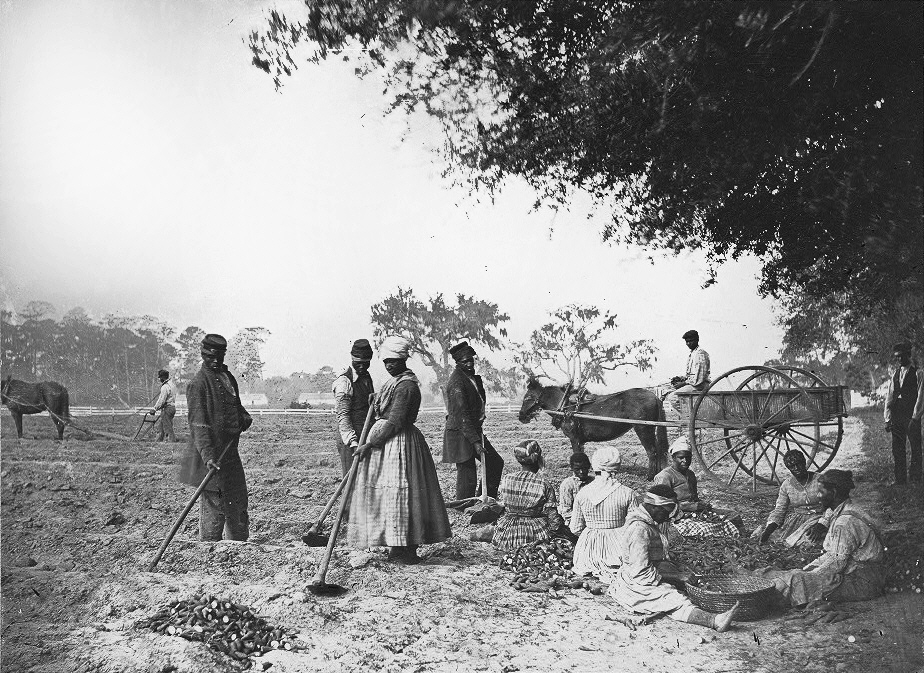 James Hopkinsons plantation slaves planting sweet potatoes African Americans had herbal knowledge brought from West and Central Africa to the United States. European slave traders selected certain West African ethnic groups for their understanding of rice cultivation to be used on slave plantations in the Sea Islands. The region of Africa these ethnic groups were taken from was called the "Rice Coast," made up of what is now Senegal, Sierra Leone, and Liberia. These areas in Africa were suitable for rice cultivation because of their moist semitropical climate; the European slave traders selected people belonging to ethnic groups from these regions to be enslaved and transported to the Sea Islands.[177] During the transatlantic slave trade a variety of African plants were brought from Africa to the United States for cultivation, including okra, sorghum, yam, benneseed (sesame), watermelon, black-eyed peas, and kola nuts.[178] "West African slaves brought not only herbal knowledge with them across the Atlantic; they also imported the actual seeds. Some wore necklaces of wild liquorice seeds as a protective amulet. Captains of slaving vessels used native roots to treat fevers that decimated their human cargo. The ships' hellish holds were lined with straw that held the seeds of African grasses and other plants that took root in New World soil."[179] African plants brought from Africa to North America were cultivated by enslaved African Americans for medicinal and spiritual use for the slave community. They cultivated the plants for white American enslavers for their economic gain.[179][180] African Americans mixed their knowledge of herbs from Africa with European and regional Native American herbal knowledge. In Hoodoo, African Americans used herbs in different ways. For example, when it came to the medicinal use of herbs, African Americans learned some medicinal knowledge of herbs from Native Americans; however, the spiritual use of herbs and the practice of Hoodoo (conjuring) remained African in origin as enslaved African Americans incorporated African religious rituals in the preparation of North American herbs and roots.[179][181][182] Spiritual ritual preparations of herbs and roots were important to enslaved people as they believed combining ceremonies and prayers with medicinal preparations would imbue the medicines with spiritual power and invoke healing spirits that would make the herbal remedies more effective in healing.[183] Enslaved African Americans also used their knowledge of herbs to poison their enslavers.[184] |
根っこ(ルーツ)の治療と癒し ジェームズ・ホプキンスンのプランテーションの奴隷によるサツマイモの植え付け アフリカ系アメリカ人は、西アフリカと中央アフリカからアメリカに持ち込まれた薬草の知識を持っていた。ヨーロッパの奴隷商人たちは、米の栽培について理 解していた特定の西アフリカの民族グループを選び、シー諸島の奴隷プランテーションで使用した。これらの民族グループが連れて行かれたアフリカの地域は 「ライス・コースト」と呼ばれ、現在のセネガル、シエラレオネ、リベリアで構成されている。アフリカのこれらの地域は、湿潤な亜熱帯気候であったため、米 の栽培に適していた。ヨーロッパの奴隷商人たちは、これらの地域から米の栽培に適した民族を選び出し、奴隷としてシー・アイランドに輸送した。 大西洋奴隷貿易の間に、アフリカからアメリカ合衆国にさまざまなアフリカの植物が持ち込まれ、栽培された。オクラ、ソルガム、ヤムイモ、ベニバナ(ゴ マ)、スイカ、ササゲ、コーラの実などである。[178] 「西アフリカの奴隷たちは、薬草の知識だけでなく、実際の種子も大西洋を渡って持ち込んだ。野生のリコリス(カンゾウ)の種をネックレスにして、お守りと して身につけていた者もいた。奴隷船の船長たちは、積み荷である人間を激減させる熱病の治療に、現地の根を使用していた。船の地獄のような船倉には、アフ リカの草やその他の植物の種を保持する藁が敷き詰められ、それらの種は新大陸の土壌に根付いた。」[179] アフリカから北米に持ち込まれたアフリカの植物は、奴隷として連れてこられたアフリカ系アメリカ人によって、奴隷社会における薬用および精神的な用途のた めに栽培された。彼らは、経済的利益を得るために、白人のアメリカ人奴隷所有者たちのために植物を栽培した。[179][180] アフリカ系アメリカ人は、アフリカの薬草に関する知識をヨーロッパや地域のネイティブアメリカンの薬草の知識とミックスさせた。フードゥーでは、アフリ カ系アメリカ人はハーブを異なる方法で使用した。例えば、ハーブの薬用利用に関しては、アフリカ系アメリカ人はネイティブアメリカンからハーブの薬効に関 する知識を学んだが、ハーブの精神利用やフードゥー(魔術)の実践は、奴隷としてアフリカから連れて来られたアフリカ系アメリカ人が北アメリカのハーブ や根の準備にアフリカの宗教儀式を取り入れたため、アフリカ起源のままであった。[179][181][1 82] ハーブや根のスピリチュアルな儀式準備は、奴隷たちにとって重要であった。彼らは、儀式や祈りを薬の準備と組み合わせることで、薬にスピリチュアルな力が 宿り、癒しの霊を呼び起こし、ハーブ療法がより効果的に癒やしをもたらすと信じていたからである。[183] 奴隷となったアフリカ系アメリカ人は、ハーブに関する知識を使って、自分たちを奴隷として支配する人々を毒殺することもあった。[184] |
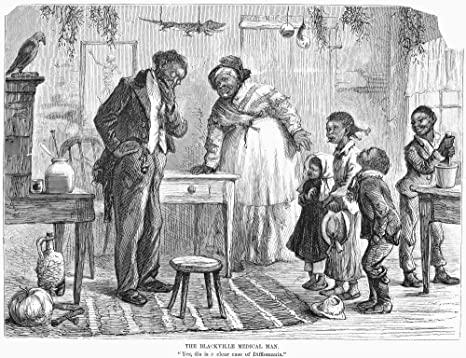 African American root doctors developed a variety of herbal cures in the American South. During slavery, some enslaved African Americans served as community doctors for Black people and whites, despite many white Americans being cautious of Black doctors because some enslaved Africans poisoned enslavers. Enslaved Africans found herbal cures for animal poisons and diseases that helped both Black and white Americans during slavery. For example, African traditional medicine proved beneficial during a smallpox outbreak in the colony of Boston, Massachusetts. An enslaved African named Onesimus was held in bondage by Cotton Mather, a Puritan minister in the colony. Several smallpox outbreaks had plagued Boston since the 1690s. Onesimus "introduced the practice of inoculation to colonial Boston", which helped reduce the spread of smallpox in the colony. Onesimus told Mather that when he was in Africa, Africans performed vaccinations to reduce the spread of diseases in their societies.[185][186] An enslaved man was given his freedom when he discovered a cure for a snake bite using herbal medicines.[187] Enslaved Jane Minor was emancipated because of her medical expertise during an 1825 fever epidemic in Virginia and eventually ran her own hospital, using her earnings to free at least 16 slaves.[188] Enslaved African Americans most often treated medical problems themselves using the herbal knowledge they brought with them from Africa, as well as some herbal knowledge learned from regional Native Americans. Many enslavers lacked the knowledge to treat medical conditions, while some did not care. Laws passed preventing enslaved African Americans from providing medical care for themselves further exacerbated this problem. Enlavers passed preventative medical laws because they feared enslaved people would poison them with herbal knowledge.[189] In 1748, Virginia passed a law to prevent African Americans from administering medicines, because white Americans feared Black folk practitioners would poison them. However, some white Americans in Virginia continued to rely on African American herbal doctors because their cures were better than the white doctors'.[190] In addition, in 1749 in South Carolina the General Assembly passed a law prohibiting enslaved people from practicing medicine or dispensing medication, punishable by death.[191] Enlavers feared a possible slave revolt and being poisoned by enslaved people, so much so that white Americans refused to allow enslaved African Americans medical knowledge. Many of the medicines used by white Americans were chemical, while African Americans used natural herbs and roots and made them into teas.[192] In a 1911 autobiographical account, Reverend Irving E. Lowery, who was born enslaved in Sumter County, South Carolina in September 1850, recalled an incident where an enslaved woman named Mary on the Frierson plantation was believed to have died from conjure. A rumor circulated that an enslaved woman named Epsey from another plantation poisoned Mary because she was jealous of the attention Mary received from a man on another plantation whom Epsey was romantically interested in. According to Lowery's written account, it was rumored that Epsey received a poison from an enslaved conjurer and secretly administered it to Mary, who died six months later. Lowery wrote that many of the conjure practices of enslaved Black people in Sumter County were influenced by Vodun from West Africa.[193] Among enslaved people, there was a spiritual belief in refusing to plow a field on a straight path. Some enslaved people believed in the West African Mande concept that evil spirits travel in a straight path, and to protect themselves from evil spirits, enslaved African Americans refused to plow fields in a straight path to break lines for spiritual protection against evil spirits.[194] Enslaved African American women used their knowledge of herbs to induce miscarriages during pregnancy to prevent enslavers from enslaving their children and to prevent their children from being born into slavery. In the nineteenth century, Black women used herbs such as pennyroyal and senna to induce abortion.[195] Enslaved African Americans only trusted their doctors and not white doctors because enslaved doctors' cures were sometimes considered better than those of white doctors. Enslaved African Americans and freemen learned the local flora and knew what plants to use for treating illnesses. Enslaved herb doctors were the primary doctors on slave plantations, and some of them also practiced conjure.[196][179] Before and after the Civil War, African Americans adjusted to their environments and learned the local flora from Indigenous peoples, books, and their study of plants. [197] Europeans also brought their plants from Europe to the United States for herbal cures in America. African Americans incorporated these European herbs into their herbal practice.[198] Agricultural scientist George Washington Carver was called a root doctor (practitioner of Hoodoo who can treat illnesses with plants) by Black people because of his knowledge of using plants to heal the body.[199] Jim Jordan was the son of former slaves born in North Carolina and learned Hoodoo and conjuring from his family. He healed his clients using rootwork, operated a conjure Hoodoo store, and became a multi-millionaire.[200] |
 アフリカ系アメリカ人のルーツを持つ医師たちは、アメリカ南部でさまざまな薬草療法を開発した。 奴隷制時代には、奴隷としてアフリカ人が主人を毒殺した事件もあったため、多くの白人がアフリカ系医師を警戒していたにもかかわらず、一部の奴隷のアフリ カ人は黒人と白人のコミュニティの医師として活躍した。奴隷としてアフリカ人が動物毒や病気の薬草療法を見つけ出し、奴隷制時代に黒人と白人の両方のアメ リカ人を救った。例えば、アフリカの伝統医学は、マサチューセッツ州ボストン植民地で天然痘が流行した際に有益であることが証明された。奴隷としてボスト ン植民地に連れてこられたアフリカ人、オネシモスは、植民地の清教徒の牧師であるコットン・マザーに奴隷として拘束されていた。1690年代からボストン では天然痘の流行が何度か発生していた。オネシモスは「植民地ボストンに種痘の実践を導入」し、それによって植民地における天然痘の蔓延を抑制することに 貢献した。オネシモスはマザーに、自分がアフリカにいたとき、アフリカ人は社会における病気の蔓延を抑制するために予防接種を行っていたと語った。 [185][186] 奴隷の男性が、薬草を使って蛇に咬まれたときの治療法を発見したとき、彼は自由の身となった [187] 奴隷のジェーン・マイナーは、1825年にバージニア州で発生した熱病の流行時に医療の専門知識を発揮したため解放され、最終的には自身の病院を経営し、 その収益で少なくとも16人の奴隷を解放した。 奴隷のアフリカ系アメリカ人の多くは、アフリカから持ち込んだ薬草の知識や、地域のアメリカ先住民から学んだ薬草の知識を使って、医療問題を自分自身で治 療することが多かった。多くの奴隷所有者は病気の治療に関する知識を持たず、また、一部の所有者は気にもかけなかった。奴隷制廃止派が奴隷制廃止派自身に よる医療行為を禁じる法律を可決したことで、この問題はさらに悪化した。奴隷制廃止派が予防医療法を可決したのは、奴隷制廃止派が奴隷制廃止派自身による 薬草療法で毒殺されることを恐れたためである。[189] 1748年、バージニア州では、黒人開業医が毒殺するのではないかと白人が恐れたため、アフリカ系アメリカ人が薬を投与することを禁じる法律が可決され た。しかし、バージニア州の一部の白人は、白人医師よりもアフリカ系アメリカ人の薬草医の治療の方が優れていたため、彼らを頼り続けた。[190] さらに、1749年にはサウスカロライナ州の州議会が、 奴隷に医療行為や投薬を禁じる法律が可決され、違反者は死刑となった。[191] 奴隷制支持者たちは、奴隷による反乱や毒殺を恐れていたため、奴隷であるアフリカ系アメリカ人に医療知識を与えることを白人のアメリカ人は拒んだ。白人の アメリカ人が使用していた薬の多くは化学薬品であったが、アフリカ系アメリカ人は天然のハーブや根を使用し、お茶としていた。[192] 1911年に発表された自伝の中で、1850年9月にサウスカロライナ州サムター郡で奴隷として生まれたアーヴィング・E・ローリー牧師は、フリーソン農 園の奴隷メアリーが呪術によって死んだと信じられていた事件について回想している。別の農園のエプシーという名の奴隷の女性が、自分が恋愛感情を抱いてい た別の農園の男性からメアリーが受けた関心をねたみ、メアリーを毒殺したという噂が広まった。ローリーの記録によると、エプシーが他の奴隷の魔術師から毒 を受け取り、それを密かにメアリーに投与したという噂が流れた。メアリーは6か月後に死亡した。ローリーは、サムター郡の奴隷黒人の魔術の多くは西アフリ カのヴードゥー教の影響を受けていると記している。 奴隷の間では、まっすぐな道で畑を耕すことを拒否するというスピリチュアルな信仰があった。一部の奴隷は、悪霊はまっすぐな道を移動するという西アフリカ のマンデの概念を信じており、悪霊から身を守るために、奴隷となったアフリカ系アメリカ人は、悪霊に対するスピリチュアルな保護のためにまっすぐな道を耕 すことを拒否し、悪霊に対する保護のための線を断ち切った。 奴隷として捕らえられたアフリカ系アメリカ人の女性たちは、妊娠中に流産を誘発するハーブの知識を活用し、自分の子供たちが奴隷として捕らえられるのを防 ぎ、子供たちが奴隷として生まれてくるのを防いだ。19世紀には、黒人女性たちはペニーロイヤルやセンナなどのハーブを用いて中絶を行っていた。 [195] 奴隷として捕らえられたアフリカ系アメリカ人は、医師を信頼していたが、それは白人医師ではなく、奴隷として捕らえられた医師の治療が、白人医師の治療よ りも優れていると見なされることがあったからである。奴隷となったアフリカ系アメリカ人と自由民は、地元の植物相を学び、病気の治療にどの植物を用いるべ きかを知っていた。奴隷となった薬草医は奴隷農園における第一線の医師であり、その中には呪術も行う者もいた。[196][179] 南北戦争の前後、アフリカ系アメリカ人は環境に適応し、先住民や書籍、植物の研究から地元の植物相を学んだ。[197] ヨーロッパ人もまた、アメリカでの薬草療法のためにヨーロッパからアメリカに植物を持ち込んだ。アフリカ系アメリカ人は、これらのヨーロッパの薬草を彼ら の薬草療法に取り入れた。[198] 農業科学者のジョージ・ワシントン・カーヴァーは、植物を使って体を癒す知識を持っていたため、黒人たちから「ルート・ドクター(フードゥーの実践者 で、植物を使って病気を治療できる人)」と呼ばれていた。[199] ジム・ジョーダンは、ノースカロライナで生まれた元奴隷の息子であり、家族からフードゥーと魔術を学んだ。彼はルーツワークを用いて顧客を癒し、フー ドゥーの店を経営し、億万長者となった。[200] |
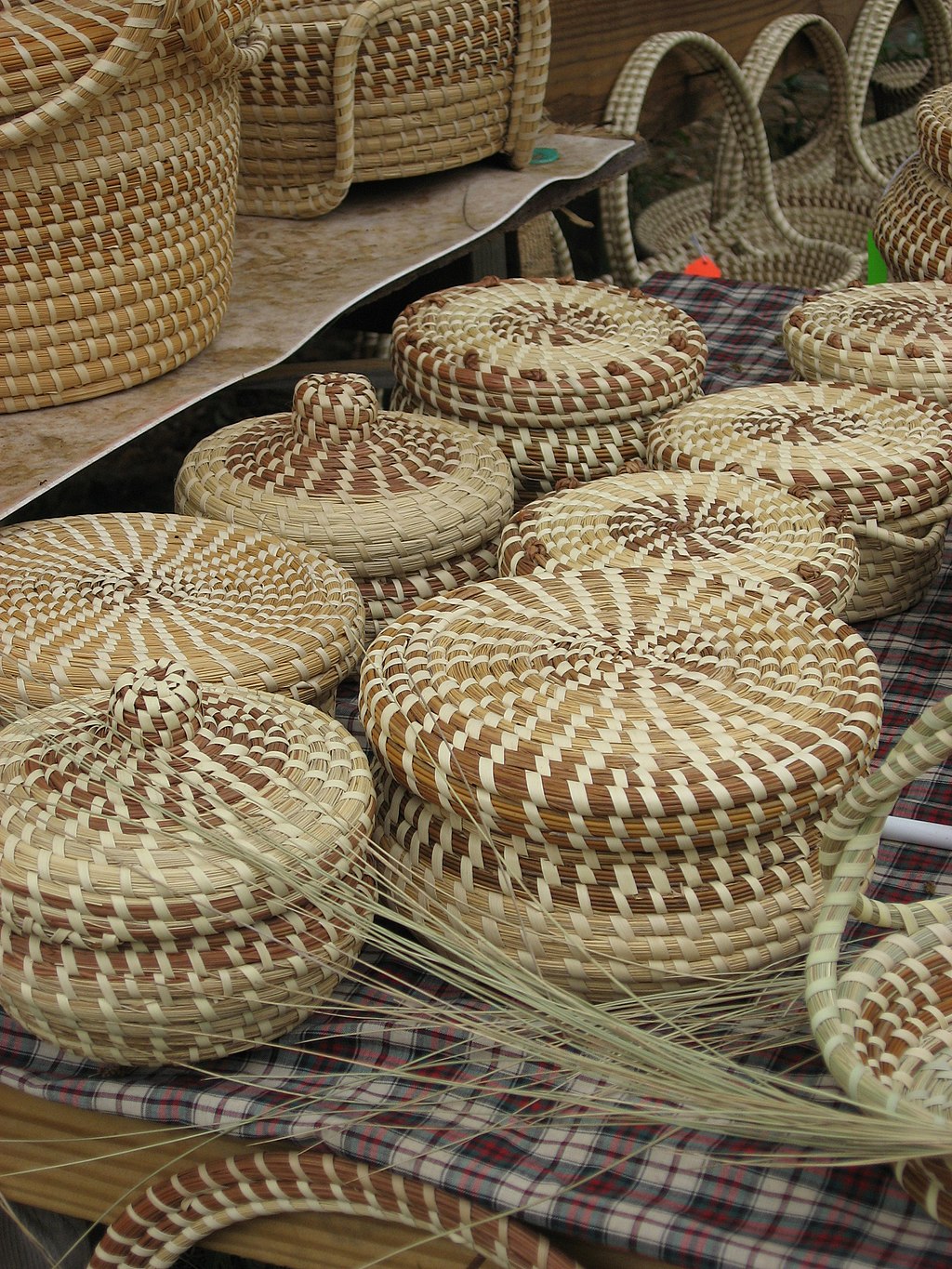 Edisto Island National Scenic Byway - Sweetgrass Baskets - A Gullah Tradition - NARA - 7718281 - Sweetgrass baskets designs and styles are similar to the ones made in West Africa. Zora Neale Hurston researched African American communities and documented the herbal practices of Black people. African American rootworkers sometimes served as herbal doctors or conjure doctors. African American herbal doctors used their knowledge of herbs to treat diseases such as heart disease, arthritis, cold, flu, and other illnesses. African American conjure doctors performed apotropaic magic and used herbs to remove curses and evil spirits and bring good luck. Sometimes, there were a few African American rootworkers who did both. Hurston documented a traditional Hoodoo herb gatherer called a swamper. This person gathered their herbs and roots from swamps (wetlands). Whether a Hoodoo practitioner is a swamper or not, collecting certain roots and herbs in nature requires a prayer before taking the root or herb, an offering to the spirit of the plants, and a ceremony. If there are snakes that guard herbs and roots, the snakes should not be killed by the Hoodoo practitioner.[201][202] It was documented in an Ohio slave narrative that enslaved African Americans combined conjure with herbal healing. Spiritual charms imbued with power through prayer were combined with herbal teas to treat chronic illness.[203] In South Carolina, slaves treated worms using jimsonweed. Rheumatism was treated by massaging eelskin onto affected areas or ingesting a decoction of oak bark or pokeberry tea. Some illnesses were believed to be caused by sorcery (conjure), and the only remedy was to reverse the curse and return it to the person who conjured it or clear it with conjure.[204] Traditional herbal healing remains a continued practice in the Gullah Geechee Nation. Gullah people gather roots from their backyards and gardens and make medicines to heal diseases and treat illnesses.[205] In northeast Missouri, historians and anthropologists interviewed African Americans and found continued West African herbal traditions of using roots and herbs to treat illnesses. The knowledge of how to find herbs in nature and make them into teas and tonics continued in African American communities. The remedy most commonly used in Black communities in northeast Missouri to ward off a cold was carrying a small bag of Ferula assafoetida; the folk word is asfidity, a plant from the fennel family.[206] In other regions of the South, African Americans made asfidity balls placed around a baby's neck to relieve pain. The inside of the beech tree bark was boiled in water to treat cold and pneumonia. African Americans used bay leaf to attract money by placing a bay leaf next to a dollar bill inside a wallet or a purse, and the person would always attract money. Coffee grounds were used to predict the future. To cause misfortune in a family's home, cayenne pepper was mixed with sulfur and crossing incense and sprinkled around the target's home. To relieve corn and callouses, baking soda, castor oil, and lard were made into a paste and wrapped around the affected area using a cloth. To cure cuts, African Americans placed spider webs and turpentine on wounds. The devil's shoestring placed in the pocket brings good luck and will trip up the devil. Placing an egg in the hand of a murder victim when they are in their coffin is believed to cause the murderer to surrender to the police in three days. Mustard seeds sprinkled around the bed before going to sleep will protect someone from a boo hag (a person who can astral travel and leave their body at will and attack people in their sleep) from draining their life force.[207] To treat heart ailments, nutmeg was ground into a powder and mixed with water and drunk once a week. To decrease body temperature, jimson weed was tied around the head and ears. To treat measles, mullein leaves were boiled into a tea. To treat the common cold, pine straw was made into a tea. Salt was used to prevent a troublesome person from returning to your home by throwing salt behind the person as they walked out of the house, ensuring they would never return. To cleanse the soul and spirit, salt baths are taken. To prevent evil spirits from entering the home, sulfur was sprinkled around the outside of the house. The bark from a red oak tree was boiled into a tea to reduce a fever or chills. The term smelling meant someone could detect spirits by scent; smelling cinnamon, nutmeg, and ginger meant spirits were present. Liquid tar was added to hot water to ease frequent coughs and colds.[208] |
 エディスト島国立シーニックバイウェイ - スウィートグラス・バスケット - ガラ族の伝統 - NARA - 7718281 - スウィートグラス・バスケットのデザインやスタイルは西アフリカで製作されたものに似ている。 ゾラ・ニール・ハーストンはアフリカ系アメリカ人のコミュニティを研究し、黒人の薬草療法を記録した。アフリカ系アメリカ人のルーツワーカーは、薬草医や 呪術医を務めることもあった。アフリカ系アメリカ人の薬草医は、ハーブに関する知識を活かして、心臓病、関節炎、風邪、インフルエンザ、その他の病気の治 療を行っていた。アフリカ系アメリカ人の呪術医は、厄除けの呪術を行い、ハーブを用いて呪いや悪霊を追い払い、幸運をもたらした。時には、両方の役割をこ なすアフリカ系アメリカ人のルーツワーカーもいた。ハーストンは、スワンパーと呼ばれる伝統的なフードゥーのハーブ採集者を記録している。この人格は、 湿地帯(swamp)からハーブや根を集めていた。フードゥーの実践者がスワンパーであるかどうかに関わらず、自然界から特定の根やハーブを集めるに は、根やハーブを取る前に祈りを捧げ、植物の精霊に供物を捧げ、儀式を行う必要がある。ハーブや根を守る蛇がいる場合、フードゥーの実践者はその蛇を殺 してはならない。 オハイオ州の奴隷の証言によると、奴隷としてアフリカ系アメリカ人は、呪術と薬草療法を組み合わせた。 祈りによって力を得た霊符を薬草茶と組み合わせて、慢性疾患の治療に用いた。リューマチは、患部にウナギの皮をマッサージしたり、オーク樹皮の煎じ薬や ポークベリー茶を摂取することで治療された。 呪術(コンジャー)によって引き起こされると考えられていた病気もあり、その場合の唯一の治療法は、呪いをかけた人格に戻すか、コンジャーによって呪いを 解くことだった。[204] 伝統的な薬草療法は、ガラ族の国民の間で今もなお続けられている。ガーラの人々は裏庭や庭から根を集め、病気を癒し、病気を治療するための薬を作る。 [205] ミズーリ州北東部では、歴史家や人類学者がアフリカ系アメリカ人にインタビューを行い、西アフリカの伝統的な薬草療法が根やハーブを病気の治療に用いる形 で継続されていることを発見した。自然界で薬草を見つけ、それを茶や強壮剤にする方法に関する知識は、アフリカ系アメリカ人社会で受け継がれていた。ミ ズーリ州北東部の黒人社会で風邪を予防するために最も一般的に使用されていた治療法は、フェルラ・アサフォエティダの小袋を持ち歩くというもので、民間伝 承ではアスフィディ(asfidity)と呼ばれ、ウイキョウ科の植物である。 南部の他の地域では、アフリカ系アメリカ人は、痛みを和らげるために、赤ちゃんの首にアスフィディティの球を置いた。ブナの樹皮の内側を水で煮て、風邪や 肺炎の治療に用いた。アフリカ系アメリカ人は、財布やハンドバッグの中にドル紙幣と一緒に月桂樹の葉を入れると、その人格にいつもお金が集まってくると信 じていた。コーヒーかすは、未来を予測するために使われた。家庭に不幸をもたらすために、カイエンペッパーを硫黄と交ぜ、線香を交差させて、対象となる家 の周りに撒いた。 タネコブや角質を和らげるために、重曹、ヒマシ油、ラードをペースト状にして、布を使って患部を包んだ。 切り傷を治すために、アフリカ系アメリカ人は蜘蛛の巣とテレビン油を傷の上に置いた。ポケットに入れた「悪魔の靴紐」は幸運を呼び、悪魔を足止めする。 殺された人が棺に入れられる際に、その手に卵を握らせると、殺人犯は3日以内に警察に出頭すると言われている。就寝前にベッドの周りにマスタードシードを 撒くと、ブー・ハグ(幽体離脱を自在に行い、他者の睡眠中に攻撃をしかける人格)から生命力を奪われるのを防ぐことができると信じられていた。[207] 心臓疾患の治療には、ナツメグを粉末にして水と混ぜ、週に一度飲む。体温を下げるには、ヒヨスを頭と耳に巻いた。はしかの治療には、モウズイカの葉をお茶 として煮出した。風邪の治療には、松のわらをお茶として用いた。厄介な人物が家に戻ってこないようにするには、その人物が家から出て行く際に後ろから塩を 投げつけ、二度と戻ってこないようにした。魂と精神を浄化するには、塩風呂に入った。悪霊が家に入らないように、家の外に硫黄を撒いた。 熱や悪寒を和らげるために、赤樫の樹皮をお茶として煮出した。 「匂いを嗅ぐ」という表現は、誰かが香りで霊魂を感じ取ることができることを意味し、シナモン、ナツメグ、ショウガの香りを嗅ぐことは、霊魂が存在するこ とを意味した。 頻繁な咳や風邪を和らげるために、熱いお湯に液体タールを加えた。[208] |
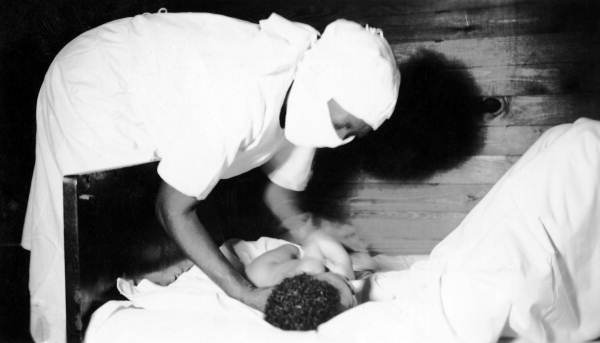 African American midwife with a newborn infant African American midwives were the primary caregivers for pregnant Black women and nursing mothers during and after slavery. By the mid-twentieth century, licenses were required for all women to become midwives. Before certification, segregation laws prevented Black women from entering hospitals that provided medical care for white people. Also, many African Americans did not trust white medical doctors because some were known to conduct medical experiments on Black people. African American midwives provided medical care for nursing and pregnant Black women in their communities by treating them with herbal medicines. Many African American midwives practiced Hoodoo. Hoodoo and midwifery practices were combined in African American communities. During childbirth, midwives spiritually protected the house because it was believed that evil spirits might harm a newborn's spirit being born into the world. Protective charms were placed inside and outside the house, and Black midwives prayed for spiritual protection for the mother and newborn baby.[209] After the baby was born, the umbilical cord, called the navel string by midwives, and the afterbirth were burned or buried. Proper handling of the umbilical cord and placenta ensured the mother would have another child. If the midwives did not properly handle these items, it was believed the woman would not have any more children.[210] |
 新生児を抱くアフリカ系アメリカ人の助産婦 奴隷制の時代、アフリカ系アメリカ人の助産婦は、妊娠中の黒人女性や授乳中の母親の主な介護者であった。20世紀半ばには、助産婦になるには免許が必要と なった。免許取得以前は、隔離法により黒人女性は白人向けの医療サービスを提供する病院への出入りが禁じられていた。また、黒人に対する医療実験を行なう 医師もいたため、多くのアフリカ系アメリカ人は白人医師を信用していなかった。アフリカ系アメリカ人の助産婦たちは、ハーブ薬を用いて、地域社会で授乳中 や妊娠中の黒人女性たちに医療ケアを提供していた。 多くのアフリカ系アメリカ人の助産婦たちはフードゥーを実践していた。フードゥーと助産術はアフリカ系アメリカ人のコミュニティで融合していた。出産 の際には、新生児の魂がこの世に誕生する際に悪霊に害を及ぼされる可能性があると考えられていたため、助産婦は家を霊的に守った。家の中と外に護符が置か れ、黒人助産婦は母親と新生児の霊的な保護を祈った。[209] 赤ちゃんが生まれると、助産婦はへその緒をへそ帯と呼び、胎盤は焼却または埋葬された。へその緒と胎盤を適切に処理することで、母親が再び子供を授かるこ とが保証されると考えられていた。助産師が適切に処理しなかった場合、その女性にはもう子供が授からないと信じられていた。[210] |
| Cosmology God Since the 19th century, Hoodoo thought has had a Christian influence. African American Christian conjurers believe their powers to heal, hex, trick, and divine come from God.[211] This is particularly evident concerning God's providence and his role in retributive justice. For example, though there are strong ideas of good versus evil, cursing someone to cause their death might not be considered a malignant act. One practitioner explained it as follows: "Een hoodoo, anyting dat oona da do is de plan ob God ondastan?, God hab sompin fa do wid ebryting oona da do weda ee good ar bad, E got sompin fa do wid um ... jes wa fa oona, oona gwine git um."[212] A translation of this is, "In hoodoo, anything that you do is the plan of God, understand? God has something to do with everything that you do whether it's good or bad, he's got something to do with it... what is for you, will come to you." Several African spiritual traditions recognized a genderless supreme being who created the world, was neither good nor evil, and did not concern itself with the affairs of humanity. Lesser spirits were invoked to gain aid for humanity's problems.[213][214] |
宇宙論 神 19世紀以降、フードゥー教はキリスト教の影響を受けている。アフリカ系アメリカ人のキリスト教信者の魔術師たちは、癒し、呪い、策略、占いの力は神か ら来ていると信じている。[211] これは特に、神の摂理と応報的正義における神の役割に関して顕著である。例えば、善対悪という強い考え方があるものの、誰かを呪って死に至らしめることは 悪意のある行為とはみなされないかもしれない。ある実践者は次のように説明している。 「フードゥーでは、人が行うことはすべて神の計画である。神は、人が行うことすべてに何かしらの意図を持っている。神は、人が行うことすべてに何かしら の意図を持っている。神は、人が行うことすべてに何かしらの意図を持っている。神は、人が行うことすべてに何かしらの意図を持っている。神は、人が行うこ とすべてに何かしらの意図を持っている。神は、人が行うことすべてに何かしらの意図を持っている。神は、人が行うことすべてに何かしらの意図を持ってい る。神は、人が行うことすべてに何かしらの意図を持っている。神は、人が行うことすべてに何かしらの意図を持っている。神は、人が行うことすべてに何かし らの意図を持っている。神は、人が行うことすべてに何かしらの意図を持っている。神は、人が行うことすべてに何かしらの意図を持っている。神は、人が行う ことすべてに何かしらの意図 神は、あなたが何をするにしても、それが善であれ悪であれ、何らかのかたちで関わっている。あなたにとって良いことは、あなたのもとにやって来るのだ」 アフリカのいくつかの精神伝統では、世界を創造した性別のない至高の存在を認めている。その存在は善でも悪でもなく、人間世界の出来事には関心を示さな い。人間の問題の解決を求めるために、より位の低い霊が呼び出されることもある。[213][214] |
God as a conjurer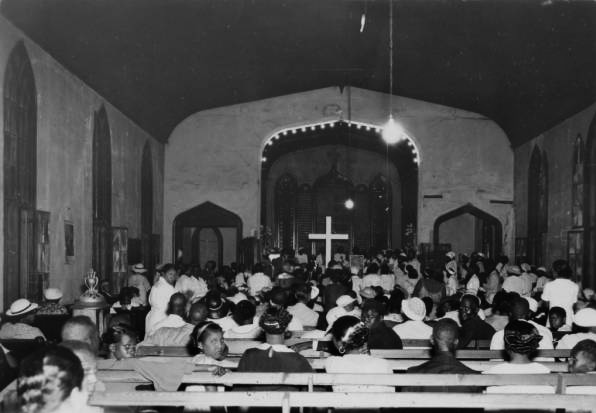 Spiritual Meeting at Father Treadwells Church NOLA. Hoodoo practitioners incorporate Christian imagery on their Hoodoo altars, and some practice Hoodoo in group church settings or are solitary practitioners. Not only is Yahweh's providence a factor in Hoodoo practice, but Hoodoo thought understands the deity as the archetypal Hoodoo doctor.[215] From this perspective, biblical figures are often recast as Hoodoo doctors, and the Bible becomes a source of spells and is used as a protective talisman.[216] This can be understood as a syncretic adaptation for the religion. By blending the ideas laid out by the Christian Bible, the faith is made more acceptable. This combines the teachings of Christianity that Africans brought to America and the traditional beliefs they brought with them. This practice in Hoodoo of combining African traditional beliefs with the Christian faith is defined as Afro-Christianity. During slavery, free and enslaved Black Hoodoo doctors identified as Christian, and some rootworkers were pastors. By identifying as Christian, African American conjurers were able to hide their Hoodoo practices in the Christian religion. The beginnings of the African American church have its roots in African traditions. When Africans were enslaved in America, they brought their religious worldviews with them that synchronized with Christianity. These African worldviews in Black churches include ancestral spirits that can be petitioned through prayer for assistance in life, spirit possession, laying on of hands to heal, ecstatic forms of worship using drums with singing and clapping, and respecting and living in harmony with nature and the spirits of nature.[217][218] For example, in Hoodoo, the divine can be commanded to act through the use of mojo bags, prayers, spiritual works or "spells" and laying tricks. One does not have to wait on God but can command the divine to act at will through Hoodoo rituals. This makes African American Christianity in Hoodoo different from other forms of Christianity. By seeing God this way, Hoodoo practices are preserved in and outside the Black church. Also, ghosts and haunts can be controlled in Hoodoo because they emanate from God. Rootworkers control spirits through Hoodoo rituals by capturing spirits using the spiritual tools used in Hoodoo. The difference between Afro-Christianity and European American Christianity is that spirits can be controlled by using the herbal ingredients in nature because herbs and nature have a spirit, and if the spirits of nature and the divine can be influenced, so can other spirits, such as ghosts.[219] The origins of Afro-Christianity began with Bantu-Kongo people in Central Africa. Before the Bakongo people came to the United States and were enslaved on plantations, the Bakongo (Bantu-Kongo) people were introduced to Christianity by European missionaries, and some converted to the Christian faith. The Bantu-Kongo people's sacred symbol is a cross called the Kongo cosmogram (+) that looks similar to the Christian Cross.[220] A form of Kongo Christianity was created in Central Africa. Bantu-Kongo people combined Kongo spiritual beliefs with the Christian faith, which included the natural spirits and spirits of dead ancestors.[221] The concepts of Kongo Christianity[222] among the Bakongo people was brought to the United States during the transatlantic slave trade and developed into Afro-Christianity among African Americans that is seen in Hoodoo and some Black churches. As a result, African American Hoodoo and Afro-Christianity developed differently and were not influenced by European American Christianity, as some African Americans continued to believe in the African concepts of nature spirits as well as cosmology attributed to Kongo religion and the Kongo cosmogram.[223] A work published in 2013 on Hoodoo lays out a model of Hoodoo origins and development. Mojo Workin: The Old African American Hoodoo System by Katrina Hazzard-Donald discusses what the author calls: the ARC or African Religion Complex, which was a collection of eight traits that all the enslaved Africans had in common and were somewhat familiar to all held in the agricultural slave labor camps known as plantation communities. These traits included naturopathic medicine, ancestor reverence, counter-clockwise sacred circle dancing, blood sacrifice, divination, supernatural source of malady, water immersion, and spirit possession. These traits allowed culturally diverse Africans to find common culturo-spiritual ground. According to the author, Hoodoo developed under the influence of that complex, with African divinities moving back into their natural forces, unlike in the Caribbean and Latin America, where the divinities moved into Catholic saints.[224] |
まじない師(conjurers)のような神 ニューオーリンズのトレッドウェル神父の教会でのスピリチュアルな集会。フードゥーの実践者は、フードゥーの祭壇にキリスト教のイメージを取り入れ、集団 で教会に通うか、あるいは孤独な実践者となる。 フードゥーの実践にはヤハウェの摂理が影響しているだけでなく、フードゥーの思想では神は原型的なフードゥーの医師であると理解されている。 [215] この観点から、聖書の登場人物はしばしばフードゥーの医師として描き直され、聖書は呪文の源となり、護符として用いられる。[216] これは、宗教のシンクレティックな適応として理解することができる。キリスト教の聖書が示す考え方を融合させることで、信仰はより受け入れられやすくな る。これは、アフリカ人がアメリカに持ち込んだキリスト教の教えと、彼らが持ち込んだ伝統的信仰とを組み合わせたものである。アフリカの伝統的信仰とキリ スト教信仰とを組み合わせるフードゥーのこの慣習は、アフロ・キリスト教(Afro-Christianity)と定義されている。奴隷制時代には、自 由身分の黒人フードゥー教の医師や奴隷の黒人フードゥー教の医師がキリスト教徒と名乗り、ルーツワーカーの中には牧師もいた。キリスト教徒と名乗るこ とで、アフリカ系アメリカ人の占い師たちは、キリスト教の信仰の中にフードゥー教の慣習を隠すことができたのである。アフリカ系アメリカ人の教会の始ま りは、アフリカの伝統にそのルーツがある。アフリカ人がアメリカで奴隷として働かされていた時代、彼らはキリスト教と調和する彼らの宗教的世界観を携えて いた。黒人教会におけるアフリカ的世界観には、人生における支援を祈願する先祖の霊、霊の憑依、手をおいての癒し、歌と手拍子を伴うドラムを使った熱狂的 な礼拝、そして自然と自然の精霊を尊重し、調和して生きることなどが含まれる 。例えば、フードゥー教では、モジョバッグ、祈り、霊的な儀式、または「呪文」や「まじない」の使用を通じて、神に働きかけを命じることができる。神を 待つ必要はなく、フードゥーの儀式を通じて神に意のままに行動するよう命じることができる。これが、フードゥーにおけるアフリカ系アメリカ人のキリス ト教を、他のキリスト教の形と異なるものにしている。このように神を捉えることで、フードゥーの慣習はブラック・チャーチ(黒人教会)の内外で守られて いる。また、幽霊や心霊現象は神から発せられるものであるため、フードゥーではそれらを制御することができる。ルーツワーカーは、フードゥーの儀式で 使用される霊的な道具を使って霊を捕獲することで、フードゥーの儀式を通じて霊を制御する。 アフリカ系キリスト教とヨーロッパ系キリスト教の違いは、自然界のハーブや自然物にも霊が宿ると考えられているため、自然界のハーブや自然物を使用するこ とで霊を制御できることである。また、自然界の霊や神聖な霊に影響を与えることができれば、幽霊などの他の霊にも影響を与えることができると考えられてい る。 アフリカ系キリスト教の起源は、中央アフリカのバントゥー・コンゴ族に始まる。バコンゴ族が米国に渡り、プランテーションで奴隷として働かされるようにな る前、バコンゴ族(バントゥー・コンゴ族)はヨーロッパの宣教師によってキリスト教に触れ、一部はキリスト教に改宗した。バントゥー・コンゴ族の神聖なシ ンボルは、キリスト教の十字架に似たコンゴ・コスモグラム(+)と呼ばれる十字架である。コンゴ・キリスト教の一形態が中央アフリカで生まれた。バン ツー・コンゴ族の人々は、コンゴの精神信仰とキリスト教を融合させ、自然の精霊や死者の霊魂を信仰の対象とした。[221] バコンゴ族の間で信仰されていたコンゴ・キリスト教の概念[222] は、大西洋奴隷貿易の時代にアメリカに持ち込まれ、アフリカ系アメリカ人の間でアフリカ系キリスト教へと発展した。このアフリカ系キリスト教は、フー ドゥー教や一部の黒人教会に見られる。その結果、アフリカ系アメリカ人のフードゥー教とアフロ・キリスト教は異なる形で発展し、ヨーロッパ系アメリカ人 のキリスト教の影響を受けなかった。一部のアフリカ系アメリカ人は、コンゴ宗教やコンゴ宇宙図に帰属する自然霊や宇宙論といったアフリカの概念を信じ続け ているからである。 2013年に発表されたフードゥーに関する研究では、フードゥーの起源と発展のモデルが提示されている。『モジョ・ワーキン:オールド・アフリカン・ アメリカン・フードゥー・システム』(Mojo Workin: The Old African American Hoodoo System)の著者、キャサリン・ハザード・ドナルドは、 ARC(アフリカ宗教複合体)と呼ばれる、奴隷としてアフリカから連れてこられた人々が共通して持っていた8つの特徴の集合体について論じている。これら の特徴には、自然療法、先祖崇拝、反時計回りの神聖な円を描いて踊る、血を流す生け贄、占い、病気の超自然的源、水に浸す、霊魂の憑依などが含まれる。こ れらの特徴により、文化的に多様なアフリカ人が共通の文化的精神的基盤を見出すことができた。著者は、フードゥー教は、カリブ海地域やラテンアメリカで は神々がカトリックの聖人へと変化したのとは異なり、アフリカの神々が自然の力へと回帰した影響を受けて発展したと述べている。[224] |
| Moses as a conjurer A seal from the Sixth and Seventh Books of Moses Zora Neale Hurston developed this idea in her novel Moses, Man of the Mountain, in which she calls Moses "the finest Hoodoo man in the world".[225] Obvious parallels between Moses and intentional paranormal influence (such as magic) occur in the biblical accounts of his confrontation with Pharaoh. Moses conjures or performs magic "miracles", such as turning his staff into a snake. However, his greatest feat of conjure was using his powers to help free the Hebrews from slavery. This emphasis on Moses-as-conjurer introduced the pseudonymous work the Sixth and Seventh Books of Moses into the corpus of Hoodoo reference literature.[226] In the twentieth century, The Sixth and Seventh Books of Moses was cheaply printed and sold in spiritual shops near Black neighborhoods and purchased by African Americans.[227] It was a grimoire that was made popular by European immigrants. Purportedly based on Jewish Kabbalah, it contains numerous signs, seals, and passages in Hebrew related to the prophet Moses' ability to work wonders. Though its authorship is attributed to Moses, the oldest manuscript dates to the mid-19th century.[228][229] White Americans marketed hoodoo to African Americans for profit, which was not planned to maintain the African traditions in hoodoo. The incorporation of European grimoires ("books of spells") into hoodoo began in the twentieth century during the Great Migration as African Americans left the South to live and work in Northern cities living near European immigrants. Nevertheless, the Sixth and Seventh Books of Moses has become a part of modern Hoodoo because African Americans connected with the story of Moses freeing the Hebrews from slavery in Egypt and his use of magical powers against the Egyptians. Also, African Americans practiced Hoodoo centuries before the introduction of European grimoires. Hoodoo developed on slave plantations in the United States and enslaved, and free Black Americans used conjure as a form of resistance against slavery.[230][231] |
まじない師(conjurers)としてのモーゼス モーゼスの第6巻と第7巻の封印 ゾラ・ニール・ハーストンは、小説『山男モーゼス』でこの考えを発展させ、モーゼスを「世界最高のフードゥー教の男」と呼んでいる。[225] モーゼスと意図的な超常現象(呪術など)との明白な類似点は、聖書に記された彼とファラオの対決の場面で生じている。モーセは杖を蛇に変えるなど、呪術的 「奇跡」を行使したり、演じたりした。しかし、彼が呪術の力で成し遂げた最大の功績は、その力を使ってヘブライ人を奴隷状態から解放したことである。この モーセの呪術師としての強調は、偽名で書かれた『モーセの第6の書と第7の書』をフードゥーの参考文献の体系に導入した。 20世紀には、『モーセの第六と第七の書』は黒人居住区近くのスピリチュアルショップで安価に印刷・販売され、アフリカ系アメリカ人によって購入されてい た。[227] ヨーロッパからの移民によって広められた魔術書である。ユダヤ教のカバラを基にしているとされるこの魔術書には、預言者モーセの奇跡を起こす能力に関連す る多数の印、印章、ヘブライ語の文章が含まれている。著者はモーゼとされているが、最古の写本は19世紀半ばのものである。[228][229] 白人のアメリカ人は、アフリカ系アメリカ人に対して利益を得るためにフードゥーを売り込んだが、フードゥーにおけるアフリカの伝統を維持するつもりは なかった。ヨーロッパの魔術書(「呪文の書」)がフードゥーに取り入れられたのは、アフリカ系アメリカ人が南部を離れ、北部の都市でヨーロッパ系移民の 近くに住み、働くようになった大移動の時代である20世紀に入ってからである。 しかし、モーセの六番目と七番目の書が現代のフードゥーの一部となったのは、アフリカ系アメリカ人が、エジプトでの奴隷生活からヘブライ人を解放した モーセの物語や、彼がエジプト人に対して呪術的力を用いたことに共感したからである。また、アフリカ系アメリカ人は、ヨーロッパの魔術書が持ち込まれる何 世紀も前からフードゥーを実践していた。フードゥーは、米国の奴隷農園で発展し、奴隷として働かされていた黒人や自由の身となった黒人が、奴隷制度に 対する抵抗の手段として魔術を用いた。[230][231] |
| Bible as a talisman and tool for
revolution The Christian Holy Bible In Hoodoo, "All hold that the Bible is the greatest conjure book in the world."[232] It has many functions for the practitioner, not the least of which is a source of spells. This is particularly evident given the importance of the book Secrets of the Psalms in hoodoo culture.[233] This book provides instructions for using Psalms for safe travel, headaches, and marital relations. The Bible, however, is not just a source of spiritual works but a conjuring talisman. It can be taken "to the crossroads", carried for protection, or even left open at specific pages while facing specific directions. This informant provides an example of both uses: Whenevah ah'm afraid of someone doin' me harm ah read the 37 Psalms an' co'se ah leaves the Bible open with the head of it turned to the east as many as three days.[234] The Bible was used in slave religion as a magical formula that provided information on how to use herbs in conjure and how to use the Bible to conjure specific results and spirits to bring about change in people's lives, which is a continued practice today. Rootworkers remove curses by reading scriptures from the Bible. At the same time that root workers can remove a curse using the Bible, they can also place curses on people with the Bible.[235] Jacob Stroyer explained in his autobiographical slave narrative that enslaved people in South Carolina used a Bible to protect from a boo hag by praying "In the name of Father, Son, and Holy Ghost what you want," to the "witch," and after the prayer, placed the Bible in the corner of the slave cabin to protect from a boo hag, believing that by placing a Bible in the corner, the boo hag would not return.[236] Enslaved and free Black people also used the Bible as a tool against slavery. Free and enslaved people who could read found the stories of the Hebrews in the Bible in Egypt, similar to their situation in the United States as enslaved people. The Hebrews in the Old Testament were freed from slavery in Egypt under the leadership of Moses. Examples of enslaved and free Black people using the Bible as a tool for liberation were Denmark Vesey's slave revolt in South Carolina in 1822 and Nat Turner's Rebellion in Virginia in 1831. Vesey and Turner were ministers and utilized the Christian faith to galvanize enslaved people to resist slavery through armed resistance. In Denmark Vesey's slave revolt, Vesey's co-conspirator was an enslaved Gullah conjurer named Gullah Jack who gave the enslaved people rootwork instructions for their spiritual protection for a possible slave revolt. |
聖書は護符であり、革命の道具である キリスト教の聖書 フードゥー教では、「聖書は世界で最も偉大な魔術書であると誰もが信じている」[232]。 聖書には魔術師にとって多くの機能があるが、そのうちの最も重要なものは呪文の源泉である。これは、フードゥー文化における『詩篇の秘密』の重要性から 特に明らかである。[233] この本は、安全な旅、頭痛、夫婦関係のために詩篇を使用するための指示を提供している。しかし、聖書は単に精神的な作業の源ではなく、魔術的なお守りでも ある。「十字路に」持っていったり、保護のために持ち歩いたり、特定の方向に向かって特定のページを開いたままにしておくことさえできる。この情報提供者 は、両方の使用例を挙げている。 誰かが自分に危害を加えるのではないかと恐れるときはいつでも、私は詩篇第37篇を読む。そしてもちろん、聖書のページを開いたまま、最初のページのペー ジ先頭を東に向け、3日間そのままにする。[234] 聖書は、呪術においてハーブの使用方法や、聖書を用いて特定の結果や霊魂を呼び出し、人々の生活に変化をもたらす方法についての情報を提供する呪術的定式 として用いられた。これは今日でも続けられている。ルートワーカーは聖書の聖句を読み上げることで呪いを解く。ルートワーカーは聖書を用いて呪いを解くこ とができると同時に、聖書を用いて人々に呪いをかけることもできる。 ジェイコブ・ストロイヤーは、自伝的奴隷物語の中で、サウスカロライナ州の奴隷たちは「父と子と聖霊の名において、汝の望むものを」と「呪術師」に祈り、 その祈りの後、呪術から身を守るために聖書を奴隷小屋の隅に置いたと説明している。聖書を隅に置くことで、呪術師は戻ってこないだろうと信じていたのだ。 奴隷として、あるいは自由民として、黒人たちは聖書を奴隷制度に対抗する手段としても用いた。読み書きのできる自由民や奴隷たちは、聖書に登場するヘブラ イ人のエジプトでの物語が、奴隷として米国で暮らす自分たちの状況と似ていることに気づいた。旧約聖書に登場するヘブライ人は、モーゼの指導の下、エジプ トでの奴隷生活から解放された。奴隷として、あるいは自由民として聖書を用いて解放の手段とした例としては、1822年のサウスカロライナにおけるデン マーク・ベイシーの奴隷反乱や、1831年のバージニアにおけるナット・ターナーの反乱がある。ベイシーとターナーは牧師であり、キリスト教信仰を利用し て奴隷たちを奮い立たせ、武装抵抗によって奴隷制度に抵抗した。デンマークのベッシーの奴隷反乱では、ベッシーの共謀者は奴隷のガーラ族の魔術師、ガー ラ・ジャックであった。ガーラ・ジャックは、奴隷たちに精神的な保護のための儀式を教え、奴隷反乱の可能性に備えさせた。 |
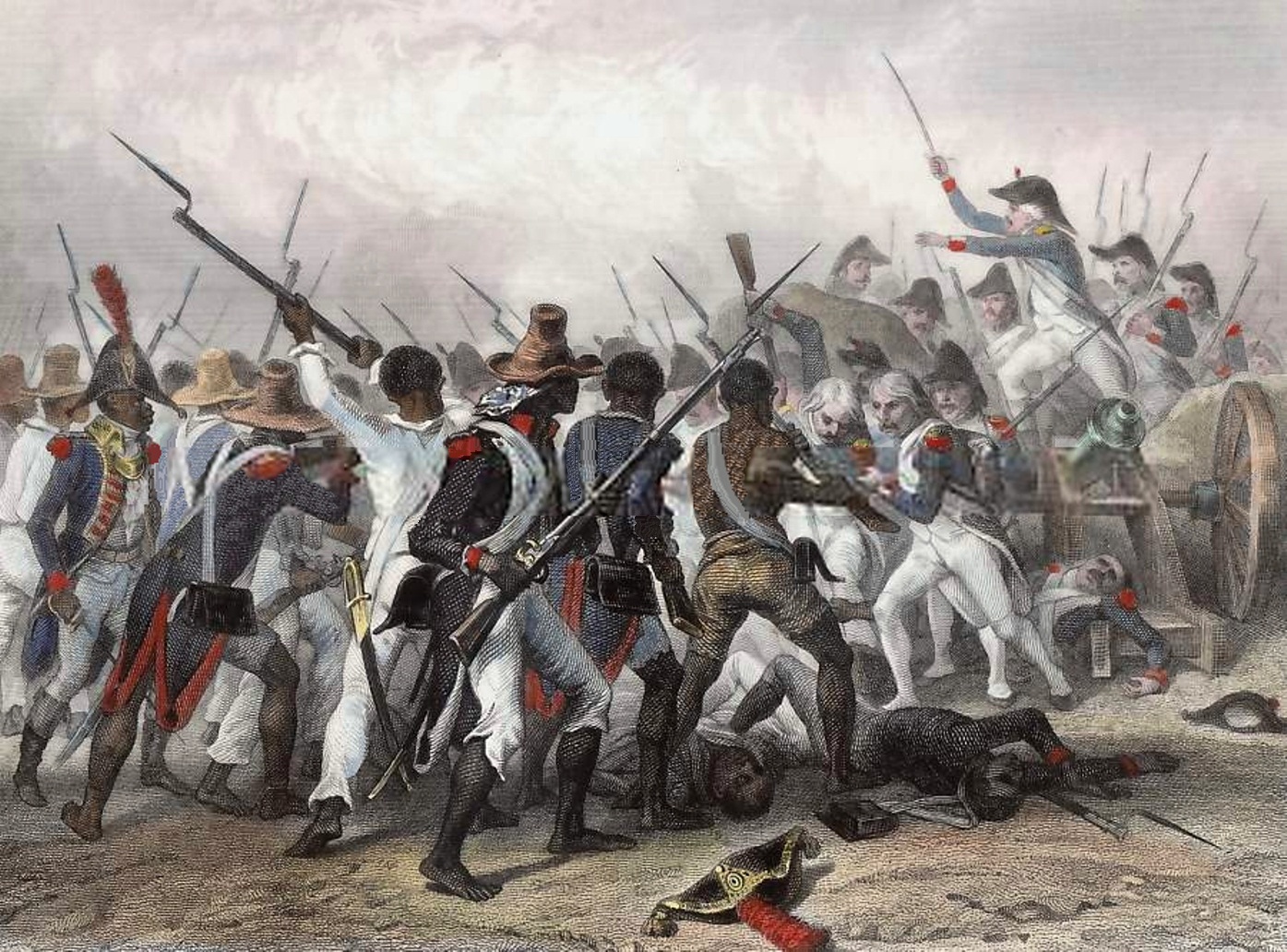 Enslaved and free conjurers were leaders of slave revolts in the African Diaspora. Gullah Jack, who was born in Angola, maintained his Central African spiritual practices. Gullah Jack was known to carry a mojo bag with him at all times for his spiritual protection. For the enslaved people's spiritual protection, Gullah Jack gave them rootwork instructions for a possible slave revolt planned by his co-conspirator Denmark Vesey. Gullah Jack instructed the enslaved to eat a peanut butter-like mash, eat parched cornmeal, and carry crab claws for their protection. The plan was to free those enslaved through armed resistance and conjure. Denmark Vesey and Gullah Jack were unsuccessful because their plan was revealed and stopped.[237][238] From other historical research and records, Gullah Jack performed a ceremony and made the enslaved eat a half-cooked fowl. One enslaved person said he could not talk about the conspiracy as Jack bound his speech with conjure. According to records, Jack "charmed" enslaved men to join the revolt.[239] Gullah Jack used the spiritual knowledge he had from Angola and made protective charms for other slaves for their spiritual protection.[240][241][242] However, Nat Turner was known among the enslaved people to have dreams and visions that came true. In the Hoodoo tradition, dreams and visions come from spirits, such as the ancestors or the Holy Spirit in the Christian faith. Relying on dreams and visions for inspiration and knowledge is an African practice blended with the Christian faith among enslaved and free African Americans. After Nat Turner's Rebellion, laws were passed in Virginia to end the education of free and enslaved Black people and only allow white ministers to be present at all church services for enslaved people. White ministers preached obedience to slavery, while enslaved and free Black ministers preached resistance to slavery using the stories of the Hebrews and Moses in the Old Testament of the Bible. There was a blend of African spiritual practices in both slave revolts of Vesey and Turner.[243] Nat Turner's mother came on a slave ship from Africa. Research has not determined what part of Africa she was from. She had a profound spiritual influence on his life. She taught him about African spirituality, a fact evident in his life as he used visions and celestial interpretation of planetary bodies to understand messages from spirit. Turner believed the eclipse of the sun was a message from God to start a slave rebellion. Academic research from Virginia records on the Nat Turner slave revolt suggests that an occult religious ritual was performed to anoint Turner's raid.[244] |
 奴隷となったマジシャンや自由の身となったマジシャンは、アフリカ系ディアスポラにおける奴隷反乱の指導者であった。 アンゴラ生まれのガラ・ジャックは、中央アフリカのスピリチュアルな慣習を守り続けた。ガラ・ジャックは、常に魔除けの袋を持ち歩き、精神的な保護を求め ていたことで知られている。奴隷の人々の精神的な保護のため、ガラ・ジャックは共謀者デンマーク・ベイシーが計画した可能性のある奴隷反乱に備え、ルート ワークの方法を教えた。ガラ・ジャックは、奴隷たちにピーナッツバターのようなペースト状のものを食べさせ、干しトウモロコシを食し、カニの爪を持ち歩く ようにと指示した。武装抵抗と呪術によって奴隷たちを解放するという計画であった。デンマーク・ヴィージーとガラジャックの計画は、計画が露見し阻止され たため、失敗に終わった。[237][238] その他の歴史研究や記録によると、ガラジャックは儀式を行い、半調理の家禽を奴隷たちに食べさせた。ある奴隷は、ジャックが呪術で自分の口を封じたため、 陰謀について話すことはできないと述べた。記録によると、ジャックは奴隷の男性たちを「魅了」して反乱に参加させたという。[239] ガラジャックはアンゴラで学んだスピリチュアルな知識を活用し、他の奴隷たちの精神的な保護のために護符を作った。[240][241][242] しかし、奴隷たちの間では、ナット・ターナーは夢やビジョンが現実になることで知られていた。フードゥー教の伝統では、夢やビジョンは先祖やキリスト教 の聖霊といった霊魂から来るものとされている。夢やビジョンからインスピレーションや知識を得ることは、奴隷や自由なアフリカ系アメリカ人の間でキリスト 教と融合したアフリカの慣習である。ナット・ターナーの反乱の後、バージニア州では自由な黒人と奴隷の黒人の教育を廃止し、奴隷の黒人のための教会の礼拝 には白人の牧師のみが出席することを認める法律が可決された。白人の牧師たちは奴隷制への服従を説き、一方、奴隷および自由の身の黒人牧師たちは、聖書の 旧約聖書に登場するヘブライ人とモーゼの物語を用いて、奴隷制への抵抗を説いた。 ベッシーとターナーの2人の奴隷による反乱には、アフリカの精神的な慣習が混在していた。 ナット・ターナーの母親はアフリカから奴隷船でやって来た。 彼女がアフリカのどの地域出身であったのかは、研究では特定されていない。 彼女はターナーの人生に多大な精神的な影響を与えた。彼女は彼にアフリカの精神性について教え、そのことは彼の人生にも明白に表れている。彼は霊からの メッセージを理解するために、ビジョンや惑星の天体解釈を用いていた。ターナーは日食が奴隷反乱を起こすよう神がメッセージを送っているのだと信じてい た。バージニア州のナット・ターナーの奴隷反乱に関する学術研究記録によると、ターナーの反乱を神聖化するためのオカルト宗教儀式が行われたことが示唆さ れている。[244] |
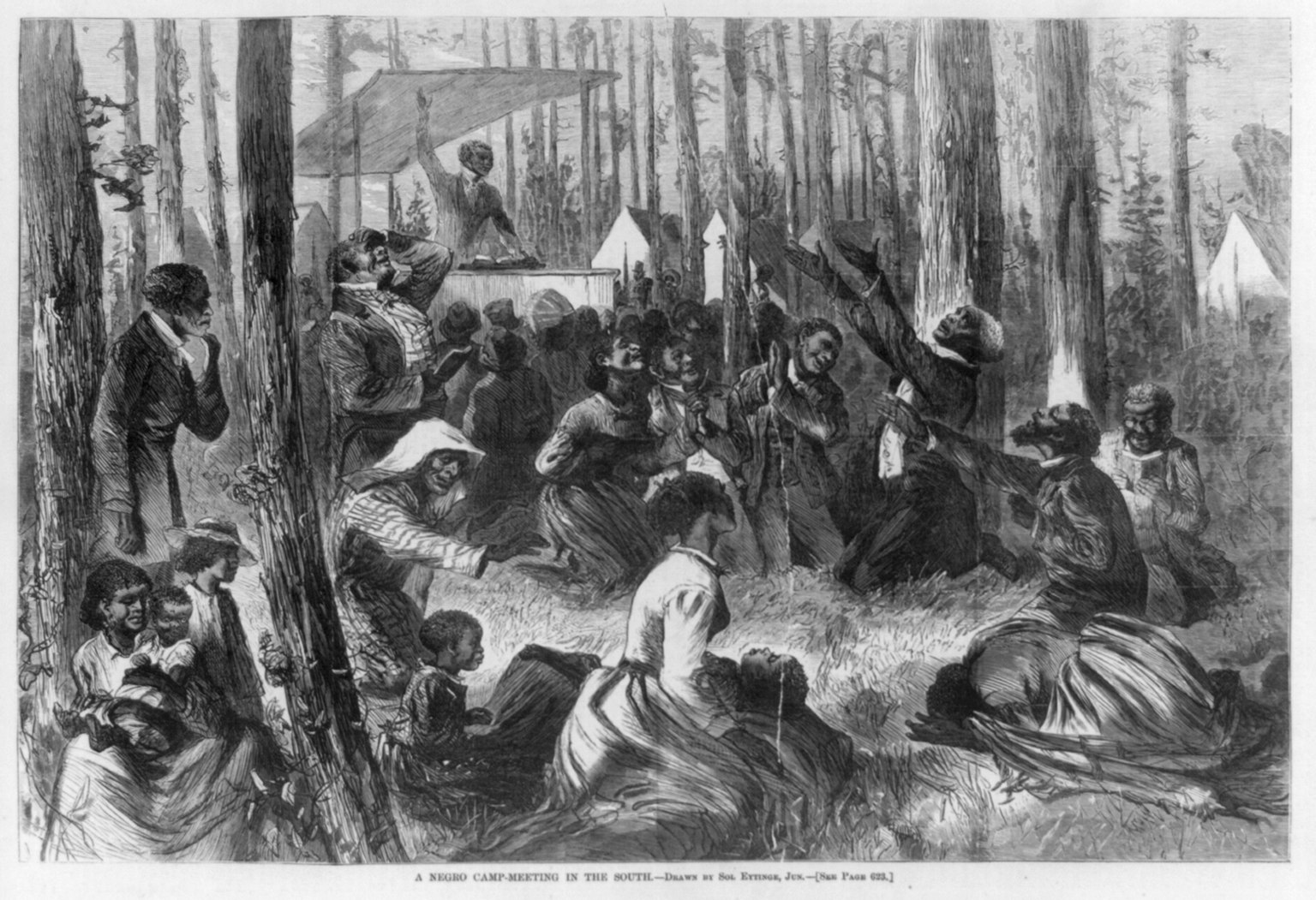 Enslaved and free people held secret Hoodoo and church meetings in hush harbors. These practices among the enslaved population created a Hoodoo Christian Church or "Hoodoonized" version of Christianity on slave plantations, where enslaved Africans covertly went into the woods at night to practice their religion, a blend of African spirituality with Christianity. Hoodoo countered European American Christianity as enslaved African Americans reinterpreted Christianity to fit their situation in America as enslaved people. For example, God was seen as powerful, and his power could help free slaves. This created an "invisible institution" on slave plantations as enslaved Africans practiced the ring shout, spirit possession, and healing rituals to receive messages from the spirit about freedom. These practices were done in secret, away from enslavers. This was done in the Hoodoo church among the enslaved. Nat Turner had visions and omens, which he interpreted as coming from the spirit, and that spirit told him to start a rebellion to free enslaved people through armed resistance. Turner combined African spirituality with Christianity.[245][246] |
 奴隷と自由民は、人目につかない入り江で秘密裏にフードゥー教の集会や教会の集会を開いていた。 奴隷人口の間でこうした慣習が生まれた結果、奴隷農園にはフードゥー教キリスト教会、あるいは「フードゥー化」されたキリスト教が生まれた。そこで は、アフリカ系奴隷たちが夜中にこっそりと森に入り、アフリカの精神性とキリスト教を融合させた宗教を実践していた。フードゥーは、奴隷としてアメリカ に連れて来られたアフリカ系アメリカ人が、奴隷としての境遇に適応するようにキリスト教を再解釈したもので、ヨーロッパ系アメリカ人のキリスト教に対抗す るものだった。例えば、神は強力な存在であり、その力は奴隷を解放する手助けとなる、と考えられていた。これにより、奴隷農園には「目に見えない制度」が 生まれ、奴隷として連れて来られたアフリカ人が、自由に関する霊からのメッセージを受け取るために、リング・シャウト(掛け声)、霊の憑依、癒しの儀式を 行った。これらの慣習は、奴隷所有者から隠れて秘密裏に行われた。これは、奴隷の間でフードゥー教会で行われた。ナット・ターナーは、霊からのメッセー ジであると解釈したビジョンや前兆を受け取り、その霊から、武装抵抗によって奴隷の人々を解放するための反乱を起こすよう告げられた。ターナーは、アフリ カの霊性とキリスト教を融合させた。[245][246] |
Conjuring the spirit of High John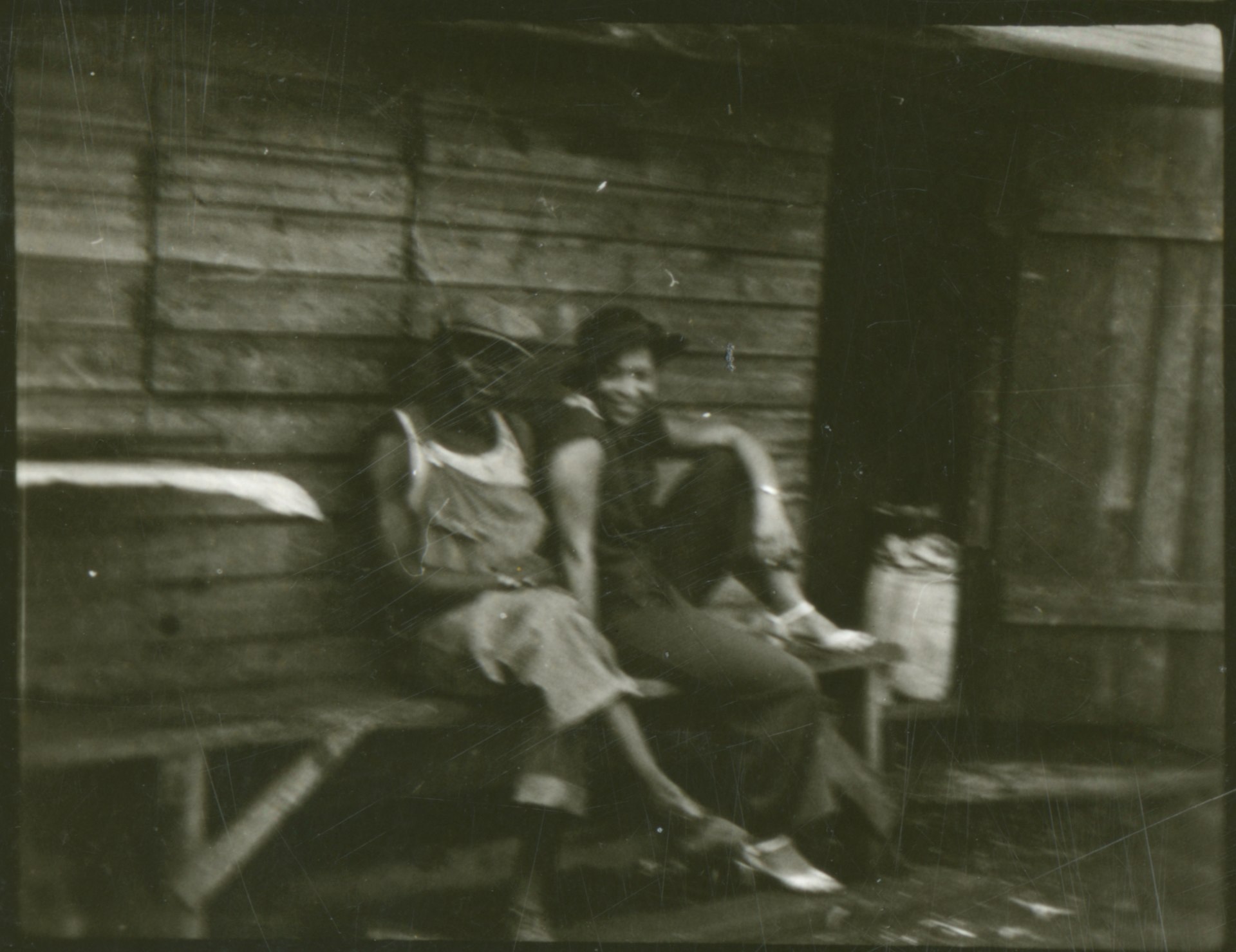 Zora Neale Hurston documented stories about High John the Conqueror from African Americans in the Southern United States. Mojo Workin': The Old African American Hoodoo System also discusses the "High John the Conqueror root"[247] and myth as well as the "nature sack."[248] In African American folk stories, High John the Conqueror was an African prince who was kidnapped from Africa and enslaved in the United States. He was a trickster and used his wit and charm to deceive and outsmart his enslavers. After the American Civil War, before High John the Conqueror returned to Africa, he told the newly freed slaves that if they ever needed his spirit for freedom, it would reside in a root they could use. According to some scholars, the origin of High John the Conqueror may have originated from African male deities such as Elegua, who is a trickster spirit in West Africa. By the twentieth century, white drugstore owners began selling High John the Conqueror products with the image of a white King on their labels, commercializing hoodoo. Zora Neale Hurston documented some history about High John the Conqueror from her discussions with African Americans in the South in her book, The Sanctified Church. Some African Americans believed High John the Conqueror freed the enslaved people and that the President Abraham Lincoln and the Civil War did not bring freedom for Black people. According to one woman interviewed by Hurston, Aunt Shady Anne Sutton, "These young Negroes reads they books and talk about the war freeing the Negroes, by Aye Lord! A heap sees, but a few knows. 'Course, the war was a lot of help, but how come the war took place? They think they knows, but they don't. John de Conqueror put it into the white folks to give us our freedom." Anne Sutton said High John de Conqueror taught Black people about freedom and to prepare for their freedom in an upcoming war. The High John the Conqueror root was used to prevent whippings from enslavers and to win freedom from chattel slavery. The root was given to Frederick Douglass to prevent him from being whipped and beaten by a slave-breaker. Formerly enslaved person Henry Bibb used the High John root to protect himself by chewing and spitting the root towards his enslaver.[249][250][251] |
ハイ・ジョンの精神を呼び起こす ゾラ・ニール・ハーストンは、アメリカ南部の黒人からハイ・ ジョン・ザ・コンケラーについての話を記録した。 『Mojo Workin': The Old African American Hoodoo System』では、「ハイ・ジョン征服王の根」[247]や神話、「ネイチャー・サック」[248]についても論じている。アフリカ系アメリカ人の民話 では、ハイ・ジョン征服王はアフリカから誘拐され、米国で奴隷として働かされたアフリカの王子である。彼はトリックスターであり、機転と魅力を駆使して、 自分を奴隷として働かせる者を欺き、出し抜いた。南北戦争後、ハイ・ジョンがアフリカに戻る前に、彼は新たに解放された奴隷たちに、もし自由の精神が必要 になったら、その精神は自分たちの使える根っこに宿っていると語った。一部の学者によると、ハイ・ジョンの起源は、西アフリカのトリックスピリットである エレグアのようなアフリカの男性神から来ている可能性がある。20世紀になると、白人のドラッグストアのオーナーが、白人の王の肖像をラベルに印刷したハ イ・ジョン・ザ・コンケラー製品を販売し、フードゥーを商業化した。ゾラ・ニール・ハーストンは、南部の黒人との対話から得たハイ・ジョン・ザ・コンケ ラーに関するいくつかの歴史を、著書『聖別された教会』に記録している。一部のアフリカ系アメリカ人は、ハイ・ジョン・ザ・コンケラーが奴隷たちを解放し たと信じており、リンカーン大統領や南北戦争は黒人たちに自由をもたらさなかったと考えていた。ハーストンがインタビューしたある女性、シャディ・アン・ サットンおばさんは、「この若いニグロたちは本を読んで、ニグロたちを解放した戦争について話している。多くの人は知っているが、一部の人は知らない。も ちろん、戦争は大いに役立ったが、戦争が起こったのはなぜなのか?彼らは知っているつもりだが、本当は知らない。ジョン・デ・コンケラーが白人の人々に、 私たちに自由を与えるよう仕向けたのだ」とアン・サットンは言った。アン・サットンは、偉大なる征服者ジョン・デ・コンケラーが黒人たちに自由について教 え、迫り来る戦争で自由を手に入れる準備をさせたのだと言った。ハイ・ジョン・ザ・コンケラーの根は、奴隷所有者による鞭打ちを防ぎ、奴隷制からの自由を 勝ち取るために用いられた。この根はフレデリック・ダグラスに与えられ、奴隷調教師による鞭打ちや暴行から身を守るために用いられた。かつて奴隷であった ヘンリー・ビブは、ハイ・ジョンの根を噛んで、それを奴隷所有者に向かって吐きかけることで身を守った。[249][250][251] |
| Spirits See also: Boo Hag 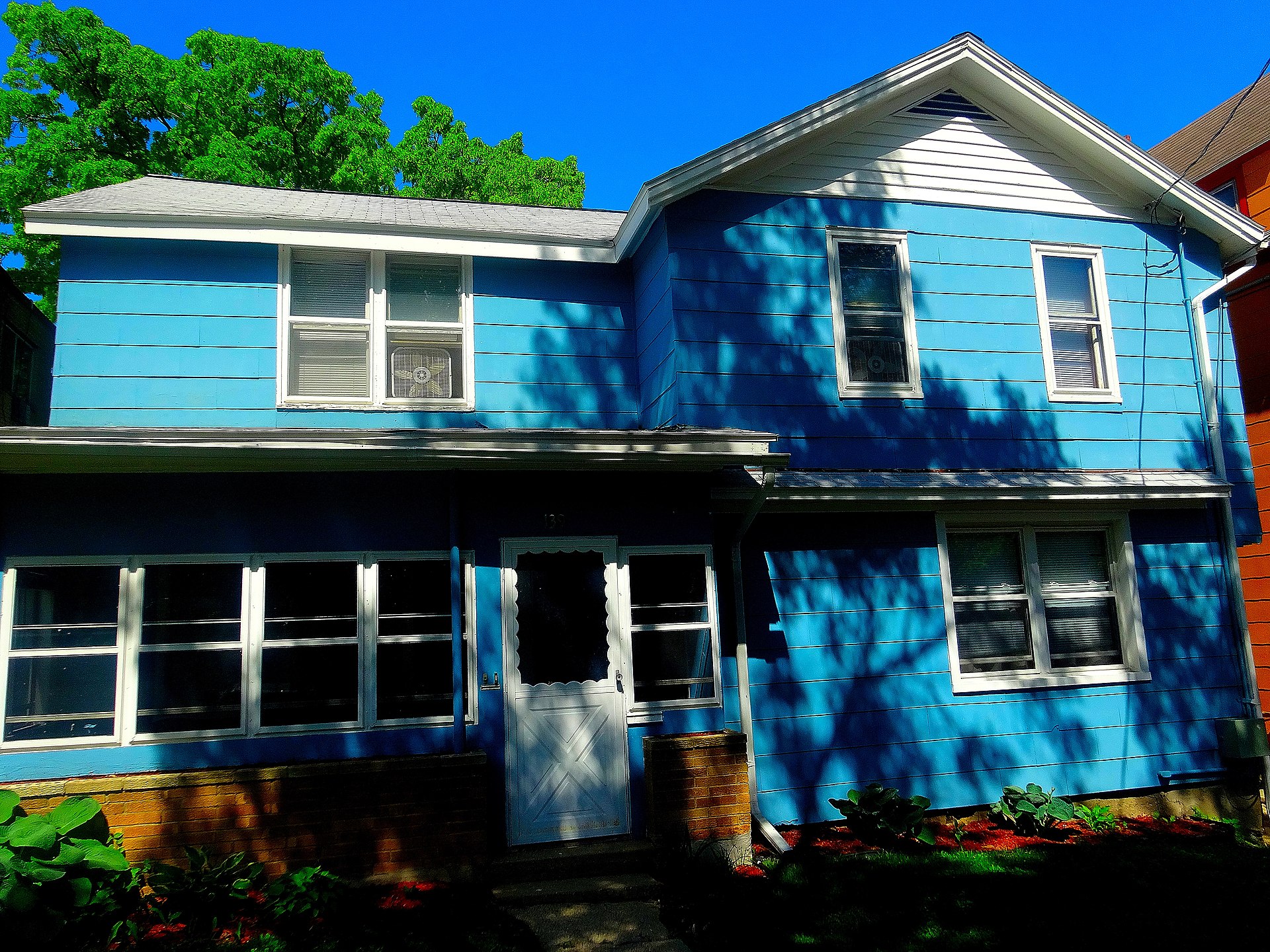 Gullah Geechee people in the Sea Islands paint their houses blue to ward off evil spirits.[252] A spirit that torments the living is known as a Boo Hag.[253] Spirits are conjured to cure or kill people, and to predict the future.[254] Spirits can also help people find things. One slave narrative from South Carolina mentioned a pastor who spoke to spirits to help him find some hidden money. This record from a slave narrative revealed how Hoodoo and the Black church were intertwined.[255] Another slave narrative from Indiana mentioned a location that the African American population refused to enter because "it was haunted by the spirits of Black people who were beaten to death." This location was so feared by the Black people in the area that they placed a fence around it.[256] Wearing a silver dime around the ankle or neck can protect someone from evil spirits and conjure.[257] Another method to protect from evil spirits was to carry a small bag filled with salt and charcoal.[258] In Indiana, African Americans sprinkled chamber lye on the front and back steps to prevent evil spirits from entering the home. Curses can come from malevolent spirits not conjured by a conjurer, and evil spirits are more active at night.[259] Another spirit feared in Gullah culture is the plat eye. The plat eye is a one-eyed ghost that can morph into various forms. It is conjured when a person buries the head of a murdered man inside a hole with treasure.[260] Communication with spirits and the dead (ancestors) is a continued practice in Hoodoo that originated in West and Central Africa. Nature spirits called Simbi ("Simbi" singular, and "Bisimbi" plural), believed in by the Kongo people, are associated with water and magic in Central Africa and in Hoodoo.[261] This belief in water spirits was brought to the United States during the transatlantic slave trade and continues in the African American community in the practice of Hoodoo and Voodoo. The Bisimbi reside in gullies, streams, freshwater, and outdoor water features (fountains).[262] Academic research on the Pooshee Plantation and Woodboo Plantation in South Carolina showed a continuing belief in water spirits among enslaved African Americans. Both plantations have been submerged under the waters of Lake Moultrie.[263] |
精霊 関連項目:ブー・ハグ  シー・アイランドに住むガラ族の人々は、悪霊を追い払うために家を青く塗る。 [252] 生者を苦しめる精霊はブー・ハグと呼ばれる。[253] 精霊は、人を癒したり殺したり、未来を予言するために呼び出される。[254] また、精霊は人々が見失った物を見つける手助けもする。サウスカロライナ州の奴隷の証言では、隠されたお金を見つけるために霊と話した牧師について言及し ている。この奴隷の証言の記録は、フードゥー教と黒人教会がどのように絡み合っているかを明らかにしている。[255] インディアナ州の別の奴隷の証言では、「殴り殺された黒人たちの霊が取り憑いている」という理由で、アフリカ系アメリカ人たちが立ち入らない場所について 言及している。この場所は、その地域の黒人たちに非常に恐れられており、周囲にフェンスが設けられていた。[256] 銀の10セント硬貨を足首や首に身につけると、悪霊や魔術から身を守ることができる。[257] 悪霊から身を守るもう一つの方法は、塩と炭を入れた小さな袋を持ち歩くことだった。[258] インディアナ州では、アフリカ系アメリカ人は、悪霊が家に入らないように、家の前後の階段に洗濯用アルカリ液を撒いていた。呪いは、手品師が呼び出さない 悪意ある霊から来ることもあり、悪霊は夜に活発になる。[259] ガラ文化で恐れられているもう一つの霊は「プラット・アイ」である。プラット・アイは、さまざまな姿に変身できる一つ目の幽霊である。殺された男の頭部を 宝物の入った穴に埋めると、プラット・アイが呼び出される。[260] 霊や死者(先祖)との交信は、西アフリカと中央アフリカで生まれたフードゥー教の継続的な慣習である。コンゴ族が信奉する自然霊シンビ(単数形は「シン ビ」、複数形は「ビスンビ」)は、中央アフリカおよびフードゥー教において、水と呪術に関連付けられている。[261] この水の精霊に対する信仰は、大西洋奴隷貿易の時代にアメリカにもたらされ、アフリカ系アメリカ人社会ではフードゥー教やヴードゥー教の実践として今も 続いている。ビスンビは、渓谷、小川、淡水、屋外の水場(噴水)に棲むとされる。[262] サウスカロライナ州のプーシー農園とウッドブー農園に関する学術研究では、奴隷として扱われていたアフリカ系アメリカ人たちの間では水の精霊に対する信仰 が続いていることが示された。両農園は、いずれもムーア湖の水没区域に含まれている。[263] |
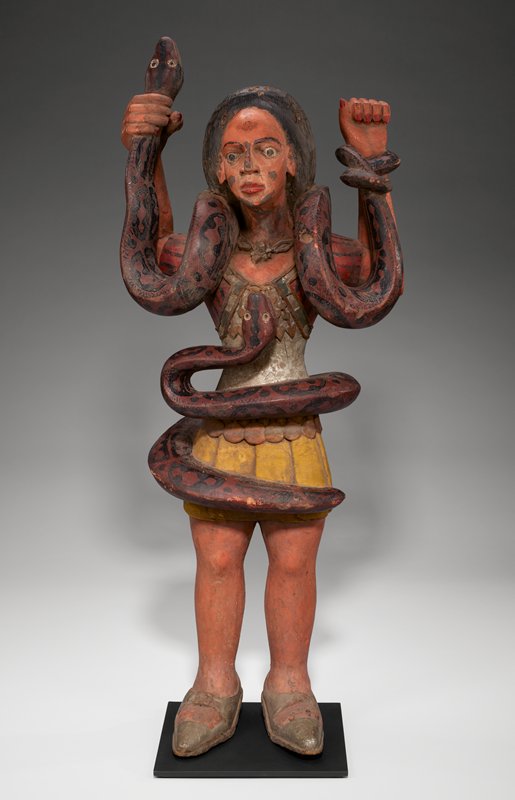 West African water spirit MIA The earliest known reference to Simbi spirits in the United States was recorded in the nineteenth century by Edmund Ruffin, a wealthy enslaver from Virginia who traveled to South Carolina "to keep the slave economic system viable through agricultural reform". In Ruffin's records, he spelled Simbi as "Cymbee" because he did not know the word's original spelling. In Ruffin's records, he recorded a few conversations he had with some of the enslaved people. One enslaved boy said he saw a Cymbee spirit running around a fountain one night while trying to get water. An enslaved man said he saw a Cymbee sitting on a plank as a boy before it glided into the water. The Simbi (Cymbee) spirits can bring healing, fertility, and prosperity. Baptisms are performed by rivers to invoke the blessings of the Simbi spirits and bring people healing, fertility, and prosperity. West Africans and African Americans wear white clothing to invoke the water spirits during such water ceremonies.[264] Simbi spirits reside in forests, mountains, and the water and are responsible for the life and growth of nature. These beings are considered the guardians of the lands, and the people who live on them are feared and respected. If someone disrespects a Simbi by destroying its natural habitat, the Simbi might drown them. To obtain the powers of the Bisimbi, Bakongo people in Central Africa and African Americans in the Georgia and South Carolina Lowcountry collect rocks and seashells and create minkisi bundles. Simbi spirits can appear as male or female. Some have long black hair and resemble mermaids, while others look like people with albinism.[265] In West-Central Africa, there are folk stories of people meeting mermaids. In African American folklore, there is a story about a girl named Sukey meeting a mermaid named Mama Jo, who helps protect Sukey and financially supports her by giving her gold coins.[266] In the Kongo culture, people "become" Simbi spirits after death. Therefore, ancestors in the Kongo culture are called by that name.[267] It is believed one's soul returns to God after death, however, the spirit may remain on Earth. Spirits can interact with the world by providing good fortune or causing evil deeds. Ancestors are essential spirits in Hoodoo that intercede in people's lives, providing guidance and protection, and are revered.[268] The practice in Hoodoo of ancestral veneration through prayers and offerings had its origins in Africa. In Hoodoo, ancestors can appear to provide information and guidance in people's dreams. However, they are offended when they are not revered and may cause trouble in the lives of a family's members.[269] Parents who died suddenly or by accidental death are believed to return in spirit and visit their children. The spirit of a dead parent might haunt their children, causing spiritual harm to them. To prevent this, small children and babies of the deceased parent are passed over the coffin of the deceased. Former slave Reverend Irving E. Lowrey recorded this practice in his slave narrative when he attended the funeral of Mary, an enslaved woman who died of poisoning. Her infant child was passed over her coffin so that her spirit would not return to visit the baby, scaring it. Lowrey wrote in his narrative: "Mary's baby was taken to the graveyard by its grandmother, and before the corpse was deposited in the earth, the baby was passed from one person to another across the coffin. The slaves believed that if this were not done, it would be impossible to raise the infant. The mother's spirit would return for her baby and take it to herself. This belief is held by many of the descendants of these slaves, who practice the same thing at the present day."[270] The practice of passing babies and small children over coffins continues in Gullah Geechee communities in the Sea Islands of South Carolina and Georgia.[271] To connect strongly with the ancestors in Hoodoo, graveyard dirt is sometimes used. Dirt from an ancestor's grave provides protection, while dirt taken from the grave of a person who is not an ancestor is used to harm an enemy or for protection. Before taking graveyard dirt, one must pay for it with three pennies or some other form of payment. Graveyard dirt is another primary ingredient in goofer dust. It is placed inside mojo bags (conjure bags) to carry a spirit with you. Dirt from graveyards provides a means to connect to the spirits of the dead. To calm the spirits of ancestors, African Americans leave the last objects they used in life on top of their graves, believing them to contain the last essence of the person before they died, as a way of acknowledging them.[272][273][274] The cemetery is seen as a final resting place for the dead and as a doorway to the realm of the spirits. In Hoodoo, the spirits of the dead can be petitioned or conjured to carry out certain tasks for the conjurer, either positive or negative.[275] This practice of ancestral reverence, using graveyard dirt, working with spirits of the dead, and decorating graves of family members and giving food offerings to dead relatives so they will not haunt the family, originated in Central Africa's Kongo region. It was brought to the United States during the transatlantic slave trade.[276] The West African practice of pouring libations continues in Hoodoo practice. Libations are given as an offering to honor and acknowledge the ancestors.[277] 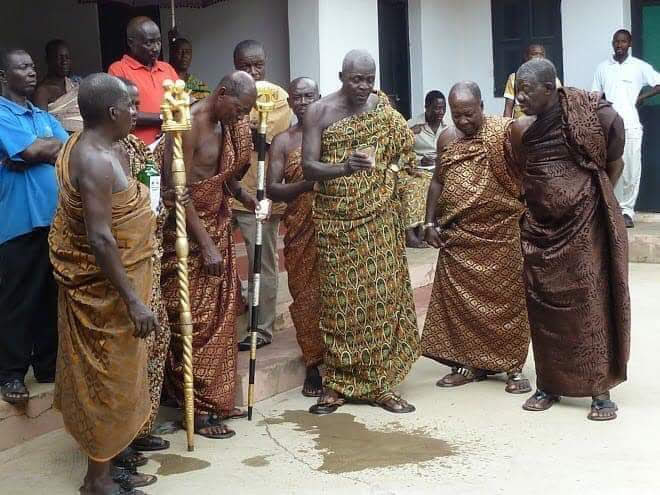 In Hoodoo, the pouring of libations is an African practice. |
 西アフリカの水の精霊 MIA 米国におけるシンビの精霊についての最も古い記録は、バージニア州の富裕な奴隷所有者エドマンド・ラフィンが19世紀に記録したもので、彼は「農業改革を 通じて奴隷経済システムを存続させる」ためにサウスカロライナ州を訪れた。ラフィンは、シンビの語の本来の綴りを知らなかったため、彼の記録ではシンビを 「Cymbee」と表記している。ラフィンは記録の中で、奴隷たちとのいくつかの会話を書き留めている。ある奴隷の少年は、ある夜、水を汲もうとして泉の 周りを走り回るシンビーの霊を目撃したと語った。また、ある奴隷の男性は、シンビーが少年の姿で板の上に座っているのを目撃し、それが水面に滑り落ちるの を見たと言った。シンビ(シンビー)の霊は、癒し、豊饒、繁栄をもたらすことができる。洗礼は、シンビの霊の祝福を呼び起こし、人々に癒し、豊饒、繁栄を もたらすために、川で行われる。西アフリカ人とアフリカ系アメリカ人は、このような水の儀式の際に、水の精霊を呼び起こすために白い服を着る。シンビの霊 は、森、山、水の中に宿り、自然の生命と成長を司っている。これらの存在は土地の守護者とみなされており、その土地に住む人々は畏怖され、尊敬されてい る。誰かがシムビの自然の生息地を破壊してシムビを軽んじると、シムビは人を溺れさせることがある。ビスンビの力を得るために、中央アフリカのバコンゴ族 やジョージア州とサウスカロライナ州ローカントリーの黒人たちは、石や貝殻を集め、ミンキシの束を作る。シンビの精霊は男性または女性の姿で現れる。長い 黒髪を持ち人魚に似た姿のものもいれば、アルビノの人に似た姿のものもいる。[265] 西中央アフリカでは、人魚に遭遇したという民話がある。アフリカ系アメリカ人の民話では、スーキーという名の少女がママ・ジョという名のマーメイドに遭遇 し、彼女がスーキーを守り、金貨を与えて経済的に支援するという話がある。[266] コンゴ文化では、人は死後シンビの霊「になる」。そのため、コンゴ文化では先祖をその名で呼ぶ。[267] 死後、魂は神のもとへ帰ると信じられているが、霊魂は地球に残ることもある。霊魂は幸運をもたらしたり、悪事を引き起こしたりして、世界と関わりを持つ。 フードゥー教において、先祖は人々の生活に介入し、導きと保護を与える重要な存在であり、崇拝されている。[268] 祈りと供物による先祖崇拝のフードゥー教の慣習は、アフリカに起源を持つ。フードゥー教では、先祖は人々の夢に現れて情報を与え、導くこともある。し かし、先祖は崇拝されないと怒り、家族の生活に問題を引き起こすこともある。[269] 突然死や事故死した親は、霊となって子供たちの元を訪れると信じられている。死んだ親の霊が子供たちに取り憑き、子供たちに霊的な害を与える可能性があ る。これを防ぐために、亡くなった親の幼い子供や乳児は、亡くなった親の棺桶の上を通る。元奴隷のアーヴィング・E・ローリー牧師は、毒殺された奴隷の女 性メアリーの葬儀に参列した際、この慣習を奴隷の物語に記録している。彼女の幼い子供は、母親の霊がその子を訪ねて戻ってきて怖がらせないように、母親の 棺のそばを通された。 ローリーは自伝の中で次のように書いている。「メアリーの赤ん坊は祖母に連れられて墓地に行き、死体が土に埋められる前に、赤ん坊は棺の周りを次々と人格 が交代しながら回された。 奴隷たちは、そうしなければ赤ん坊を育てることは不可能だと信じていた。母親の魂が我が子を取り戻し、我が子を連れていくと信じられていた。この信念は、 奴隷の子孫の多くが現在でも同じことを実践している。」[270] サウスカロライナ州とジョージア州のシー諸島にあるガラ・ゲイシーのコミュニティでは、棺を囲んで赤ん坊や幼児を渡すという慣習が今も続いている。 [271] フードゥーでは、先祖と強く結びつくために、墓地の土が使われることがある。先祖の墓の土は保護をもたらし、先祖ではない人格の墓から採取した土は敵を 傷つけたり、保護のために使用される。 墓場の土を取る前に、3枚のペニーまたはその他の支払い方法で代価を支払わなければならない。 墓場の土は、グーファードダストのもう一つの主要な材料である。 モジョバッグ(コンジュアバッグ)の中に入れ、霊を身にまとって持ち運ぶ。墓地の土は、死者の霊とつながる手段となる。先祖の霊を鎮めるために、アフリカ 系アメリカ人は、その人が生前最後に使用した物を墓の上に置いておく。それは、死者の人格の最後の本質がその物に宿っていると信じられているからであり、 死者を認めるための方法である。[272][273][274] 墓地は死者の最後の安息の地であり、霊の世界への入り口と見なされている。フードゥーでは、死者の霊は、肯定的なものであれ否定的なものであれ、請願者 に対して特定の任務を遂行するように請願したり、呼び出したりすることができる。[275] 墓地の土を用い、死者の霊と交わり、家族の墓を飾り、死んだ親族に食べ物を供えて家族に祟らないようにする、先祖崇拝のこの慣習は、中央アフリカのコンゴ 地域で生まれた。それは大西洋奴隷貿易の間にアメリカ合衆国にもたらされた。[276] 西アフリカの「リベーション」の習慣は、フードゥー教の実践において継続している。リベーションは、先祖を称え、認めるための捧げ物として供される。 [277]  フードゥー教では、リベーションを注ぐことはアフリカの習慣である。 |
| Those
people on the west coast of Africa, the Ewe-speaking natives, make
offerings such as food or drinks, usually pouring palm wine and banana
beer over an ancestor's grave. Church members are commonly known to be
buried with their feet facing east so they can rise on the last day
towards the sun, whereas sinners are buried the opposite way to avoid
being harmed by the light.[278] Another tale is that ghosts cannot
cross water. A mirror ceremony is held if a hoodoo doctor wants to
conjure a ghost across the water. Spirits who have died from sickness
in bed can walk among the living any night other than Friday night,
which is reserved for those who have died in the dark. Those who have died because of their capturers can get justice in the afterlife by using Hoodoo. For example, "If a murder victim is buried in a sitting position, the murderer will be speedily brought to justice."[279] The victim who is sitting in front of the heavenly throne can request justice to be done. Leaving an egg in a murdered victim's hand can prevent whoever took their life from wandering too far from the scene. The victim is holding the egg, representing the life of the murderer. Destiny In West African religions, people are given a destiny from God. Someone can alter parts of their destiny through rituals and conjure. The belief in destiny in Hoodoo has its roots in West African religions. A skilled conjurer can alter a person's destiny through divinities or evil forces. This means a conjurer can shorten someone's life by conjuring death onto them. A conjurer can protect a person's destiny from another conjurer trying to change it. To know a person's destiny, divination is used. Divination is also used to know what rituals should be performed and what charms should be worn to protect or alter a person's destiny.[280] |
ア
フリカ西海岸のエウェ語族の原住民は、食べ物や飲み物などの供物を捧げ、通常はヤシ酒やバナナビールを先祖の墓に注ぐ。
キリスト教徒は、最後の日に太陽の方角に向かって立ち上がれるように、足を東に向けて埋葬されるのが一般的である。一方、罪人は光によって害を被らないよ
うに、反対向きに埋葬される。[278]
別の言い伝えでは、幽霊は水を通過できないという。呪術医が水の向こう側に亡霊を呼び出したい場合、ミラー・セレモニー(鏡の儀式)が行われる。病死した
霊は、金曜の夜(暗闇の中で死んだ人々のための夜)以外の夜には、生きている人々の間を歩くことができる。 捕獲者によって死んだ人々は、フードゥーを用いることで死後の世界で正義を得ることができる。例えば、「殺人事件の被害者が座った状態で埋葬された場 合、殺人犯は速やかに裁かれるだろう」[279]。天国の玉座の前に座っている被害者は、正義を要求することができる。殺された被害者の手に卵を握らせて おけば、命を奪った人物が現場から遠く離れた場所にさまよい歩くのを防ぐことができる。被害者は卵を握りしめ、殺人犯の命を表している。 運命 西アフリカの宗教では、人々は神から運命を与えられる。儀式や降霊術によって、運命の一部を変更できる場合もある。フードゥーにおける運命の信仰は、西 アフリカの宗教にその起源を持つ。熟練した降霊術師は、神や悪の力によって、ある人物の運命を変えることができる。つまり、降霊術師は、死を降霊させるこ とによって、ある人物の寿命を縮めることができるのだ。占い師は、その人の運命を変更しようとする他の占い師から、その人の運命を守ることもできる。ある 人の運命を知るためには、占いが用いられる。占いは、その人の運命を守ったり変更したりするためにどのような儀式を行うべきか、またどのようなお守りを身 につけるべきかを知るためにも用いられる。[280] |
| Practices Seeking See also: Ring shout Coffin Point Praise House In a process known as "seeking", a hoodoo practitioner will ask for the salvation of a person's soul for a Gullah church to accept them. A spiritual leader will assist in the process, and after believing the follower is ready, they will announce it to the church. A ceremony will commence with much singing and a ring shout practice.[253] The word "shout" is derived from the West African Muslim word saut, meaning "dancing or moving around the Kaaba". The ring shout in Black churches (African American churches) originates from African styles of dance. Counterclockwise circle dancing is practiced in West and Central Africa to invoke the spirits of the ancestors and for spirit possession. The ring shout and shouting look similar to the possession of the African spirit. In Hoodoo, African Americans perform the ring shout to become touched or possessed by the Holy Spirit and to communicate with the spirits of dead ancestors. African Americans replaced African spirits with the Christian God (Holy Spirit) during possession. In African American churches, this is called "catching the spirit." African Americans use music, clapping, and singing during the ring shout and in modern-day shouting in Black churches to bring down the spirit. The singing during the ring shout has Christian meaning using biblical references.[281][282] During slavery, enslaved Africans were forced to become Christian, which resulted in a blend of African and Christian spiritual practices that shaped Hoodoo. As a result, Hoodoo was and continues to be practiced in some Black churches in the United States.[283][284] In the Gullah/Geechee Cultural Heritage Corridor[285] area, praise houses[286] are places where African Americans gather to have church and perform healing rituals and the ring shout.[287] The ring shout in Hoodoo has its origins in the Kongo region of Africa with the Kongo cosmogram. During the ring shout, African Americans shuffle their feet on the floor or ground without lifting their feet, believing that creating static electricity from the earth connects them with its spiritual energy. Shuffling like this with singing and clapping is also done to communicate with ancestral spirits. The spiritual energy intensifies until someone is pulled into the center of the ring, shouted by the spirit. This is done to allow the spirit to enter and govern the ring.[288][289] Researchers noticed that the African American ring shouts resembled counterclockwise circle dances in West Africa. In West Africa, a counterclockwise circle dance is performed during a funeral to send the soul to the ancestral realm (land of the dead) because energy and souls travel in a circle. This practice continued in the Gullah Geechee Nation, where African Americans performed a ring shout over a person's grave to send their soul to the ancestral realm. In addition, the ring shout is performed for other special occasions not associated with death.[290] In 2016, Vice News went to St. Helena Island, South Carolina and interviewed African Americans in the Gullah Geechee Nation and recorded some of their spiritual traditions and cultural practices. Their recordings showed African cultural and spiritual practices that have survived in the Gullah Nation of South Carolina. The video showed a ring shout, singing, and other traditions. African Americans in South Carolina are fighting to keep their traditions alive despite gentrification of some of their communities.[291] The ring shout continues today in Georgia with the McIntosh County Shouters. In 2017, the Smithsonian Institution interviewed African Americans and recorded the ring shout tradition practiced by the Gullah Geechee in Georgia. The songs sung during the ring shout and in shouting originated among their ancestors who were transported from Africa into slavery in America, where they replaced African songs and chants with Christian songs and biblical references.[292][293] |
慣習 求める 参照:リング・シャウト コフィン・ポイント・プレイズ・ハウス 「求める」というプロセスでは、フードゥーの実践者は、その人格をガラー教会が受け入れるために、その魂の救済を求める。 霊的指導者がそのプロセスを支援し、信奉者が準備ができたと信じた後、教会にそれを発表する。儀式は多くの歌とリング・シャウトの練習から始まる。 [253] 「シャウト」という言葉は西アフリカのイスラム教徒の言葉「サウト」に由来し、「カーバ神殿の周りで踊ったり動き回ったりすること」を意味する。 ブラック・チャーチ(アフリカ系アメリカ人の教会)におけるリング・シャウトは、アフリカのダンスのスタイルに由来する。西アフリカと中央アフリカでは、 祖先の霊を呼び起こし、憑依するために、反時計回りの円を描くダンスが踊られている。リング・シャウトやシャウティングは、アフリカの霊の憑依とよく似て いる。フードゥー教では、アフリカ系アメリカ人はリング・シャウトを行い、聖霊に触れられたり憑依されたりし、死んだ祖先の霊と交信する。アフリカ系ア メリカ人は、憑依の際にアフリカの精霊をキリスト教の神(聖霊)に置き換えた。アフリカ系アメリカ人の教会では、これを「スピリットをキャッチする」と呼 ぶ。アフリカ系アメリカ人は、リング・シャウトや現代のブラック教会でのシャウトの際に音楽や手拍子、歌を用いてスピリットを降ろす。リング・シャウト中 の歌には、聖書からの引用を用いたキリスト教的な意味がある。 奴隷制時代には、アフリカ系の人々はキリスト教に改宗させられたが、その結果、アフリカの霊魂信仰とキリスト教の霊魂信仰が融合し、フードゥーが形作ら れた。その結果、フードゥーは、アメリカ合衆国の一部の黒人教会で実践され、現在も続けられている。[283][284] ガラ/ギチー文化遺産回廊[285] 地域では、プレザンス・ハウス[286] が、アフリカ系アメリカ人が集まり、教会活動を行ったり、癒しの儀式やリング・シャウトを行う場所となっている。 フードゥーにおけるリング・シャウトは、アフリカのコンゴ地域に起源を持ち、コンゴの宇宙図形と結びついている。リング・シャウトの間、アフリカ系アメ リカ人は床や地面に足を上げずに足踏みをする。大地から静電気を起こすことで、その霊的なエネルギーとつながると信じられているからだ。歌ったり拍手をし たりしながらこのような足踏みをするのは、先祖の霊と交信するためでもある。霊の力によって誰かがリングの中心に引き寄せられ、叫ばれるまで、霊的なエネ ルギーは強まっていく。これは、霊がリングに入り、支配できるようにするためである。[288][289] 研究者たちは、アフリカ系アメリカ人のリング・シャウトが西アフリカの反時計回りの円舞に似ていることに気づいた。西アフリカでは、反時計回りの円舞は葬 儀の際に、魂を先祖の領域(死者の国)に送るために行われる。なぜなら、エネルギーと魂は円を描いて巡るからである。この慣習はガラ・ゲイシー国民の間で も続き、アフリカ系アメリカ人は、人格の魂を先祖の領域に送るために、その墓の上でリング・シャウトを歌った。さらに、リング・シャウトは、死とは関係の ない特別な機会にも歌われる。[290] 2016年、Vice Newsはサウスカロライナ州セントヘレナ島を訪れ、ガラ・ゲイシー国民のアフリカ系アメリカ人にインタビューを行い、彼らの精神的な伝統や文化的な慣習 の一部を記録した。彼らの録音は、サウスカロライナ州のガラ族の国民の中で生き残ってきたアフリカ文化と精神的な慣習を示した。ビデオでは、リング・シャ ウト、歌、その他の伝統が紹介された。サウスカロライナ州のアフリカ系アメリカ人は、彼らのコミュニティの一部が富裕化しているにもかかわらず、彼らの伝 統を守るために戦っている。[291] リング・シャウトは、現在もジョージア州のマッキントッシュ郡のシャウターたちによって続けられている。2017年には、スミソニアン博物館がアフリカ系 アメリカ人にインタビューを行い、ジョージア州のガラ族が実践するリング・シャウトの伝統を録音した。リング・シャウトやシャウトで歌われる歌は、アフリ カから奴隷としてアメリカに連れて来られた彼らの祖先の間で生まれたもので、彼らはアフリカの歌やチャントをキリスト教の歌や聖書に置き換えた。 [292][293] |
| Initiations This process of seeking in Hoodoo, accompanied by the ring shout, is also an initiation into Hoodoo. African Americans in the Sea Islands (Gullah Geechee people) performed initiations of community members by combining West African initiation practices with Christian practices called "Seeking Jesus." Young people spent time in nature "seeking Jesus" and received guidance from Black religious leaders. The spiritual mothers of the African American community provided prophetic guidance to those "seeking." After their initiation, initiates were accepted into the religious Black community.[294][281] Zora Neale Hurston wrote about her initiation into Hoodoo in her book Mules and Men published in 1935. Hurston explained her initiation into Hoodoo included wrapping snakeskins around her body and lying on a couch (sofa) for three days nude so she could have a vision and acceptance from the spirits.[295] In addition to lying on a couch nude wrapped in snakeskins for her initiation, Hurston had to drink the blood of the Hoodoo doctors who initiated her from a wine glass cup.[296] There are other ways people become a Hoodoo doctor, such as being born into a family of practitioners or through a mentor under an apprenticeship. Initiations are not required to become a Hoodoo doctor or rootworker.[297] Other Hoodoo initiations include ritual isolations, learning about charms, herbs, roots, and dream lore from a community elder.[298] |
イニシエーション リング・シャウトを伴うフードゥーの探求のプロセスは、フードゥーへのイニシエーションでもある。シー・アイランド(ガラ・ガチー族)に住むアフリカ 系アメリカ人は、西アフリカのイニシエーションの慣習と「ジーザスを求める」というキリスト教の慣習を組み合わせることで、コミュニティのメンバーのイニ シエーションを行っていた。若者たちは「ジーザスを求める」ために自然の中で時間を過ごし、黒人宗教指導者から指導を受けていた。アフリカ系アメリカ人コ ミュニティのスピリチュアル・マザーは、探求する人々に予言的な指導を与えていた。入信後は、宗教的な黒人コミュニティの一員として受け入れられた。 [294][281] ゾラ・ニール・ハーストンは、1935年に出版された著書『Mules and Men』の中で、フードゥー教への入信について書いている。 ハーストンは、フードゥー教への入信儀式について、蛇の皮を体に巻きつけ、3日間裸でソファに横たわって、霊からの啓示と受容を得ることを説明してい る。[295] 蛇の皮を体に巻きつけて裸でソファに横たわる入信儀式に加えて、 彼女は、ワイングラスに入った杯から、彼女をイニシエーションしたフードゥー医師の血を飲まなければならなかった。[296] フードゥー医師になるには、他にも、実践者の家庭に生まれたり、見習いとして師匠について学ぶといった方法がある。フードゥー教の医師やルートワー カーになるには、イニシエーションは必須ではない。[297] その他のフードゥー教のイニシエーションには、儀式的な孤立、コミュニティの長老からのお守り、ハーブ、根、夢の伝承に関する学習などがある。 [298] |
| Burial traditions A Sankofa Symbol was etched onto the memorial wall at the African Burial Ground National Monument. Archaeologists discovered evidence of continued West-Central African burial practices in a section of Lower Manhattan, New York City, which is now the location of the African Burial Ground National Monument.[299] Along with historians involved in the project, they noted that about 15,000 Africans were buried in a section of Lower Manhattan called the "Negroes Burial Ground". Only 419 Africans buried were exhumed; over 500 artifacts were excavated, showing continued African traditions in New York City's Black community. Of 146 beads recovered, nine of them had come from West Africa. The other beads were manufactured in Europe; these had also been used by enslaved and free people for burial practices, incorporating an African spiritual interpretation of European beads. For example, many of the Africans buried, including women, men, and children, had beads, waist beads, and wristlets. In some African societies, beads are believed to bring protection, wealth, fertility, and health to the wearer. In contrast, in West Africa, African women wear beads around their waist as markers of beauty. Also found were beads still wrapped around the waist of the remains of enslaved women and about 200 shells. Beads, shells, and iron bars are associated with the Yoruba deity Olokun, a spirit that owns the sea. Shells are associated with water and help the soul transition in the afterlife because seashells help the soul move from the realm of the living into the realm of the dead (ancestors), which is associated with water. Other artifacts found at the African Burial Ground were shiny objects and reflective materials. Africans used these to communicate with spirits because shiny and reflective materials were thought to be able to capture the "flash of the spirit". Between 1626 and the 1660s, the majority of Africans imported to colonial New York were from the Kongo-Angolan region because New York had been colonized by the New York Dutch, whose merchants carried on trade with the west-central coast of West Africa. Historians and archaeologists found Kongo-related artifacts at the African Burial Ground, such as minkisi and Nkisi bundles buried with African remains. These Nkisi and minkisi bundles became the conjure bags in Hoodoo.[300] After 1679, the majority of Africans imported to colonial New York were from West Africa because the colonial rule of New York shifted from the Dutch to the English in 1664. West Africans imported to the colony included Akan, Fon, Yoruba, and other ethnic groups. These diverse African ethnic groups brought their traditional cultures with them and adorned their dead with adornments made from American materials but with an African design and meaning. The excavations revealed an indication of Ghanaian burial practice when a funerary clay pipe with a Ghanaian design called ebua was discovered with the remains of an African American woman.[301] Also excavated at the site were conjure bags (mojo bags)—these conjuring bundles had crystals, roots, beads, feathers, animal parts, and other items for protection from malign forces and to communicate with spirits. Other artifacts found at the site that linked to West Africa, researchers suggest, was the finding of an Akan Sankofa Symbol on a coffin.[302] The Akan Sankofa Adinkra symbol was a means to remember one's ancestors and look to the future while not forgetting the past.[303] West African spiritual beliefs were mixed with the Christian faith, and free and enslaved West Africans started their own African Methodist Episcopal Zion Churches in New York City.[304][305][306] The African Burial Ground reserved a location called the Ancestral Libation Chamber for people to perform spiritual ceremonies to pay their respects to the enslaved and free Africans buried at the monument. African Americans and other African-descended people continue to travel to the African Burial Ground from across the country and around the world and perform libation ceremonies to honor the 15,000-plus African people buried in New York City.[307][308] Researchers found burial practices by African Americans in Florida that were similar to those of Bantu-Kongo peoples. Researchers noticed the similarities between the grave sites of African Americans in Florida and those of the Bakongo people in Central Africa. Headstones with a T shape were seen in Black cemeteries and at grave sites in the Kongo region. The T-shaped headstone peculiar to Black cemeteries in North Florida during the 1920s through the 1950s corresponds to the lower half of the Kongo cosmogram that symbolizes the realm of the ancestors and spiritual power. In Bantu-Kongo spirituality, the spirit realm is white. African Americans decorated the graves of their family members with white items such as white conch seashells, representing the watery divide located on the horizontal line of the Kongo cosmogram that is a boundary between the realm of the living and the realm of the dead. By placing seashells on graves, African Americans were creating a boundary (barrier) between the recently deceased and them, keeping the spirit in the realm of the dead below the Kongo cosmogram.[309][310] Another reason was to guide the recently deceased into the ancestral realm or return their spirit back to Africa.[311][312] In the Kongo region, Bakongo people placed broken objects on top of graves so the recently deceased could travel to the land of the dead. The broken items symbolized that the person's connection to the living was broken by death and that they needed to return to the realm of the dead. Placing seashells on top of graves in African American cemeteries continued beyond the 1950s. It was noted by researchers in Archer, Florida, and in other African American cemeteries in the state, as well as among the Gullah Geechee people in the Sea Islands of Georgia.[313][314] The conjure practices of the Gullah Geechee were influenced by Bakongo and other West African ethnic groups when a slave ship, Wanderer, illegally imported 409 enslaved Africans to Jekyll Island, Georgia, in 1858.[315] |
埋葬の伝統 サンコファのシンボルが、アフリカ埋葬地国定史跡の記念碑の壁に刻まれた。 考古学者たちは、ニューヨーク市ロウアー・マンハッタンの一部で西・中央アフリカの埋葬の慣習が継続していた証拠を発見した。この場所は現在、アフリカ埋 葬地国定史跡となっている。[299] プロジェクトに関わった歴史学者たちとともに、彼らは「ニグロ埋葬地」と呼ばれるロウアー・マンハッタンの一部に約15,000人のアフリカ人が埋葬され ていたことを指摘した。発掘された419人のアフリカ人の遺骨のみが発掘され、500点以上の工芸品が発掘され、ニューヨーク市の黒人コミュニティにおけ るアフリカの伝統が継続していることが示された。146個のビーズが回収されたが、そのうち9個は西アフリカから来たものだった。他のビーズはヨーロッパ で製造されたもので、これらは奴隷や自由民が埋葬の際に使用していたもので、ヨーロッパのビーズにアフリカの精神的な解釈を取り入れたものだった。例え ば、女性、男性、子供を含む多くのアフリカ人が埋葬されていたが、その中にはビーズや腰飾り、腕飾りをつけていた人もいた。一部のアフリカ社会では、ビー ズは身に着ける人に保護、富、豊穣、保健をもたらすと考えられている。一方、西アフリカでは、アフリカの女性は美しさの象徴として腰にビーズを巻いてい る。また、奴隷として働かされていた女性の遺体の腰にビーズが巻かれたままの状態で見つかったほか、約200個の貝殻も発見された。ビーズ、貝殻、鉄の棒 は、ヨルバ族の神「オロクン」と関連付けられている。オロクンは海の精霊である。貝殻は水と関連付けられており、死後の世界で魂の移行を助ける。なぜな ら、貝殻は魂が水と関連付けられている生者の世界から死者の世界(祖先)へと移行するのを助けるからだ。アフリカ人墓地から発見されたその他の人工物は、 光沢のある物体や反射材であった。アフリカ人は、光沢のある素材や反射する素材が「魂の閃光」を捉えることができると考え、それらを使って霊と交信してい た。1626年から1660年代にかけて、植民地時代のニューヨークに輸入されたアフリカ人の大半は、コンゴ・アンゴラ地域出身者であった。ニューヨーク はオランダ人によって植民地化されていたが、その商人たちは西アフリカの西中央海岸と貿易を行っていた。歴史家や考古学者は、アフリカ人墓地で、アフリカ 人の遺骨とともに埋葬されたミンキシやンキシの束など、コンゴに関連する遺物を発見した。これらのンキシやミンキシの束は、フードゥー教の魔術袋となっ た。 1679年以降、植民地時代のニューヨークに輸入されたアフリカ人の大半は西アフリカ出身者であった。これは、1664年にニューヨークの植民地支配がオ ランダからイギリスに移行したためである。植民地に輸入された西アフリカ人には、アカン族、フォン族、ヨルバ族、その他の民族が含まれていた。これらの多 様なアフリカの民族は、自分たちの伝統文化を携えてやって来て、アメリカで採取した素材で、アフリカのデザインと意味を持つ装飾品を死者につけた。発掘調 査により、アフリカ系アメリカ人女性の遺骨とともにガーナのデザインが施された壷(エブアと呼ばれる)が発見され、ガーナの埋葬習慣の痕跡が明らかになっ た。[301] また、この遺跡からは魔術用袋(モジョ・バッグ)も発掘された。魔術用袋には、結晶、根、ビーズ、羽、動物の一部など、悪意から身を守り、霊と交信するた めの品々が入れられていた。この遺跡から発見された他の遺物で西アフリカと関連付けられるものとして、棺にアカン族のサンコファのシンボルが描かれていた ことが挙げられる。[302] アカン族のサンコファ・アディンクラのシンボルは、過去を忘れることなく、先祖を偲び未来を見据えるための手段であった。[303] 西アフリカの精神的な信仰は キリスト教信仰と混ざり合い、自由民と奴隷であった西アフリカの人々は、ニューヨーク市でアフリカ系アメリカ人監督教会(African Methodist Episcopal Zion Church)を設立した。[304][305][306] アフリカ人墓地は、この記念碑に埋葬された奴隷や自由民のアフリカ人に敬意を表するスピリチュアルな儀式を行うための「先祖の供物室」と呼ばれる場所を確 保した。アフリカ系アメリカ人やその他のアフリカ系の人々は、今もなお全米および世界中からアフリカン・バーリング・グラウンドを訪れ、ニューヨーク市に 埋葬された15,000人以上のアフリカの人々を称えるための儀式を行っている。 フロリダ州のアフリカ系アメリカ人の埋葬の慣習がバンツー・コンゴ族のものと類似していることが研究者の調査で明らかになった。フロリダ州のアフリカ系ア メリカ人の墓と中央アフリカのバコンゴ族の墓の間に類似性があることが研究者の調査で明らかになった。T字型の墓石は、黒人墓地やコンゴ地域にある墓で目 撃された。1920年代から1950年代にかけての北フロリダの黒人墓地特有のT字型の墓石は、祖先の領域と霊力を象徴するコンゴ宇宙図の下半分に対応し ている。バンツー・コンゴの霊性では、霊界は白である。アフリカ系アメリカ人は、コンゴ宇宙図の水平線上に位置する、生者の領域と死者の領域の境界である 水の隔たりを象徴するものとして、白い巻貝などの白い品々で家族の墓を飾った。墓に貝殻を置くことで、アフリカ系アメリカ人は最近亡くなった人と自分たち との間に境界(障壁)を作り、その霊魂を金剛界の下にある死者の領域にとどめておくのである。[309][310] もう一つの理由は、最近亡くなった人を先祖の領域に導くか、その霊魂をアフリカに戻すことだった。[311][312] コンゴ地域では、バコンゴ族の人々は、最近亡くなった人が死者の国へ旅立てるよう、壊れた物を墓の上に置いた。壊れた物は、死によってその人格がこの世と のつながりを断たれ、死者の国へ戻る必要があることを象徴していた。アフリカ系アメリカ人の墓地で貝殻を墓の上に置く習慣は、1950年代以降も続いた。 この習慣は、フロリダ州アーチャーや同州内の他のアフリカ系アメリカ人墓地、そしてジョージア州シーアイランドのガラ族の間でも見られた。奴隷船ワンダ ラー号が1858年に409人のアフリカ人奴隷をジョージア州ジキル島に違法輸入した際、バコンゴ族やその他の西アフリカの民族から影響を受けた。 [315] |
| Bottle tree See also: Haint blue Bottle Tree in Central Holmes Cemetery (Yazoo County, Mississippi) Hoodoo is linked to a popular tradition of bottle trees in the United States. According to gardener and glass bottle researcher Felder Rushing, the use of bottle trees came to the Old South from Africa with the slave trade. The use of blue bottles is linked to the "haint blue" spirit specifically. Glass bottle trees have become a popular garden decoration throughout the South and Southwest.[316] According to academic research, bottle trees originated in the Kongo region of Central Africa. African-descended people in the African Diaspora decorated trees with bottles, plates, pieces of broken pots, and other items to drive away evil. This practice was brought to the United States during the transatlantic slave trade. The purpose of bottle trees is to protect a home or a location from evil spirits by trapping them inside the bottles.[317] The spirits are said to be attracted to the sunlight that flickers inside the bottle. As the sunlight passes through it, the spirit is trapped in the bottle and banished with the sunlight. Sometimes, items such as stones or graveyard dirt are placed inside the bottle to attract the spirit further.[318] |
ボトルツリー 参照:ヘイント・ブルー ボトルツリー(ミシシッピ州ヤズー郡の中央ホームズ墓地) フードゥーは、アメリカ合衆国で人気のボトルツリーの伝統と関連している。園芸家でガラス瓶の研究者であるフェルダー・ラッシングによると、ボトルツ リーは奴隷貿易とともにアフリカからアメリカ南部に伝わったという。特に、青い瓶の使用は「ヘイント・ブルー」のスピリットと関連している。ガラス瓶の木 は南部と南西部で人気のガーデニング装飾となっている。学術研究によると、ボトルツリーは中央アフリカのコンゴ地域で生まれた。アフリカ系の人々はアフリ カ大陸に散らばって暮らす中で、悪霊を追い払うために木に瓶や皿、割れた鉢のかけらなどを飾るようになった。この習慣は大西洋奴隷貿易によってアメリカに 持ち込まれた。ボトルツリーは、悪霊をボトルの中に閉じ込めることで、家屋や場所を悪霊から守ることを目的としている。[317] ボトルの中で明滅する日光に悪霊が引き寄せられると言われている。日光がボトルを通過する際に、悪霊はボトルの中に閉じ込められ、日光とともに追い払われ る。時には、石や墓地の土などのアイテムをボトルの中に入れて、悪霊をさらに引き寄せることもある。[318] |
| Personal concerns In Hoodoo, personal concerns such as hair, nail clippings, bones, blood, and other bodily fluids are mixed with ingredients for either a positive or a negative effect. The items are placed inside conjure bags or jars and mixed with roots, herbs, and animal parts, sometimes ground into a powder or with graveyard dirt from a murdered victim's grave. The cursed items are buried under a person's porch steps to cause misfortune. To prevent being "fixed" (cursed), it is considered a good idea to burn loose hairs, combed or fallen from the head, so a conjurer cannot make a cursing powder from a person's hair. Placing personal concerns in containers and burying them to cause harm was practiced in West African countries such as Nigeria and Benin.[319][320] Offerings The West-Central African practice of leaving food offerings for deceased relatives and feeding and petitioning other spirits by giving them offerings of food, water, or rum (whiskey) continues in the practice of Hoodoo. Providing spirits offerings of libation empowers the spirits and honors them by acknowledging their existence. These offerings of food, liquids, or poured libations are left at gravesites or a tree. This custom is still practiced in the Central African country of Gabon and other parts of Africa and was brought to the United States during the period of the transatlantic slave trade.[321][322][323] Commonly used items Conjure can be made using many things or nothing at all. There are certain items commonly used in Hoodoo if needed. "Fast Luck" and "Red Fast Luck" are herbal scrubs that bring luck into stores or a person's life. "Essence of Van Van" and "Fast Scrubbing Essence" are mixtures of one to thirteen oils containing herbs such as cinnamon, wintergreen, and lavender.[324] Colors are also important in Hoodoo to conjure different results the person is looking for. For example, "Red, for victory. Pink, for love (some say for drawing success). Green, to drive off (some say for success), Blue, for success and protection (for causing death also), Yellow, for money, Brown, for drawing money and people."[325] Brick powder is commonly used in Hoodoo to remove and protect from evil by placing red brick dust at the entrance of a home.[326] |
個人的な関心事 フードゥーでは、髪、爪切り、骨、血液、その他の体液などの個人的な関心事が、ポジティブまたはネガティブな効果をもたらす材料と混ぜ合わされる。これ らの品目は、呪術用の袋や瓶の中に入れられ、根、ハーブ、動物の部位と混ぜ合わされ、時には粉末に挽かれたり、殺された犠牲者の墓の土と混ぜ合わされる。 呪われた品目は、不幸を引き起こすために、人のポーチの階段の下に埋められる。呪い(呪い)を「固定」されないようにするため、頭髪をとかしたり、抜け落 ちたりしたものを燃やすのが良いとされている。そうすれば、呪術師がその人の髪の毛から呪いの粉を作ることができなくなる。ナイジェリアやベナンなどの西 アフリカ諸国では、個人的な悩みを容器に入れて埋め、害を与えるという行為が行われていた。[319][320] 供物 西アフリカ中央部では、亡くなった親族のために食べ物を供えたり、食べ物や水、ラム酒(ウイスキー)を供えて他の精霊に食べ物を分け与えたり、懇願したり する習慣が、フードゥー教の信仰においても続いている。精霊に供物を捧げることで、精霊に力を与え、その存在を認めることで敬意を表す。これらの食べ 物、液体、または注ぎ込まれたお酒の供物は、墓や木に置かれる。この習慣は、中央アフリカのガボンやその他のアフリカ地域では今でも行われており、大西洋 奴隷貿易の時代にアメリカにもたらされた。[321][322][323] 一般的に使用されるアイテム 呪術は、多くの物や、まったく何も使わずに作ることができる。必要に応じて、フードゥーで一般的に使用される特定のアイテムがある。「ファスト・ラッ ク」と「レッド・ファスト・ラック」は、店舗や個人の生活に幸運をもたらすハーブスクラブである。「エッセンス・オブ・ヴァン・ヴァン」と「ファスト・ス クラビング・エッセンス」は、シナモン、ウィンターグリーン、ラベンダーなどのハーブを含む1~13種類のオイルの混合物である。[324] フードゥーでは、人格が求める異なる結果を引き出すために、色も重要である。例えば、「赤は勝利、ピンクは愛(成功を引き寄せるという説もある)、緑は 追い出し(成功という説もある)、青は成功と保護(死を引き起こすという説もある)、黄色は金、茶色は金と人々を引き寄せる」[325] レンガの粉は、赤いレンガの粉を家の入り口に置くことで悪を除去し、悪から身を守るためにフードゥーで一般的に使用されている。[326] |
Divination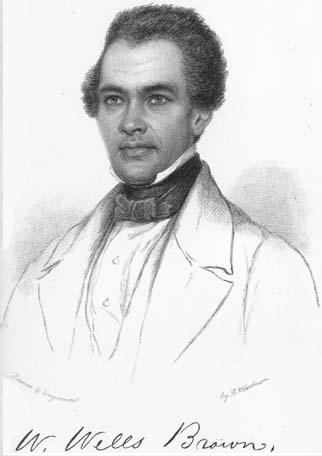 William Wells Brown wrote in his autobiography that he spoke with an enslaved fortune-teller named Frank to learn if his escape from slavery on the Underground Railroad would be successful.[327] Divination in Hoodoo originated from African practices. In West-Central Africa, divination was (and is) used to determine what an individual or a community should know that is important for survival and spiritual balance. In Africa and American Hoodoo, people turn to divination, seeking guidance from an elder or a skilled diviner about major changes in their lives. Conjure doctors diagnose illnesses and determine treatments using divination.[204] This practice was brought to the United States during the transatlantic slave trade and was later influenced by other divination systems.[328][329] There are several forms of divination traditionally used in Hoodoo.[330] Astrology Practitioners sometimes incorporate planetary and elemental energies in their spiritual work (spells). Numerology is also used in Hoodoo and combined with astrology for spiritual works. African Americans in Indiana have combined numerology, astrology, African mysticism, Voodoo, and Hoodoo to create a new spiritual divination practice and system of magic unique to African Americans. Rootworkers there trained under African American astrologers in Black communities.[331][332][333] Blacks in the United States have historically looked to astrology for guidance. For example, Nat Turner took the sign of an eclipse of the sun as a sign from God to start his slave revolt in Southampton County, Virginia, in 1831.[245] Augury The practice of Augury is deciphering phenomena (omens) that are believed to foretell the future, often signifying the advent of change. Before his rebellion, Nat Turner had visions and omens from spirits to free the enslaved through armed resistance.[334] In African American communities, a child born with a caul over their face is believed to have psychic gifts to see spirits and see into the future. This belief in the caul bringing psychic gifts was found in West Africa, particularly in Benin (Dahomey). After the baby is born, the caul is removed, preserved, and used to drive away or banish ghosts.[335][336] It is believed that a child born at midnight will have second sight or extrasensory perception of events.[337] Cartomancy Cartomancy is the practice of using Tarot and poker playing cards to receive messages from spirits. This form of divination was added later in Hoodoo. Some Hoodoo practitioners use both.[338] Cleromancy Cleromancy is casting small objects such as shells, bones, stalks, coins, nuts, stones, dice, and sticks for an answer from spirits. The use of such items is a form of divination used in Africa and Hoodoo in the United States.[339][340] Domino divination Rootworkers also divine with dominoes.[341] Oneiromancy Oneiromancy is a form of divination based on dreams. Formerly enslaved people talked about receiving messages from ancestors and spirits concerning imminent danger or receiving advice on how to save money.[342] Harriet Tubman believed her dreams were given to her by God to inform her how to rescue her family from slavery on the Underground Railroad. Tubman told biographers she had dreams of flying over fields, which let her know where to go and where the safe places were to hide freedom seekers.[343] Walking boy The walking boy was a traditional form of divination practiced by African Americans on slave plantations, and the practice continued after chattel slavery. A conjurer would take a bottle, tie a string, and place a bug inside it. The conjurer pulled the bottle as the bug moved. The direction in which the bug moved inside the bottle revealed to the conjurer where a spell bottle was buried that caused misfortune or where the person who buried the bottle lived.[344] Enslaved African Americans held diviners in high respect, believing that they knew about unknown events and that, using divination, conjurers could tell if an enslaved person would be whipped, sold, or escape to freedom. Autobiographies of formerly enslaved people tell about enslaved people seeking counsel from enslaved diviners.[345] |
占い ウィリアム・ウェルズ・ブラウンは自伝の中で、奴隷制度からの逃亡が成功するかどうかを知るために、フランクという名の奴隷の占い師と話をしたと書いてい る。 フードゥーにおける占いは、アフリカの慣習に由来する。西中央アフリカでは、占いは(そして今も)個人やコミュニティが生き残るために、また精神的なバ ランスを保つために知っておくべきことを決定するために用いられてきた。アフリカやアメリカにおけるフードゥーでは、人々は人生における大きな変化につ いて、長老や熟練した占い師に助言を求めるために占いに頼る。呪術医は占いによって病気を診断し、治療法を決定する。[204] この慣習は大西洋奴隷貿易の間にアメリカ合衆国にもたらされ、その後、他の占いシステムの影響を受けた。[328][329] フードゥーでは伝統的にいくつかの占い形式が用いられている。[330] 占星術の 実践者は、時折、惑星や元素のエネルギーを霊的な作業(呪文)に取り入れる。数秘術もフードゥーで用いられ、霊的な作業では占星術と組み合わされる。イ ンディアナ州の黒人たちは、数秘術、占星術、アフリカの神秘主義、ヴードゥー、フードゥーを組み合わせて、黒人特有の新しい霊的な占いと呪術の体系を作 り出した。現地のルーツワーカーたちは、黒人コミュニティのアフリカ系アメリカ人占星術師の下で訓練を受けた。[331][332][333] 米国の黒人は歴史的に占星術に導きを求めてきた。例えば、ナット・ターナーは1831年にバージニア州サフォーク郡で奴隷反乱を起こすにあたり、日食を神 のお告げと受け取った。[245] 占い 占いは、未来を予言すると考えられている現象(前兆)を解読するもので、しばしば変化の到来を意味する。反乱を起こす前、ナット・ターナーは武装抵抗に よって奴隷を解放するという霊からのビジョンと前兆を受けていた。アフリカ系アメリカ人のコミュニティでは、生まれつき顔にこぶのある子供は、霊を見るこ とができ、未来を見通すことができる超能力を持っていると信じられている。この「コル」が超能力をもたらすという信仰は西アフリカ、特にベナン(ダホ メー)で見られる。赤ちゃんが生まれると、コルは取り除かれ、保存され、幽霊を追い払ったり、追い出したりするために使われる。[335][336] 真夜中に生まれた子供は、予知能力や超感覚的知覚を持つと信じられている。[337] カルトマニー カルトマニーは、タロットカードやポーカーのトランプを用いて霊からのメッセージを受け取るという占いである。この占いは、フードゥー教に後から加えられ た。フードゥー教の実践者のなかには、両方を用いる者もいる。 クレロマンシー クレロマンシーは、貝殻、骨、茎、硬貨、木の実、石、サイコロ、棒などの小さな物体を投げて、霊からの答えを引き出すものである。このような物品を用いる ことは、アフリカやアメリカ合衆国のフードゥーで用いられる占いの形態である。 ドミノ占い ルートワーカーはドミノを用いて占いを行うこともある。 夢占い 夢占いは夢に基づく占いの一種である。かつて奴隷であった人々は、差し迫った危険に関する先祖や霊からのメッセージを受け取ったり、お金を節約する方法に ついての助言を受け取ったりしたと語っている。[342] ハリー・タブマンは、地下鉄道で家族を奴隷制度から救い出す方法を知らせるために、神が夢を与えてくれたと信じていた。タブマンは伝記作家に、野原の上を 飛ぶ夢を見たことを語り、その夢によってどこへ行くべきか、また自由を求める人々をかくまうのに安全な場所がどこにあるかがわかったと語った。[343] 歩く少年 ウォーキング・ボーイは、奴隷農園でアフリカ系アメリカ人によって行われていた伝統的な占いの方法であり、奴隷制度廃止後もその習慣は続いた。 占い師はビンに糸を結び、中に虫を入れる。 ビンを引っ張ると、虫が動く。 ビンの中で虫が動いた方向によって、不幸をもたらす魔法のビンがどこに埋められているか、あるいはビンを埋めた人物の住まいがどこかがわかるというのだ。 奴隷として働かされていたアフリカ系アメリカ人は占い師を非常に尊敬していた。占い師は未知の出来事を知っており、占いによって、奴隷が鞭打ちや売却、あ るいは逃亡して自由の身になるかどうかが占い師にわかる、と信じていた。かつて奴隷として働かされていた人々の自伝には、奴隷が奴隷の占い師に助言を求め たことが書かれている。[345] |
Relationship with the Spiritual
church movement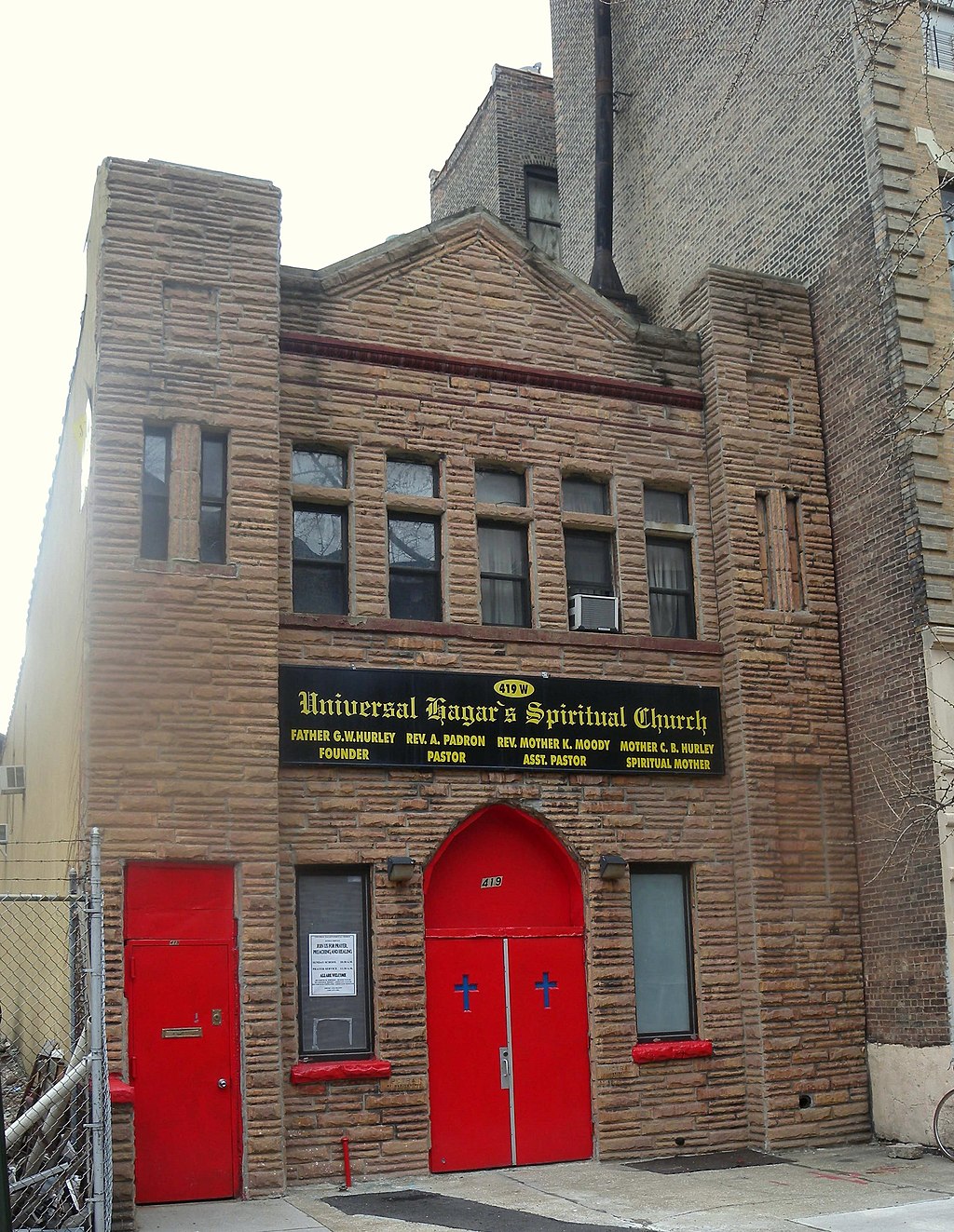 Universal Hagar's Spiritual Church, New York City The Spiritual church movement in the United States began in the mid-nineteenth century. The African American community became a part of this movement in the early twentieth century, and numerous Spiritual churches are in African American communities. African Americans started independent Spiritual churches as a way for them to hide their African practices from whites by synchronizing African traditions with the Christian faith. Some Black Spiritual churches incorporated elements of Hoodoo and Voodoo practices. Zora Neale Hurston documented Spiritual churches that incorporated Hoodoo practices. A Spiritual church in New Orleans called The Eternal Life Christian Spiritualist Church was led by an African American woman, Mother Catherine Seals, who performed Hoodoo to heal her clients. Mother Seals healed a church member by sacrificing a live chicken, slitting its throat, and tying it to a person's leg for two days. This is a continued African tradition of using chickens to heal and conjure protection. Hurston noted that Mother Seals incorporated other African Diaspora practices into her Spiritual church and observed her reverence for a Haitian Vodou snake loa spirit, Damballa. A snake design was painted on a wall at Mother Seals' church, while another African American Spiritual church leader had a plastic snake on his altar. Snake reverence among African Americans in Voodoo and Hoodoo originates from West Africa. This Spiritual church had a branch in Memphis, Tennessee, which African Americans attended to practice Hoodoo secretly inside the church. New Orleans and Memphis have several Spiritual churches where Hoodoo and Voudoo are practiced.[346][347][348] Rituals of healing, communing with ancestral spirits, worship services, shouting, eclectic belief systems, Hoodoo, and elaborate Voodoo rituals were performed inside the churches.[349] Washington "Doc" Harris, an African American from Memphis, Tennessee, founded the Saint Paul Spiritual Holy Temple. The Black people in the area nicknamed the Spiritual church as "Voodoo Village." Although no actual Voodoo existed inside his Spiritual church, Hoodoo was practiced in the church. Doc Harris was known to make mojo bags that looked similar to the Kongo-based minkisi bundles for removing curses from people using Hoodoo. Doc Harris built his church in a secluded area in the Black community so he and his family could practice their traditions in private.[350] African Americans in Spiritual churches blended African spiritual traditions with Christian practices, creating a uniquely African American religion.[351] African American Hoodoo religious and spiritual leaders in Spiritual churches did not refer to themselves as rootworkers or hoodoo doctors, but as "spiritual advisors" to avoid negative attention from their community and the local authorities. Hiding Hoodoo practices inside Black churches was necessary for African Americans because some people were lynched for practicing Hoodoo. In September 1901, the Chicago Tribune newspaper reported two people were lynched for practicing hoodooism.[352][353] Despite these circumstances, African American Spiritual churches provided food and other services for the Black community.[354][355][356] |
スピリチュアル教会運動との関係 ユニバーサル・ハガーズ・スピリチュアル教会、ニューヨーク市 米国におけるスピリチュアル教会運動は19世紀半ばに始まった。20世紀初頭にはアフリカ系アメリカ人社会もこの運動に加わり、多数のスピリチュアル教会 がアフリカ系アメリカ人社会に存在するようになった。アフリカ系アメリカ人は、アフリカの伝統とキリスト教信仰を融合させることで、アフリカの慣習を白人 に隠す方法として、独自のスピリチュアル教会を設立した。一部の黒人スピリチュアル教会は、フードゥー教やヴードゥー教の要素を取り入れた。ゾラ・ニー ル・ハーストンは、フードゥーの要素を取り入れたスピリチュアル教会について記録している。ニューオーリンズのエターナル・ライフ・クリスチャン・スピ リチュアリスト教会と呼ばれるスピリチュアル教会は、アフリカ系アメリカ人の女性、マザー・キャサリン・シールズが指導しており、彼女は顧客を癒すために フードゥーの儀式を行っていた。シールズは、生きた鶏を生贄として捧げ、その喉を切り裂き、2日間、その鶏を人格の足に縛り付けることで、教会のメン バーを癒した。これは、鶏を使って癒しや魔除けを行うというアフリカの伝統が継続していることを示すものである。ハーストンは、マザー・シールズがアフリ カ系ディアスポラの他の慣習を自身のスピリチュアル教会に取り入れていること、またハイチ・ヴードゥーの蛇の精霊ダンバラに対する彼女の崇敬の念を観察し た。マザー・シールズの教会の壁には蛇の絵が描かれており、別のアフリカ系アメリカ人スピリチュアル教会の指導者は祭壇にプラスチック製の蛇を置いてい た。ヴードゥーやフードゥーにおけるアフリカ系アメリカ人の蛇崇拝は西アフリカに起源を持つ。このスピリチュアル教会はテネシー州メンフィスに支部があ り、アフリカ系アメリカ人が教会内でひそかにフードゥーを実践するために通っていた。ニューオーリンズとメンフィスには、フードゥーとヴードゥーが実 践されているスピリチュアル教会がいくつかある。[346][347][348] 癒しの儀式、先祖の霊との交わり、礼拝、叫び声、折衷的な信仰体系、フードゥー、そして手の込んだヴードゥーの儀式が教会内で執り行われていた。 [349] テネシー州メンフィス出身のワシントン・ドク・ハリスというアフリカ系アメリカ人は、セント・ポール・スピリチュアル・ホーリー・テンプルを創設した。こ の地域の黒人たちは、このスピリチュアル教会を「ブードゥー教の村」と呼んだ。この教会には実際にブードゥー教は存在していなかったが、フードゥー教は 実践されていた。ドク・ハリスは、フードゥー教で人々から呪いを解くために用いるコンゴを起源とするミンキシの束に似たモジョバッグを作っていたことで 知られていた。ドク・ハリスは、自分と家族が伝統をひそかに実践できるよう、黒人コミュニティの奥まった場所に教会を建てた。[350] スピリチュアル教会のアフリカ系アメリカ人は、アフリカの精神的な伝統とキリスト教の慣習を融合させ、独自の黒人宗教を生み出した。[351] スピリチュアル教会のアフリカ系アメリカ人のフードゥー教の宗教的・精神的指導者たちは、地域社会や地元当局からの否定的な注目を避けるため、自らを ルートワーカーやフードゥー教の医師とは呼ばず、「スピリチュアルアドバイザー」と称した。フードゥー教の実践が原因でリンチに遭う者もいたため、ア フリカ系アメリカ人にとって、フードゥー教の実践を黒人教会の内部に隠しておくことは必要不可欠であった。1901年9月、シカゴ・トリビューン紙は、 フードゥー教の実践を理由に2人がリンチに遭ったと報じた。[352][353] このような状況にもかかわらず、アフリカ系アメリカ人のスピリチュアル教会は、黒人コミュニティに食料やその他のサービスを提供していた。[354] [355][356] |
Relationship with the Sanctified
Church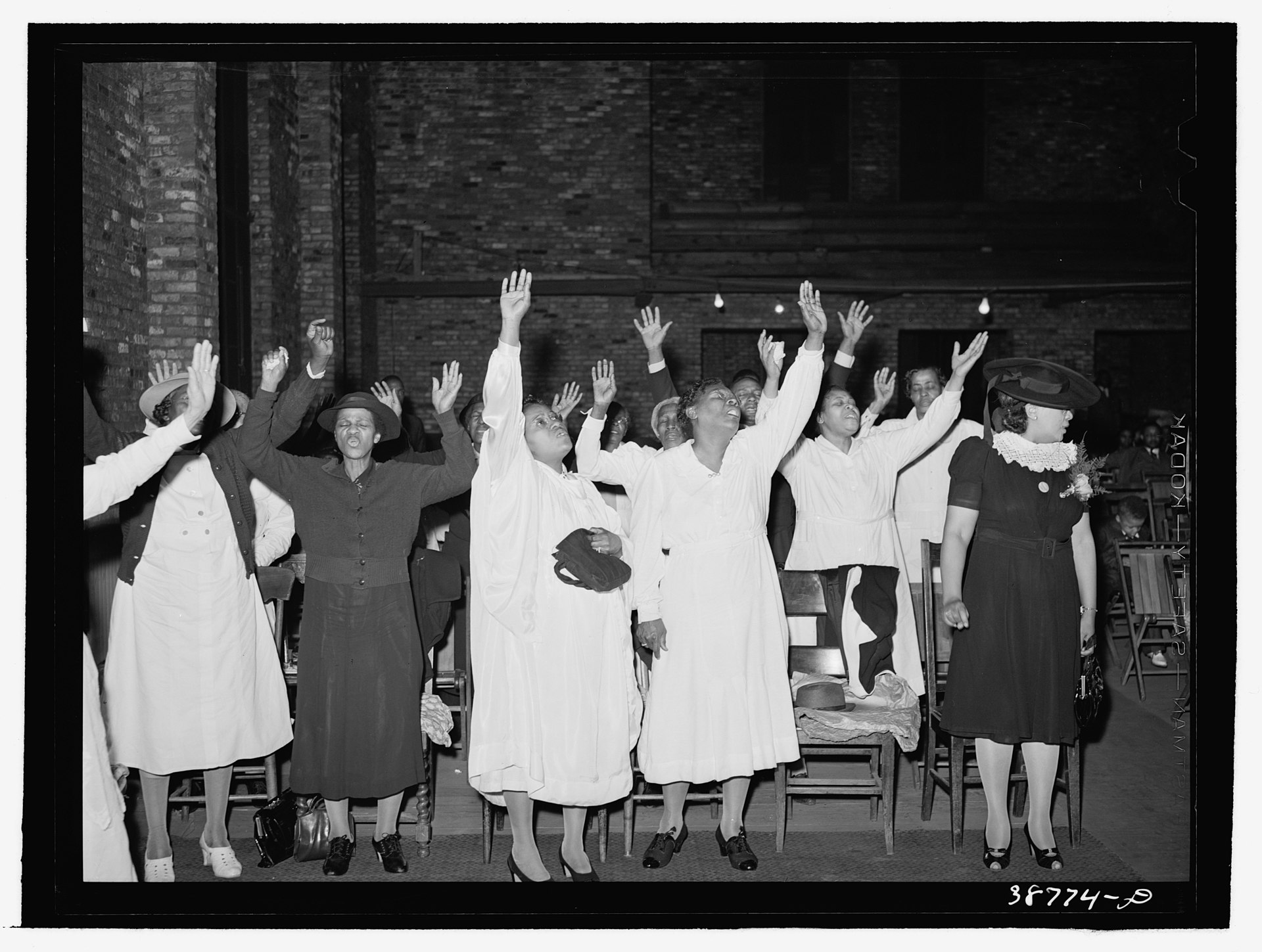 African American conjurers and rootworkers identified as Christian and incorporated the Bible into Hoodoo. Another spiritual institution where African Americans hid their Hoodoo practices was the Sanctified Church, started in Memphis, Tennessee.[357] In the early twentieth century, Bishop Charles Harrison Mason and other African American ministers founded the Church of God in Christ, which has a predominantly African American membership. Bishop Mason was known among his congregation to heal members using roots, herbs, and anointing oil. Bishop Mason and other Pentecostal pastors were rootworkers and used spiritual tools to remove demons and curses from church members. The removal of evil spirits in Black Pentecostal churches involves prayer, playing Black gospel music, anointing oils, and other Hoodoo tools.[358] Author Zora Neale Hurston wrote in her book The Sanctified Church about the spiritual beliefs and conjure practices of the Black congregation in Sanctified Churches. African Americans talked about nailing a horseshoe over the door to ward off evil and making conjure balls to remove diseases. British historians traced the origins of conjure balls in Hoodoo to the West African practice of creating gris-gris charms and the Central African practice of creating minkisi containers.[359] As white spiritual merchants exploited Hoodoo and turned it into just tricks and spells, African Americans moved more of the traditional Hoodoo practices—such as animal sacrifice, incorporating animal parts in spiritual work, Holy Ghost shouting,[360] the ring shout, and other practices—underground and synchronized them with Christianity. Some Sanctified Churches in African American communities continue to incorporate Hoodoo.[361][362] African American religious institutions are not just places of worship and spirituality but also places to discuss injustices in their communities and how to unite to bring about political and spiritual transformations for African Americans.[363] |
聖別教会との関係 アフリカ系アメリカ人の「厳格召命者(conjurers)」やルーツワーカーたちはキリスト教徒とされ、聖書をフードゥーに取り入れた。 アフリカ系アメリカ人がフードゥーの実践を隠すために利用したもう一つの精神的な組織は、テネシー州メンフィスで始まった聖化教会 (Sanctified Church)である。[357] 20世紀初頭、チャールズ・ハリソン・メイソン主教(Bishop Charles Harrison Mason)やその他のアフリカ系アメリカ人の聖職者たちは、アフリカ系アメリカ人が大半を占めるキリストの教会(Church of God in Christ)を創設した。メイソン主教は、根、薬草、聖油を用いて信者を癒すことで、信者の間で知られていた。メイソン主教や他のペンテコステ派の牧師 たちはルーツワーカーであり、教会の信者から悪魔や呪いを追い払うためにスピリチュアルな道具を使用していた。黒人ペンテコステ派の教会における悪霊の祓 いは、祈り、ブラック・ゴスペルの演奏、聖油、その他のフードゥーの道具を使用して行われる。作家ゾラ・ニール・ハーストンは著書『聖別された教会』 で、聖別教会の黒人信者のスピリチュアルな信仰と呪術の実践について書いている。アフリカ系アメリカ人は、悪を追い払うために馬蹄をドアに釘付けにした り、病気を追い払うためにコンジュア・ボールを作ったりしていた。英国の歴史家は、フードゥー教におけるコンジュア・ボールの起源を、西アフリカのグリ グリのお守りや中央アフリカのミンキシ容器の作成の慣習にまで遡っている。[359] スピリチュアルな商品を扱う白人の商人たちがフードゥー教を悪用し、単なる手品や呪文に変えていったため、 動物犠牲、動物の部位を霊的な作業に取り入れること、聖霊の叫び[360]、リング・シャウト、その他の慣習など、アフリカ系アメリカ人はより多くの伝統 的なフードゥーの慣習を地下に潜らせ、キリスト教と同期させた。アフリカ系アメリカ人コミュニティの一部の聖別教会では、フードゥーが今も取り入れら れている。[361][362] アフリカ系アメリカ人の宗教施設は、礼拝や精神性を求める場であるだけでなく、コミュニティにおける不正を議論し、アフリカ系アメリカ人の政治的・精神的 な変革をもたらすために団結する方法を話し合う場でもある。[363] |
| In the African American Faith
movement Hoodoo functioned more as a tool of spiritual healing within Black Protestantism. African American pastors combined Pentecostalism and African-derived traditions of Hoodoo, Voodoo, conjure, and rootwork to heal church members of physical and spiritual ailments. Prosperity theology was taught to church members, as they believed God wanted his children to be prosperous, and prosperity came to those who had faith in God. For example, Reverend Ike preached prosperity to his congregation. African American faith movements emphasize having faith in God's power through fasting, prayer, and sometimes using conjure. Some Black church members believed the power to heal, prophecy, conjure, and curse came from God. However, other church members believed the power to curse came from Satan and that only God's power could remove a demonic curse. Deliverance ministry was preached by Black ministers to wage warfare against demons, which was also a part of Hoodoo culture—believing that praying to God and ancestral spirits could remove demonic curses.[364] Black American faith healers Black faith healers identified as Christian, attended Spiritual churches, and healed church members by laying on their hands, using herbal medicines, and sometimes combining conjure to remove curses and heal physical ailments. Some were also astrologers. Black Americans who practiced Hoodoo called themselves faith healers, herbalists, or divine healers to distinguish themselves from members of their community who practiced conjure to harm people. This tradition of faith healing has its roots in the slave community. When enslaved people needed healing, they searched for members of the slave community who knew herbalism and how to perform spiritual healing.[365] |
アフリカ系アメリカ人の信仰運動において、 フードゥーは、ブラック・プロテスタントにおける精神的な癒しの手段としてより機能した。アフリカ系アメリカ人の牧師たちは、ペンテコステ派とアフリカ 由来のフードゥー、ヴードゥー、呪術、ルーツワークの伝統を融合させ、教会員の身体的・精神的な病を癒すために用いた。教会の信者たちには繁栄の神学が 教えられた。神は子供たちに繁栄を望んでおり、神を信じる者には繁栄が訪れると信じられていたからだ。例えば、アイク牧師は信者たちに繁栄を説いた。アフ リカ系アメリカ人の信仰運動では、断食や祈り、時には呪術の使用を通じて神の力を信じることを強調する。黒人教会の信者の中には、癒し、予言、呪術、呪い の力は神から来ると信じる者もいた。しかし、他の教会の信者は、呪いの力は悪魔から来ると信じ、悪魔の呪いは神の力のみで取り除くことができると考えてい た。黒人牧師たちは、悪魔と戦うための解放の伝道を説いたが、これはフードゥー文化の一部でもあり、神と先祖の霊に祈りを捧げることで悪魔の呪いを解く ことができると信じられていた。[364] 黒人アメリカ人の信仰療法師 キリスト教徒として識別される黒人の信仰療法師は、スピリチュアル教会に通い、手を置いたり、薬草を用いたり、時には呪いを解き、肉体の病気を癒すために 呪術を組み合わせたりして、教会の信者を癒した。また、占星術師である者もいた。フードゥーを実践する黒人アメリカ人は、人々を傷つけるために呪術を実 践するコミュニティのメンバーと自分たちを区別するために、自らを信仰療法師、薬草師、または神の治療師と呼んだ。この信仰療法の伝統は奴隷コミュニティ にその起源を持つ。奴隷が治療を必要とした場合、奴隷コミュニティのなかで薬草学やスピリチュアルな治療のやり方を知っている人物を探した。[365] |
In literature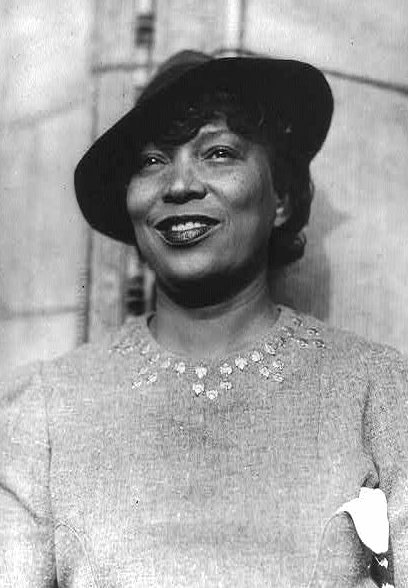 In 1935, Zora Neale Hurston published Mules and Men, her first book about African American folklore and Hoodoo. In 1938, Hurston published Tell My Horse, a book about the practice of Obeah in Jamaica and the practice of Vodou in Haiti.[366] Zora Neale Hurston often employs Hoodoo imagery and references in her writing. In Sweat, the protagonist Delia is a washwoman who fears snakes. Her cruel husband, Sykes, is a devotee of Li Grande Zombi and uses her ophidiophobia against her to establish dominance. Delia learns Voodoo and Hoodoo and manages to hex Sykes. Another book by Hurston features Hoodoo hexes and spells and a Hoodoo doctor.[367] Hurston's professional career was as an anthropologist and a writer. She documented African American folklore and spiritual practices in Black communities in the United States and the Caribbean. Hurston traveled to Eatonville, Florida, and New Orleans, Louisiana, writing about the spiritual practices of Black people, and publishing her findings in books and articles that provided readers with knowledge of African American spirituality.[368][369][370] In 2023, the Public Broadcasting Service created a series of documentaries about Zora Neale Hurston and her research on Black folklore in the African Diaspora and African American spirituality. The series documents Hurston's life and her experience in collecting information on Hoodoo in Black communities in the South, showing photos and interviews with Hurston and her thoughts about African American folk magic, her Hoodoo initiation experience, and her travels to Haiti documenting Vodou.[371] Charles Waddell Chesnutt was a mixed-race African American author who wrote African American folklore, using fiction to reference the culture of Hoodoo in his writings. In 1899, Chesnutt published The Conjure Woman, which tells the story of African Americans after the Civil War and how they used conjure to fix their everyday problems. Additionally, Chesnutt does not portray the African American characters in the book as racially inferior to whites. The African Americans in the book use their wit and intelligence, combining Hoodoo practices to solve their problems. The writing style is phonetic, with Chesnutt using dialogue with language as spoken by African Americans in the South during his time. This provides readers with an example of African American Vernacular and culture. The book also discusses the North's economic opportunist exploitation of the South during the Reconstruction Era and how African Americans navigated this process in their communities.[372][373] Another writer who focused on African American spirituality in their literature is Ishmael Reed. Reed criticizes the erasure of African Americans from the American frontier narrative, as well as exposing the racist context of the American dream and the cultural evolution of the military-industrial complex. He explores the role of Hoodoo in forging a uniquely African American culture. He writes about the Neo-HooDoo aesthetic in African American culture, such as dance, poetry, and quilting. His book Mumbo Jumbo has many references to Hoodoo. Mumbo Jumbo has been considered to represent the relationship between the Westernized African American narrative and the demands of the Western literary canon, and the African tradition at the heart of Hoodoo that has defied assimilation. In his book Yellow Back Radio Broke-Down, the protagonist, the Loop Garoo Kid, acts as an American frontier traveler with the Hoodoo church and curses 'Drag Gibson', the monocultural white American landowner.[374] In Mama Day by Gloria Naylor, Mama Day is a conjure woman with a comprehensive knowledge of plants and the ability to contact her ancestors. The book focuses on the benevolent aspects of Hoodoo as a means for elders to help the community and carry on tradition, with her saving Bernice's fertility.[375] Sassafrass, Cypress & Indigo also explores the deep connection between community empowerment and Hoodoo. In the story, Indigo has healing abilities and makes Hoodoo dolls.[376] Yvonne Chireau from Swarthmore College studied the depictions of Hoodoo and Voodoo in comic books from 1931 to 1993. White comic book creators portrayed Black folk religions as evil, showing demonic possessions in comic books. Blackfaced stereotypical images of African Americans were drawn in comics to vilify Black people and their folk religions. Black American comic book creators portrayed Hoodoo and Voodoo in their comics as tools against white supremacy. Black creators had story scenes in their comics of Black superheroes using their Hoodoo conjure powers to save their people and defeat white supremacists. In 1973, Marvel Comics created a character called Brother Voodoo who stands and fights for justice using his conjure powers.[377][378] Toni Morrison references African American spirituality in her literature. Morrison's novel, Song of Solomon published in 1977, tells the story of the character Milkman, an African American in search of his African ancestors. Milkman lived in the North but returned to the South for his ancestry. By the end of the book, Milkman learns he comes from a family of African medicine people, gains his ancestral powers, and his soul flies back to Africa after he dies. Morrison's idea of Milkman flying back to Africa was inspired by a historical event in Georgia that has become a part of African American folklore of flying Africans. In 1803, a slave ship landed on the coast of Georgia in St. Simons Island with captive Africans from Nigeria, including a cargo of Igbo people. Some of the Igbo people chose suicide rather than a lifetime of slavery by walking into the swamp and drowning. This location became known as Igbo Landing in Georgia. According to African American folklore, the Igbos who committed suicide had their souls fly back to Africa.[379] An African American pre-med student at James Madison University wrote a teen novel published in 2021 titled Me (Moth), about an African American youth named Moth whose grandmother is a Hoodoo practitioner. In the book, Moth searches for her cultural roots after several deaths in her family.[380] |
文学において 1935年、ゾラ・ニール・ハーストンは、アフリカ系アメリカ人の民話とフードゥーに関する最初の著書『Mules and Men』を出版した。1938年、ハーストンはジャマイカのオベア信仰とハイチのヴードゥー教の実践についての本『Tell My Horse』を出版した。 ゾラ・ニール・ハーストンは、自身の著作においてフードゥーのイメージや言及をしばしば用いている。『汗』では、主人公のデリアは蛇を恐れる洗濯女であ る。彼女の残酷な夫、サイクスは「大ゾンビの儀式」の信奉者であり、蛇恐怖症である彼女を支配するためにそれを利用している。デリアはヴードゥー教と フードゥー教を学び、なんとかしてサイクスを呪うことに成功する。ハーストンの別の作品では、フードゥー教の呪いや呪文、フードゥー教の医師が取り 上げられている。[367] ハーストンの職業は人類学者および作家であった。彼女は、アメリカ合衆国およびカリブ海地域の黒人コミュニティにおけるアフリカ系アメリカ人の民間伝承や 精神修養を記録した。ハーストンはフロリダ州イートンヴィルやルイジアナ州ニューオーリンズを訪れ、黒人たちの精神的な実践について執筆し、その調査結果 を書籍や記事で発表し、アフリカ系アメリカ人の精神性に関する知識を読者に提供した。[368][369][370] 2023年、公共放送サービスはゾラ・ニール・ハーストンと、アフリカ系ディアスポラにおける黒人伝承やアフリカ系アメリカ人の精神性に関する彼女の研究 についてのドキュメンタリーシリーズを制作した。このシリーズでは、ハーストンの生涯と、南部の黒人コミュニティにおけるフードゥーに関する情報を収集 した際の経験が記録されており、ハーストン自身の写真やインタビュー、アフリカ系アメリカ人の民間呪術に関する彼女の考え、フードゥーの入信体験、ヴー ドゥーを記録するためにハイチを訪れた際の旅行の様子などが紹介されている。 チャールズ・ワデル・チェスナットは、アフリカ系アメリカ人の民俗学を執筆した混血の作家であり、フードゥー教の文化を参考にするためにフィクションを 用いた。1899年、チェスナットは『魔術師』を出版した。この作品は、南北戦争後のアフリカ系アメリカ人の日常的な問題を魔術で解決しようとする様子を 描いている。さらに、チェスナットは、この本に登場するアフリカ系アメリカ人のキャラクターを、人種的に白人より劣っているとは描いていない。この本に登 場するアフリカ系アメリカ人は、機知と知性を駆使し、フードゥー教の慣習を組み合わせることで、自分たちの問題を解決している。文体は音声表記であり、 チェスナットは、彼が当時南部で耳にしたアフリカ系アメリカ人の話し言葉をそのまま台詞として使用している。これにより、読者はアフリカ系アメリカ人の口 語や文化の一例を知ることができる。この本はまた、再建期における北部の経済的ご都合主義的な南部搾取と、アフリカ系アメリカ人がこの過程をどのようにし て自分たちのコミュニティで乗り切ったかについても論じている。[372][373] アフリカ系アメリカ人の文学における精神性に焦点を当てた作家としては、他にイシュマエル・リードがいる。リードは、アメリカ開拓時代の物語からアフリカ 系アメリカ人が抹消されたことを批判し、アメリカンドリームの差別的背景や軍産複合体の文化的進化を暴露している。彼は、アフリカ系アメリカ人独特の文化 形成におけるフードゥーの役割を探究している。彼は、アフリカ系アメリカ文化におけるネオ・フードゥーの美学、例えばダンス、詩、キルトなどについて 書いている。彼の著書『マンボ・ジャンボ』にはフードゥーに関する多くの言及がある。マンボ・ジャンボ』は、西洋化されたアフリカ系アメリカ人の物語と 西洋の文学の正典の要求との関係、そして同化に抵抗するフードゥーの中心にあるアフリカの伝統を象徴するものとみなされている。彼の著書『Yellow Back Radio Broke-Down』では、主人公のループ・ガルー・キッドが、フードゥー教の教会と呪いとともに、単一文化の白人アメリカ人地主である「ドラッグ・ ギブソン」と対峙するアメリカ開拓時代の旅人として描かれている。 グロリア・ネイラーの『ママ・デイ』では、ママ・デイは植物に関する幅広い知識と先祖と交信する能力を持つ呪術師として描かれている。この本では、年長者 がコミュニティを助け、伝統を継承する手段としてのフードゥーの慈悲深い側面に焦点が当てられ、彼女がバーニスの豊饒を救うというストーリーが展開され る。[375] 『サッサフラス、サイプレス&インディゴ』でも、コミュニティの力とフードゥーの深い結びつきが描かれている。この物語では、インディゴにはヒーリング 能力があり、フードゥー人形を作る。[376] スワースモア大学のイボンヌ・チローは、1931年から1993年までのコミック本におけるフードゥー教とヴードゥー教の描写を研究した。 白人のコミック作家たちは、黒人の民間信仰を悪として描き、コミック本の中で悪魔憑きとして表現した。 コミック本では、アフリカ系アメリカ人のステレオタイプな顔が黒塗りにされ、黒人と彼らの民間信仰を中傷するような描写がなされた。アフリカ系アメリカ人 の漫画家たちは、フードゥー教とヴードゥー教を白人至上主義に対抗する手段として描いた。黒人の漫画家たちは、フードゥー教の呪術の力を使って同胞を 救い、白人至上主義者を打ち負かす黒人のスーパーヒーローの物語を漫画に描いた。1973年、マーベル・コミックは、呪術の力を使って正義のために立ち上 がり戦うブラザー・ヴードゥーというキャラクターを生み出した。 トニ・モリソンは、自身の文学作品においてアフリカ系アメリカ人の霊性について言及している。モリソンの小説『ソング・オブ・ソロモン』(1977年) は、アフリカ系アメリカ人のミルクマンという登場人物がアフリカの祖先を求めて旅をする物語である。ミルクマンは北部に住んでいたが、先祖の地である南部 に戻った。この小説の終わり近くで、ミルクマンは自分がアフリカの薬草に精通した一族の出身であることを知り、先祖代々伝わる力を手に入れ、死後、魂はア フリカへと飛んでいく。 ミルクマンがアフリカへと飛んでいくというモリソンの発想は、アフリカ系アメリカ人の伝説に語り継がれている「アフリカに飛んでいく」という出来事のひと つである、ジョージア州の歴史上の出来事にインスピレーションを得たものである。1803年、奴隷船がナイジェリアから連れてきたイボ族の人々を乗せて、 ジョージア州のセント・サイモンズ島の海岸に上陸した。イボ族の一部は、一生を奴隷として過ごすよりも自殺することを選び、沼地に入って溺死した。この場 所は、ジョージア州のイボ・ランディングとして知られるようになった。アフリカ系アメリカ人の民話によると、自殺したイボ族の人々は魂がアフリカに飛んで 行ったという。 ジェームズ・マディソン大学の医学部進学課程に在籍するアフリカ系アメリカ人の学生が、2021年に出版されたティーン向け小説『Me (Moth)』を執筆した。この小説は、祖母がフードゥー教の信者であるアフリカ系アメリカ人の青年モスを主人公としている。この本の中で、モスは家族 の何人かが亡くなった後、自身の文化的ルーツを探し求める。[380] |
| Neo-Hoodoo Coined by Ismael Reed in 1970, the term "Neo-Hoodoo" celebrates the practices of rituals, folklore, and spirituality in the Americas beyond Christianity and traditional religion. "Neo-Hoodoo believes that every man is an artist and a priest. You can bring your own creative ideas to Neo-Hoodoo."[381] Neo-Hoodoo celebrates Hoodoo in a way that Black practitioners fully express. It is often described as "...terms that respect the syncretism of Voudon-based religious systems". It can be seen as a way of doing things that provides "the Black Artist with a vehicle to merge art with politics without compromising". Neo-Hoodoo is a behavior that gives "'...non-Western voices which express life and creativity' intrude on or break the 'controlling patterns' of the 'dominant culture'".[382] This is a radical form of Black writing that inspires resistance to suppression in the literary world. The ideas expressed in "A Portrait of the Artist as a Shadow of His Former Self" by Kerry James Marshall are compared to Ishmael Reed's Neo-Hoodoo concept of balancing invisibility as visual. The painter describes his work ethic for the painting as being to "...bring that figure close to being a stereotypical representation without collapsing completely into stereotype".[383] The postcolonial theory of Hoodoo and the fact that Hoodoo is neo-African still leads to assumptions that it is uncivilized. Reed's Hoodoo aesthetic celebrates syncretism as a religious cultural practice, countering Western Civilization's desire to universalize itself through Christianity.[384] |
ネオ・フードゥー 1970年にイスマエル・リードによって作られた「ネオ・フードゥー」という用語は、キリスト教や伝統宗教を超えた南北アメリカにおける儀式、民間伝 承、精神性の実践を称えるものである。「ネオ・フードゥーは、人間は誰もが芸術家であり司祭であると信じている。自分の創造的なアイデアをネオ・フー ドゥーに持ち込むことができる」[381] ネオ・フードゥーは、黒人の実践者が完全に表現しているような形でフードゥーを称賛している。それはしばしば「ブードゥー教を基盤とする宗教システム のシンクレティズムを尊重する用語」と表現される。それは「妥協することなく、芸術と政治を融合させる手段を黒人芸術家に提供する」方法と見なすことがで きる。ネオ・フードゥーは、「『西洋以外の声』が『支配的文化』の『支配パターン』に侵入したり、それを打ち破ったりする」という行動である。 [382] これは、文学界における抑圧への抵抗を鼓舞する、ブラック・ライティングの急進的な形態である。 ケリー・ジェームズ・マーシャルによる「アーティストの肖像画としての自身の影」で表現された考え方は、イシュマエル・リードのネオ・フードゥー概念で ある「不可視性を視覚として均衡させる」という考え方と比較されている。画家は、この絵画の制作姿勢について、「...その人物像をステレオタイプに近づ けつつも、完全にステレオタイプに陥ることなく」と表現している。[383] フードゥーに関するポストコロニアル理論と、フードゥーがネオ・アフリカ的であるという事実から、未だにフードゥーは未開であるという思い込みにつ ながっている。リードのフードゥー美学は、キリスト教を通じて自らを普遍化しようとする西洋文明の欲望に反発し、宗教的文化実践としてのシンクレティズ ムを称賛している。[384] |
Slave narratives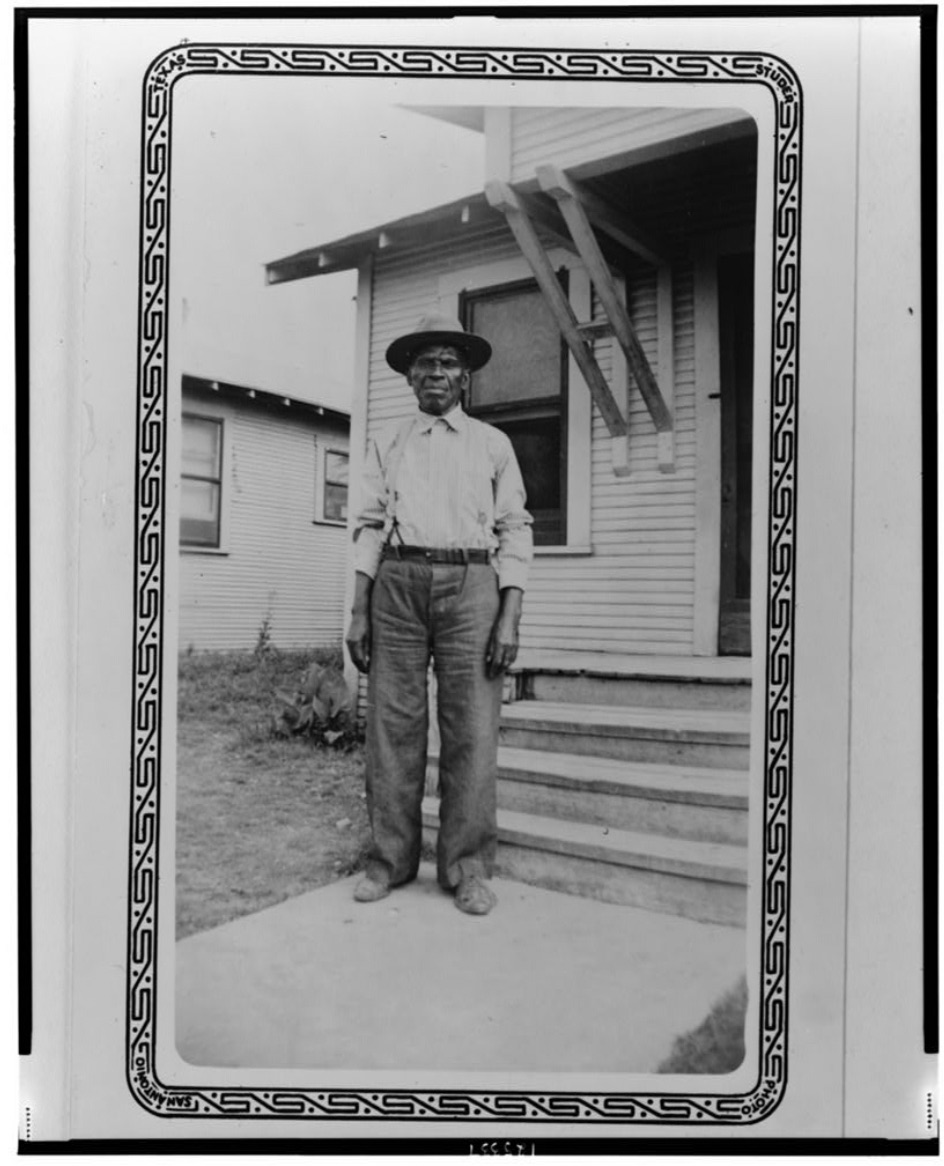 Photo of an ex-slave William Watkins from the WPA slave narratives. In the 1930s, the Federal Writers' Project, part of the Works Progress Administration during the Great Depression, provided jobs for unemployed writers to write and collect the experiences of formerly enslaved people. Writers, both Black and white, documented the experiences of the last generation of African Americans born into slavery. Formerly enslaved African Americans told writers about their slave experiences, providing readers with a glimpse into the lives of the enslaved. Slave narratives revealed the culture of African Americans during slavery. Formerly enslaved African Americans talked about conjure, rootwork, Hoodoo, healing with herbs, removing curses, talking to spirits, using graveyard dirt to curse people, divination with cards and a walking boy, Hoodoo in Black churches, hiding conjure practices from their enslavers, cursing their enslavers, animal sacrifice, and other conjure practices. "Hoodoo, as used in the ex-slave narratives, is used to describe attempts to control the actions and health of other people (or prevent others from controlling you) through the use of potions, charms, and incantations."[385] Some of the formerly enslaved African Americans told writers what region of Africa their family was from. These regions were the Kongo or areas in West Africa. The Library of Congress has 2,300 first-person accounts from formerly enslaved people in their digital archive.[386][387] In slave narratives, African Americans revealed that some of them were kidnapped directly from Africa and brought to America. These slave narratives coincide with the illegal slave trade. In 1807, the 9th United States Congress passed an act that prohibited the importation of slaves from Africa. However, this act did not stop the illegal smuggling of enslaved Africans to the United States. The illegal slave trade continued into the 1860s and sometimes resulted in a re-Africanization of African American culture with the importation of new Africans to the United States.[388][387] Some of these illegal slave trades were documented in American history. For example, the slave ship the Wanderer landed in Jekyll Island, Georgia in 1858 with a cargo of 409 Africans. The Wanderer departed near the Congo River in Central Africa.[389] In the 1930s, a local chapter of the Federal Writers' Project in Savannah, Georgia, called the Georgia Writers' Project, interviewed formerly enslaved people and descendants of formerly enslaved people who either came directly from Africa on the slave ship the Wanderer or had a family member come from Africa on the Wanderer. They published their findings in a book called, "Drums and Shadows: Survival Studies Among the Georgia Coastal Negroes."[390] The Georgia Writers' Project documented Hoodoo and conjure practices among African Americans in Georgia and traced the practices to West Africa and the Kongo region, as some African Americans knew what region in Africa a family member was from. One woman interviewed in St. Simons, Georgia said her father came from Africa on the Wanderer slave ship. She thinks her father was Igbo, and he talked about his life in Africa, the culture there, and how it survived in her family. Other African Americans interviewed talked about the origins of their conjure practices from the Ewe and Kongo people. For example, in West Africa, graveyard dirt is placed inside conjure bags to protect against Juju. The West African practice of using graveyard dirt continues in the United States in Black communities today in the African American tradition of Hoodoo.[391][392][393] Africatown, north of Mobile, Alabama, is another legacy of the illegal slave trade and African culture in the United States. In 2012, Africatown was placed on the National Register of Historic Places for its significance in African American history. On July 8, 1860, the slave ship Clotilda was the last slave ship to transport Africans to the United States. The Clotilda entered the Mississippi Sound in Alabama with 110 Africans. The Africans imported to Alabama illegally came from West Africa, and the ethnic groups coming from the region were Atakora, Ewe, Fon, and Yoruba. Each group brought their religions and languages. Some in the group practiced West African Vodun, Islam, and the Yoruba religion. Mobile, Alabama, became the home for these diverse Africans, where their religious and spiritual practices blended with Christianity. After the Civil War, a group of 32 Africans founded a community, calling it Africatown. In the community, they practiced African burial practices for their dead. African names were given to their children so they would know what region in Africa their ancestry was from. Zora Neale Hurston wrote a book about Africatown called, Barracoon: The Story of the Last "Black Cargo". Hurston interviewed Cudjoe Lewis, one of the founders of Africatown and one of the few who survived the last Middle Passage to the United States.[394][395][396] Scholars estimate that about 250,000 enslaved Africans were brought to the United States illegally between 1808 and 1859. This resulted in the further Africanization of African American spirituality in the coastal regions of the Southeast because many of the slave ships landed in the coastal areas of the South.[397][398] |
奴隷の物語 WPAの奴隷の物語より、元奴隷ウィリアム・ワトキンスの写真。 1930年代、大恐慌時代に公共事業促進局の一部として設立された連邦作家プロジェクトは、失業中の作家たちに仕事を提供し、かつて奴隷であった人々の経 験を書き、収集させた。黒人および白人の作家たちは、奴隷として生まれた最後の世代であるアフリカ系アメリカ人の経験を記録した。かつて奴隷であったアフ リカ系アメリカ人は、作家たちに奴隷としての経験を語り、読者たちに奴隷の生活を垣間見せた。奴隷の証言は、奴隷制時代の黒人文化を明らかにした。かつて 奴隷であった黒人たちは、コンジャー、ルーツワーク、フードゥー、ハーブを使った治療、呪いの除去、霊との対話、墓地の土を使って人を呪うこと、カード を使った占い、ウォーキング・ボーイ、黒人教会におけるフードゥー、奴隷制者たちにコンジャー(まじない師)の実践を隠していたこと、奴隷制者たちを 呪ったこと、動物犠牲、その他のコンジャーの実践について語った。「奴隷解放後の証言で使われるフードゥーは、薬や護符、呪文を使って他人の行動や保健 をコントロールしようとする(あるいは他人にコントロールされないようにする)試みを指す」[385] かつて奴隷であったアフリカ系アメリカ人の一部は、作家たちに自分たちの家族がアフリカのどの地域出身であるかを語った。これらの地域は、コンゴまたは西 アフリカの地域であった。米国議会図書館のデジタルアーカイブには、元奴隷の人々による2,300件の一人称による証言が収められている。[386] [387] 奴隷の証言では、アフリカ系アメリカ人の一部はアフリカから直接拉致され、アメリカに連れて来られたことが明らかになっている。これらの奴隷の証言は、違 法な奴隷貿易と一致している。1807年、第9回米国議会はアフリカからの奴隷の輸入を禁止する法律を可決した。しかし、この法律はアフリカ系アメリカ人 の違法な密輸を阻止することはできなかった。この違法な奴隷貿易は1860年代まで続き、時には新たなアフリカ人がアメリカに輸入されることで、アフリカ 系アメリカ人の文化が再びアフリカ化される結果となった。[388][387] これらの違法な奴隷貿易の一部は、アメリカ史に記録されている。例えば、1858年に奴隷船ワンダラー号が409人のアフリカ人を乗せてジョージア州ジキ ル島に到着した。ワンダラー号は中央アフリカのコンゴ川付近を出航した。[389] 1930年代、ジョージア州サバンナの連邦作家プロジェクトの支部であるジョージア作家プロジェクトは、ワンダラー号で直接アフリカから来たか、あるいは ワンダラー号でアフリカから来た家族を持つ、かつて奴隷であった人々やその子孫たちにインタビューを行った。彼らは調査結果を「Drums and Shadows: Survival Studies Among the Georgia Coastal Negroes(太鼓と影:ジョージア州沿岸ニグロの生存研究)」という本にまとめた。[390] ジョージア作家プロジェクトは、ジョージア州のアフリカ系アメリカ人の間で行われていたフードゥー教と魔術の慣習を記録し、その慣習が西アフリカとコン ゴ地域にまで遡ることを明らかにした。 ジョージア州のセント・サイモンズでインタビューを受けたある女性は、父親がWanderer号という奴隷船でアフリカから来たと言った。彼女は父親がイ ボ族出身で、父親はアフリカでの生活や文化、そしてそれが家族の中でどのように生き残っているかについて話していたと語っている。 他のアフリカ系アメリカ人のインタビューでは、彼らのコンジャーの起源をエウェ族やコンゴ族に求める声もあった。 例えば、西アフリカでは、ジュジュから身を守るために、墓地の土をコンジャーの袋の中に入れる。西アフリカの墓地の土を使用する慣習は、フードゥー教の 伝統を受け継ぐアフリカ系アメリカ人のコミュニティで、現在も米国で続けられている。[391][392][393] アラバマ州モービルの北にあるアフリカタウンは、米国における違法な奴隷貿易とアフリカ文化のもう一つの遺産である。2012年、アフリカタウンはアフリ カ系アメリカ人の歴史におけるその重要性が認められ、国家歴史登録財に登録された。1860年7月8日、奴隷船クロティルダ号は、アフリカ人を米国に運ん だ最後の奴隷船となった。クロティルダ号は110人のアフリカ人を乗せてアラバマ州のミシシッピ湾に入った。アラバマ州に違法に輸入されたアフリカ人は西 アフリカ出身で、アタコラ族、エウェ族、フォン族、ヨルバ族といった民族がいた。各グループはそれぞれの宗教や言語を持ち込んでいた。そのうちのいくつか のグループは、西アフリカのヴードゥン教、イスラム教、ヨルバ教を信仰していた。アラバマ州モービルは、これらの多様なアフリカ人たちの故郷となり、彼ら の宗教的・精神的な慣習はキリスト教と融合した。南北戦争後、32人のアフリカ人グループがコミュニティを設立し、それをアフリカタウンと名付けた。その コミュニティでは、死者の埋葬はアフリカの慣習に従って行われた。子供たちにはアフリカの名前がつけられ、アフリカのどの地域に祖先がいたのかを知るよう にした。ゾラ・ニール・ハーストンは、アフリカタウンについて書いた『バラクーン:最後の「黒人貨物」の物語』という本を著した。ハーストンは、アフリカ タウンの創設者の一人であり、アメリカ合衆国への最後の奴隷貿易「ミドル・パッセージ」を生き延びた数少ない人物の一人であるクドゥー・ルイスにインタ ビューした。 学者の推定によると、1808年から1859年の間に、およそ25万人の奴隷として連行されたアフリカ人が米国に不法入国した。奴隷船の多くが南部の沿岸 地域に到着したため、この結果、南部沿岸地域ではアフリカ系アメリカ人の精神性がさらにアフリカ化することになった。[397][398] |
In blues music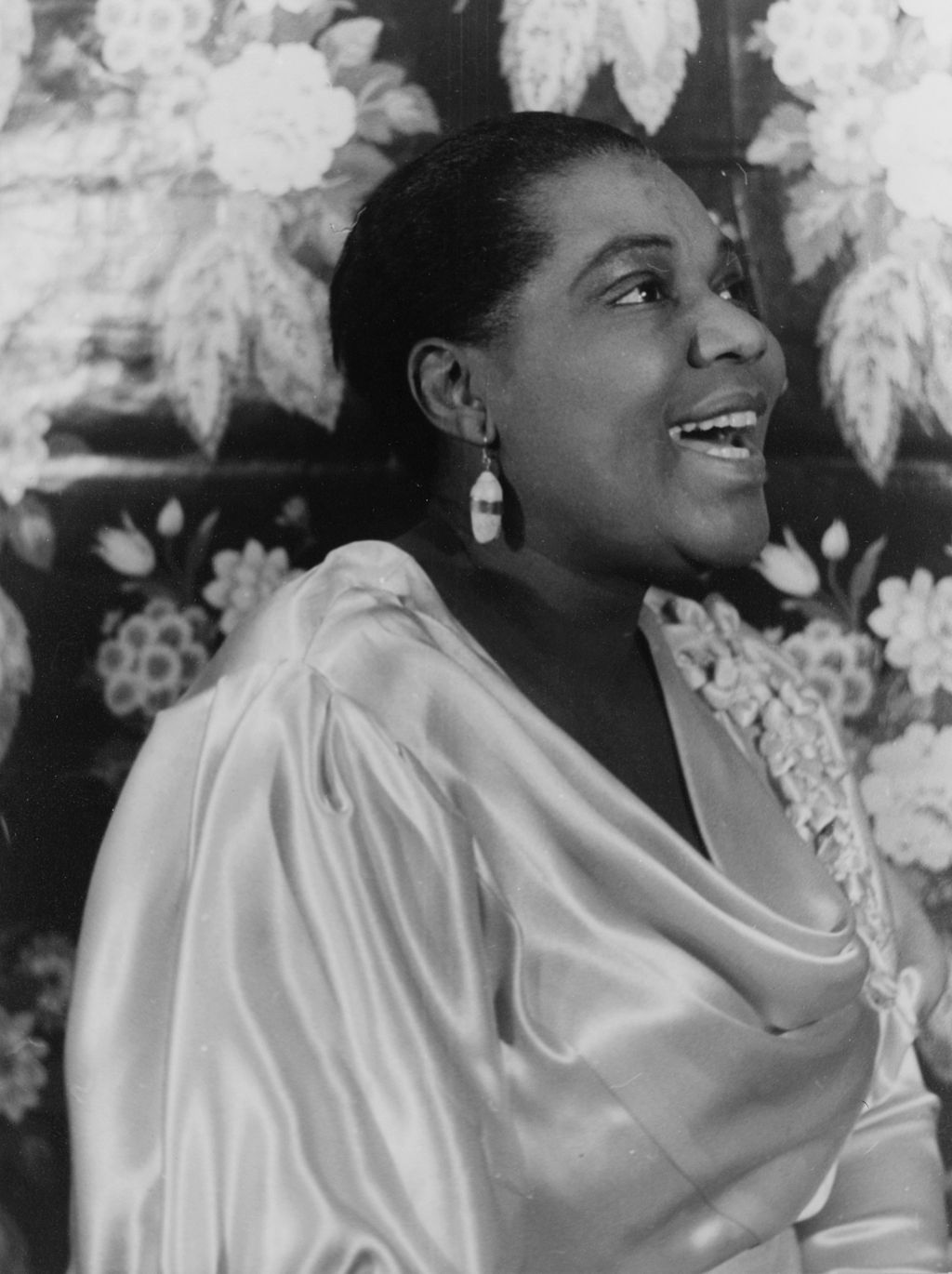 Bessie Smith wrote and performed several blues songs that reference Hoodoo. Several African American blues singers and musicians composed songs about the culture of Hoodoo, including W.C. Handy, Bessie Smith, Robert Johnson, Big Lucky Carter, and Al Williams. The culture of Hoodoo influenced African American blues performers, who wrote songs about mojo bags, love workings, and spirits. Their songs brought awareness of Hoodoo practices to the American mainstream population. Several blues songs describe love charms or other folk magic. In her "Louisiana Hoodoo Blues", Gertrude Ma Rainey sang about a Hoodoo work to keep a man faithful: "Take some of you hair, boil it in a pot, Take some of your clothes, tie them in a knot, Put them in a snuff can, bury them under the step...."[399] Bessie Smith's song "Red Mountain Blues" tells of a fortune teller who recommends that a woman get some snakeroot and a High John the Conqueror root, chew them, place them in her boot and pocket to make her man love her. Several other Bessie Smith songs also mention Hoodoo.[400] The song "Got My Mojo Working", written by Preston "Red" Foster in 1956 and popularized by Muddy Waters throughout his career, addresses a woman who can resist the power of the singer's Hoodoo amulets. Bo Diddley's song "Who Do You Love?" alludes to hoodoo, and the title is a pun on the word hoodoo. Hoodoo practitioner Aunt Caroline Dye was born enslaved in Spartanburg, South Carolina and sold to Newport, Arkansas as a child, where she became known for soothsaying and divination with playing cards.[401] She is mentioned by name in the Memphis Jug Band's "Aunt Caroline Dye Blues" (1930) and in Johnny Temple's song "Hoodoo Woman" (1937).[402] Blues singer Robert Johnson is known for his song about going "down to the crossroads" to sell his soul to the devil to become a better musician. Some authors suggest that the song invokes a Hoodoo belief in crossroads spirits, a belief that originated in Central Africa among the Kongo people.[403][404][405] However, the devil figure in Johnson's song, a black man with a cane who haunts crossroads, closely resembles Papa Legba, a spirit associated with Louisiana Voodoo and Haitian Vodou.[406][407] |
ブルース音楽では、 ベッシー・スミスがフードゥーを題材にしたブルースの楽曲をいくつか作曲し、演奏した。 W.C.ハンディ、ベッシー・スミス、ロバート・ジョンソン、ビッグ・ラッキー・カーター、アル・ウィリアムスなど、アフリカ系アメリカ人のブルース歌手 やミュージシャンが、フードゥーの文化を題材にした楽曲を作曲した。フードゥーの文化は、アフリカ系アメリカ人のブルース演奏家に影響を与え、彼らは モジョバッグ、ラブワークス、精霊を題材にした楽曲を作曲した。彼らの楽曲は、フードゥーの慣習をアメリカの大衆に知らしめることとなった。 いくつかのブルースの歌では、愛のお守りやその他の民間呪術について歌われている。 ジェートルード・マ・レイニーは「ルイジアナ・フードゥー・ブルース」で、男性の忠誠心を保つためのフードゥーの呪術について歌っている。「あなたの 髪の毛を少し取って鍋で茹でて、あなたの服を少し取って結び目を作って、嗅ぎタバコ入れに入れて、階段の下に埋めるのよ...」[399] ベッシー・スミスの 「レッド・マウンテン・ブルース」という曲では、ある占い師が、女性に蛇の根とヒヨドリジョウゴの根を手に入れ、それを噛み、ブーツとポケットに入れてお くように勧める。そうすれば、男に愛されるようになるだろう、と。ベッシー・スミスの他のいくつかの楽曲でもフードゥーについて言及されている。 [400] 1956年にプレストン・レッド・フォスターが作曲し、マディ・ウォーターズがキャリアを通じて演奏したことで知られる楽曲「Got My Mojo Working」は、シンガーの持つフードゥーのお守りの力を跳ね返すことのできる女性について歌っている。 ボ・ディドリーの楽曲「Who Do You Love?」はフードゥーについて言及しており、タイトルはフードゥーという言葉をもじったものである。 フードゥーの実践者であるキャロライン・ダイは、サウスカロライナ州スパータンバーグで奴隷として生まれ、幼少時にアーカンソー州ニューポートに売ら れ、そこでトランプを使った占いで知られるようになった。[401] 彼女はメンフィス・ジャグ・バンドの「Aunt Caroline Dye Blues」(1930年)やジョニー・テンプルの「Hoodoo Woman」(1937年)でも名前が挙げられている。[402] ブルース歌手のロバート・ジョンソンは、より優れたミュージシャンになるために悪魔に魂を売り渡すために「十字路まで下りていく」という歌で知られてい る。一部の著者は、この曲はフードゥー教の「交差路の精霊」信仰を想起させるもので、その信仰は中央アフリカのコンゴ族に起源を持つと主張している。 [403][404][405] しかし、ジョンソンの歌に登場する悪魔の姿、すなわち杖を持ち交差路に現れる黒人男性は、ルイジアナ・ヴードゥーやハイチ・ヴードゥーと関連する精霊であ るパパ・レグバに酷似している。[406][407] |
| Concerns about cultural
appropriation African Americans created the culture of Hoodoo. There are regional styles to this tradition, and as African Americans traveled, the tradition of Hoodoo changed according to African Americans' environment. Hoodoo includes reverence to ancestral spirits, African American quilt making, animal sacrifice, herbal healing, Bakongo and Igbo burial practices, Holy Ghost shouting, praise houses, snake reverence, African American churches, spirit possession, nkisi and minkisi practices, Black Spiritual churches, Black theology, the ring shout, the Kongo cosmogram, Simbi nature spirits, graveyard conjure, the crossroads spirit, making conjure canes, incorporating animal parts, pouring of libations, Bible conjure, and conjuring in the African American tradition. By the twentieth century, white drugstore owners and mail-order companies owned by white Americans changed the hoodoo culture. The hoodoo that is practiced outside the African American community is not the hoodoo created by African Americans. It is called a "marketeered" hoodoo.[408] Other words for marketeered hoodoo are commercialized or tourist hoodoo. Hoodoo was modified by white merchants and replaced with fabricated practices and tools. In contrast, some of the hoodoo practices by African Americans in the twentieth century into the present day went underground. Marketeered hoodoo spread further outside the African American community into other communities when hoodoo was marketed on the internet.[409] There are a plethora of videos on the internet of people fabricating spells calling them hoodoo and others claiming to be experts on hoodoo and offering paid classes and writing books. As a result, people outside of the African American community think marketeered hoodoo is authentic Hoodoo. Scholars are concerned about the number of people who are not from the African American community writing books on Hoodoo because they have reduced Hoodoo to just spells and tricks. Hoodoo is about how to hex people and cast candle spells for love and money. This portrays hoodoo negatively, and turned it materialistic.[410][411][412] For example, High John the Conqueror in African American folk stories is a Black man from Africa enslaved in the United States whose spirit resides in a root conjured in Hoodoo. White American drugstore owners replaced conjure doctors in African American communities and began putting an image of a white man on their High John the Conqueror product labels. As a result, some people do not know the African American folk hero High John the Conqueror is a Black man.[413] Scholars define the Hoodoo practiced by African Americans as "Old Black Belt Hoodoo." Traditional hoodoos of African American people went into hiding by the twentieth century into the present day. There is a spiritual philosophy in Hoodoo, and the tradition does have a missing theology that was taken out by the spiritual merchants who wanted to profit from an African American spiritual tradition.[414] Charlatans used Hoodoo to make money, and changed the tradition as a form of selfish magic that is all about spells for love, money, and hexes to sell candles, oils, and trinkets. This kind of Hoodoo presented by charlatans, not from the Black community, is the hoodoo most people know. The Spiritual Church, the Sanctified church, and praise houses in Black communities are where traditional Hoodoo continues to be practiced by African Americans.[415] One scholar traced manufactured hoodoo to the Great Migration of African Americans from the South to the North. African American folk magic changed in urban northern areas as African-Americans did not have access to fresh herbs and roots from their backyards or neighborhoods, and some bought their supplies from stores that profited from African American folk practices. White merchants profited from African American folk magic and placed stereotypical images of Indians onto hoodoo product labels to sell merchandise that appeared mystical, exotic, and powerful.[416] According to some scholars, the research and understanding of African American Hoodoo should be examined from the Black American experience and not from the interpretation of marketeers and exploiters found in books and online published by people who are not African American. White Americans want to appropriate Black culture and claim it as their own for profit.[417][418] With the advent of the internet, African American music and culture has become consumed more rapidly around the world daily. The internet resulted in the mass consumption and appropriation, and sometimes mocking of Black culture by whites and non-Black people in social media.[419] As one scholar explained, "The cultural marketplace of items and ideas has handled the faith and practice of hoodoo roughly. Instead of being viewed as a legitimate religion, it is perceived as a system of magic rife with effeminate witchdoctors, pin cushioned voodoo dolls, and miscellaneous artifacts that can be bought and sold." The appropriation of hoodoo is based on ignorance about African American cultural history and hoodoo's ties to Black people.[420] |
文化の盗用に対する懸念 フードゥーの文化はアフリカ系アメリカ人によって生み出された。この伝統には地域ごとの様式があり、アフリカ系アメリカ人が旅をするにつれ、フードゥーの 伝統は彼らの置かれた環境に応じて変化していった。フードゥーには、祖先の霊への畏敬、アフリカ系アメリカ人のキルト作り、動物犠牲、薬草療 法、バコンゴ族とイボ族の埋葬の慣習、聖霊の叫び、賛美の家、蛇への畏敬、アフリカ系アメリカ人の教会、霊の憑依、ンキシーとミンキシーの慣習、黒人霊歌 の教会 、ブラック・スピリチュアリティ、リング・シャウト、コンゴの宇宙図、シンビの自然霊、墓地での呪術、交差点の精霊、呪術用の杖の作り方、動物の体の一部 を取り入れること、お酒を注ぐこと、聖書を使った呪術、そしてアフリカ系アメリカ人の伝統における呪術。20世紀になると、白人経営のドラッグストアや、 白人所有の通信販売会社がフードゥー文化を変えていった。アフリカ系アメリカ人コミュニティ以外で行われるフードゥーは、アフリカ系アメリカ人が作り 出したフードゥーではない。それは「マーケティングされた」フードゥーと呼ばれる。[408] マーケティングされたフードゥーの別称には、商業化されたフードゥーや観光フードゥーなどがある。フードゥーは白人商人によって修正され、作り話 や道具に置き換えられた。これとは対照的に、20世紀から今日に至るまで、アフリカ系アメリカ人によるフードゥーの実践の一部は地下に潜った。マーケ ティング化されたフードゥーは、インターネット上でフードゥーが販売されるようになったことで、アフリカ系アメリカ人コミュニティの外にもさらに広 がった。[409] インターネット上には、呪文を捏造する人々や、フードゥーの専門家を名乗り、有料のクラスを開いたり本を書いたりする人々を撮影した動画が数多く存在す る。その結果、アフリカ系アメリカ人コミュニティ以外の者たちは、マーケティングされたフードゥーを本物のフードゥーだと考えている。学者たちは、ア フリカ系アメリカ人コミュニティ以外の者たちがフードゥーに関する本を書いていることを懸念している。なぜなら、彼らはフードゥーを呪文やトリックに 還元しているからだ。フードゥーとは、人を呪ったり、愛や金銭を得るためのキャンドル・スペルを唱えたりする方法である。これはフードゥーを否定的に 描いており、物質主義的なものに変えてしまった。[410][411][412] 例えば、アフリカ系アメリカ人の民話に登場するハイ・ジョン・ザ・コンケラーは、アフリカからアメリカに連れてこられて奴隷となった黒人男性であり、その 魂はフードゥーで呼び出された根っこに宿っている。アフリカ系アメリカ人コミュニティでは、白人経営のドラッグストアが呪術医に取って代わり、ハイ・ ジョン・ザ・コンケラーの製品ラベルに白人の男性の画像を載せるようになった。その結果、アフリカ系アメリカ人の民間伝承の英雄ハイ・ジョン・ザ・コンケ ラーが黒人男性であることを知らない人もいる。 学者たちは、アフリカ系アメリカ人が実践するフードゥーを「オールド・ブラック・ベルト・フードゥー」と定義している。アフリカ系アメリカ人の伝統的 なフードゥーは、20世紀から現在に至るまで姿を潜めている。フードゥーには精神的な哲学があり、アフリカ系アメリカ人の精神的な伝統から利益を得よ うとする霊媒師たちによって、その伝統から神学が失われてしまったのである。[414] 詐欺師たちはフードゥーを利用して金儲けをし、伝統を自分勝手な呪術の形に変えてしまった。それは、ろうそく、オイル、装身具を売るための、愛、金、呪 いの呪文に関するものばかりである。こうした、ブラック・コミュニティ出身者ではないペテン師たちによるフードゥーこそが、一般の人々が知るフードゥーで ある。ブラック・コミュニティのスピリチュアル教会、聖別教会、賛美歌の集まる家々では、アフリカ系アメリカ人によって伝統的なフードゥーが今 もなお実践されている。ある学者は、人為的に作られたフードゥーを、南部から北部へのアフリカ系アメリカ人の大移動にまで遡って辿っている。アフリカ系 アメリカ人の民間呪術は、アフリカ系アメリカ人が裏庭や近隣から新鮮なハーブや根を手に入れることができなかったため、北部の都市部で変化した。また、一 部の者は、アフリカ系アメリカ人の民間儀式から利益を得ている店から材料を購入していた。白人商人たちは、アフリカ系アメリカ人の民間呪術から利益を得て おり、神秘的な、エキゾチックな、強力な商品に見えるように、フードゥー商品のラベルにステレオタイプなインディアンのイメージを配置した。 一部の学者によれば、アフリカ系アメリカ人のフードゥーの研究と理解は、アフリカ系アメリカ人の経験からではなく、アフリカ系アメリカ人ではない人々に よって書籍やオンラインで発表されたマーケティング担当者や搾取者の解釈から検討されるべきである。 白人アメリカ人は黒人文化を自分たちのものとして利益のために利用しようとしている。[417][418] インターネットの出現により、アフリカ系アメリカ人の音楽や文化は、世界中で日々急速に消費されるようになった。インターネットは、大量消費と流用をもた らし、ソーシャルメディアでは白人と非黒人による黒人文化の嘲笑さえも引き起こしている。 ある学者は次のように説明している。「物品やアイデアの文化市場は、フードゥーの信仰と実践を粗雑に扱ってきた。正当な宗教として見なされる代わりに、 女性的な呪術医やクッションに刺したヴードゥー人形、売買可能なさまざまな物品で溢れた呪術体系として認識されている。」フードゥーの流用は、アフリカ 系アメリカ人の文化史やフードゥーと黒人とのつながりに対する無知に基づいている。[420] |
| Traditional
African religion portal Religion of Black Americans |
アフリカの伝統宗教ポータル 黒人アメリカ人の宗教 |
| External links Hoodoo in America Reviving history: The appropriation of Voodoo and Hoodoo in the French Quarter Hoodoo Heritage Month: Conjuring, Culture, And Community West Tennessee Museum of Southern Hoodoo History Memphis Hoodoo & St. Paul's Spiritual Holy Temple Zora and The Hunt for Hoodoo in New Orleans Uncovering the Power of Hoodoo: An Ancestral Journey Ginseng, Hoodoo, and the Magic of Upholding African American Earth-Based Traditions Haints Of Hoodoo: The Black Ghosts Of The Gullah Geechee Folklore In Video Episode 1: Haints of Hoodoo Hoodoo, Conjure, and Rootwork Black women embrace the spiritual realm Haints & Gullah Ghost Palmetto Scene |
外部リンク アメリカにおけるフッドゥー 歴史の復活:フレンチ・クオーターにおけるヴードゥーとフッドゥーの受容 フッドゥー遺産月間:魔術、文化、そしてコミュニティ ウェスト・テネシー南部フッドゥー歴史博物館 メンフィス・フッドゥーとセント・ポールのスピリチュアル・ホーリー・テンプル ゾラとニューオーリンズのフッドゥー探索 フッドゥーの力を解き放つ:先祖の旅 ジンセン、フードゥー、そしてアフリカ系アメリカ人の大地に根ざした伝統を支える呪術的要素 フードゥーの精霊:ガラー・ギーシーの黒い亡霊 ビデオエピソード1:フードゥーの精霊 フードゥー、コンジャー、ルーツワーク 黒人女性が精神世界を受け入れる 精霊とガラーの亡霊 パルメットの風景 |
| https://en.wikipedia.org/wiki/Hoodoo_(spirituality) |
リ ンク
文 献
そ の他の情報
CC
Copyleft, CC, Mitzub'ixi Quq Chi'j, 1996-2099
☆
 ☆
☆